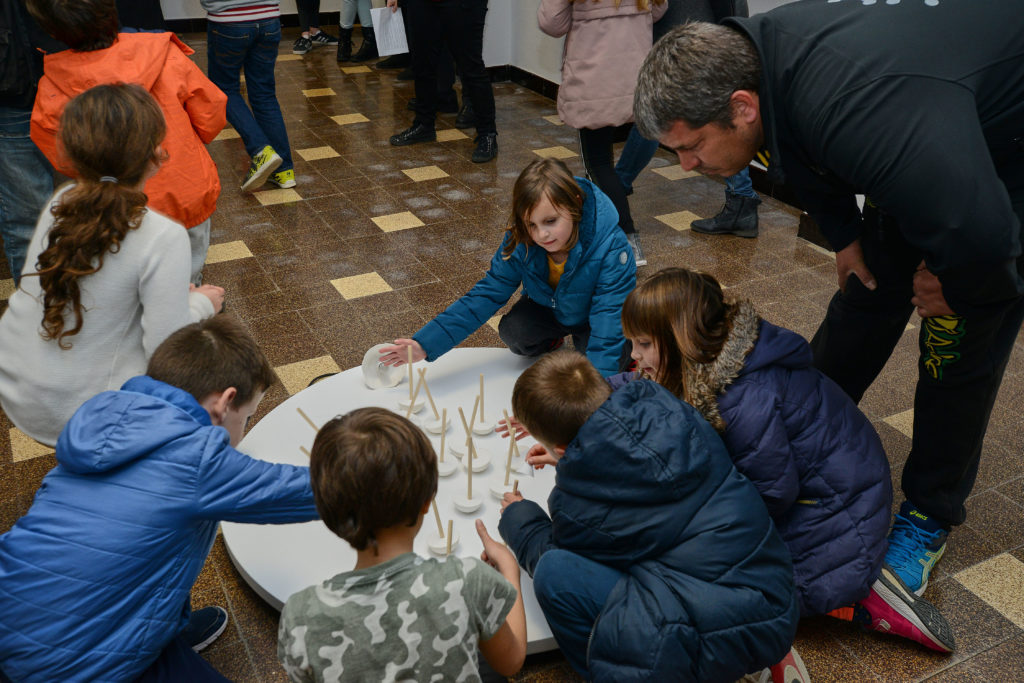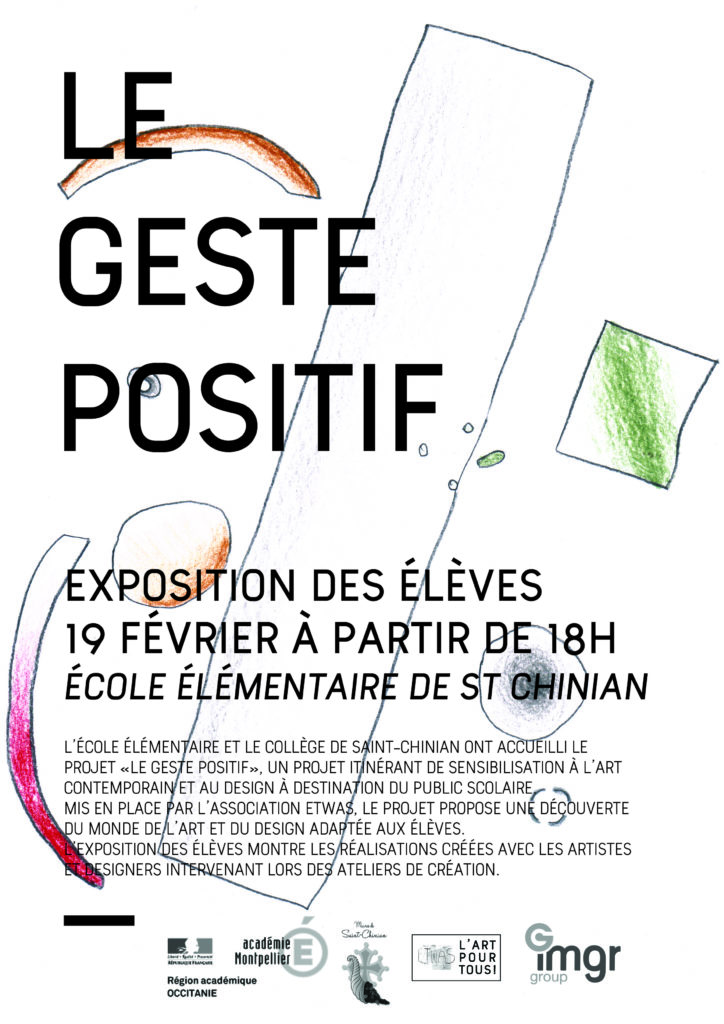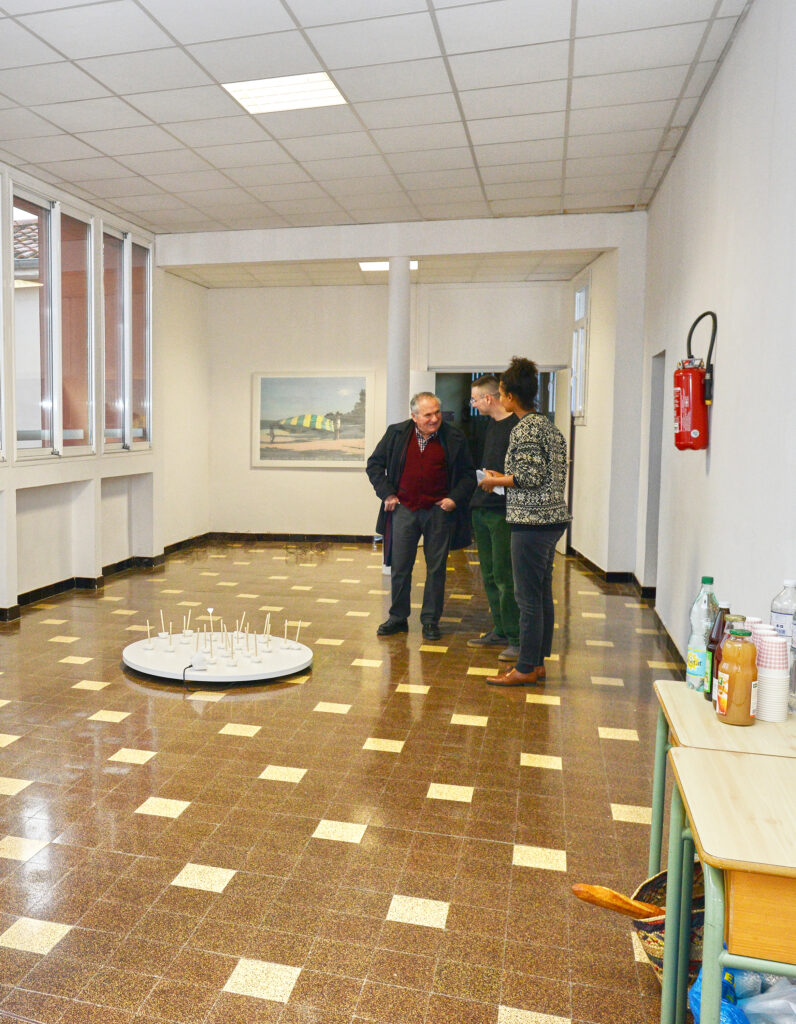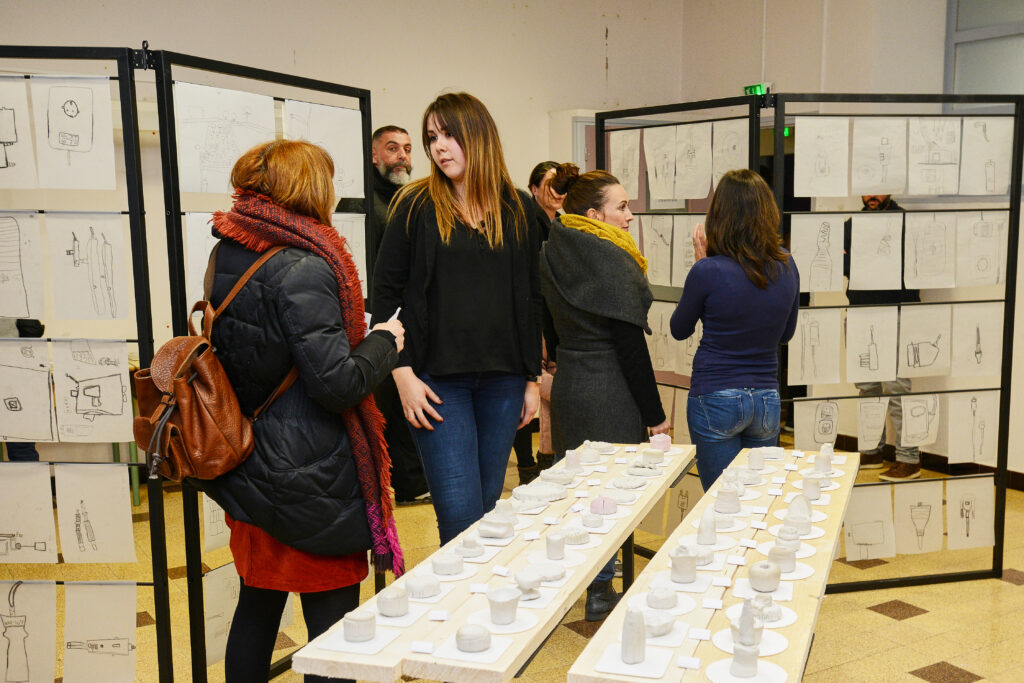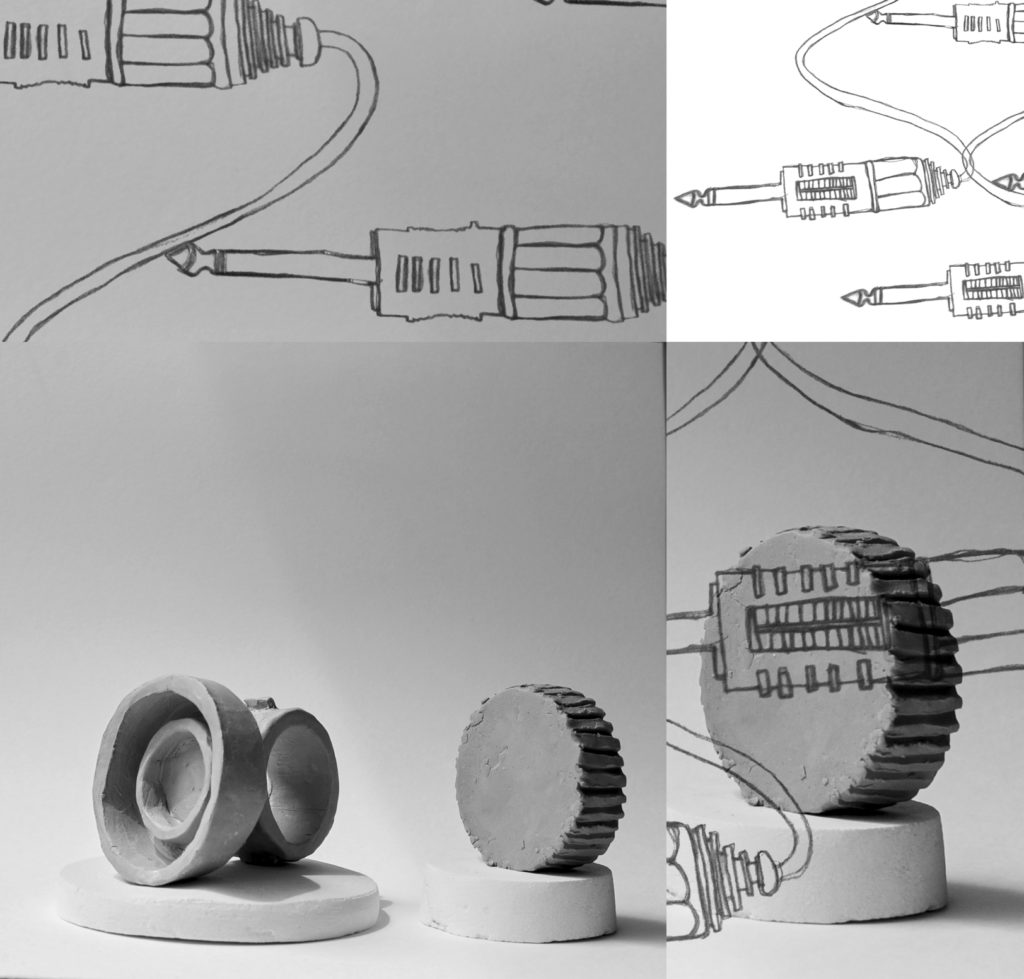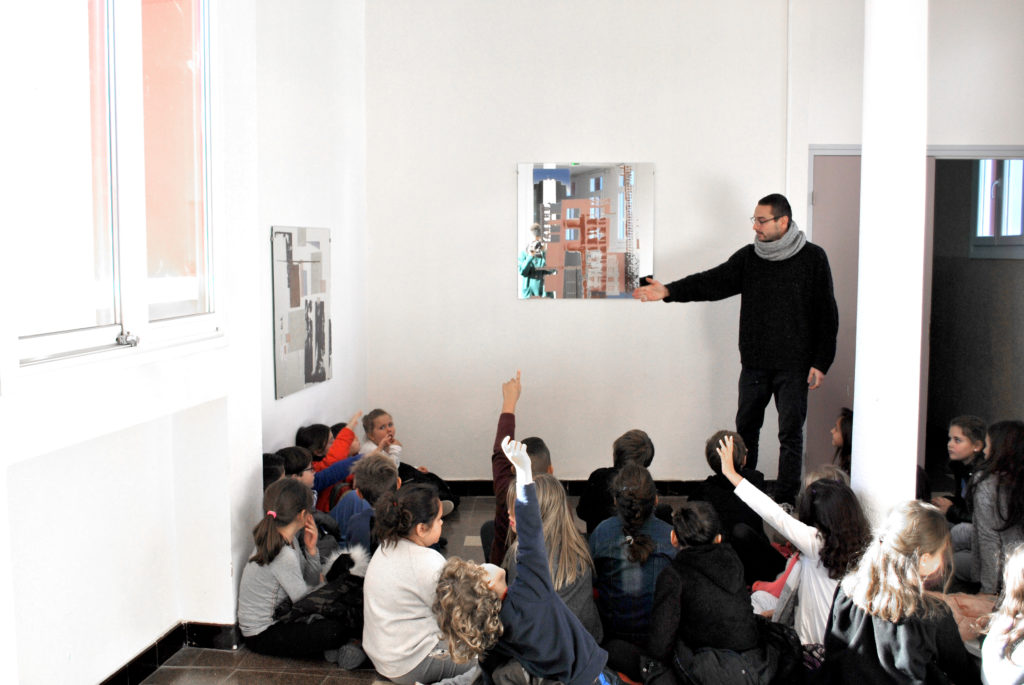Aus Druck
Period : July 2024
Team : Kadia Dabo
Location : Kunstverein Bielefeld, Germany
Partners : Kunstverein Bielefeld
In July 2024, Kadia Dabo initiated and activated the co-creation project Aus Druck at Kunstverein Bielefeld, in dialogue with Brazilian artist Andréa Hygino’s exhibition “Klassenzimmer (Sala de Classe)”. This project continued ETWAS’s collaborative approach, offering a workshop exploring connections between language, body, and material. With a group of participants, the experience took shape as a plastic and sensory exploration of facial expressions and their relationship to letters and sounds.
Letters play a central role in Andréa Hygino’s “Klassenzimmer (Sala de Classe)” exhibition. They appear on the artist’s tongue as alphabet pasta in soup or as bread baked into vowel shapes.
Whether consumed or pronounced, they create a link between language and body. Letters participate in language acquisition. They follow standardized order and normalized sequences while being anchored in singular bodies, opening spaces of inquiry between innate and acquired expression.
In her workshop, Kadia Dabo addressed these ambivalences and invited participants to collective experimentation connected to her practice and the exhibition. At the heart of this exploration was mimicry as bodily action and its relationship to articulated letters. Participants molded clay traces of their own speech, investigating plastic forms emerging from letter articulation. This workshop provided a physical experience of language, creating an intimate relationship between body, material, and movement.
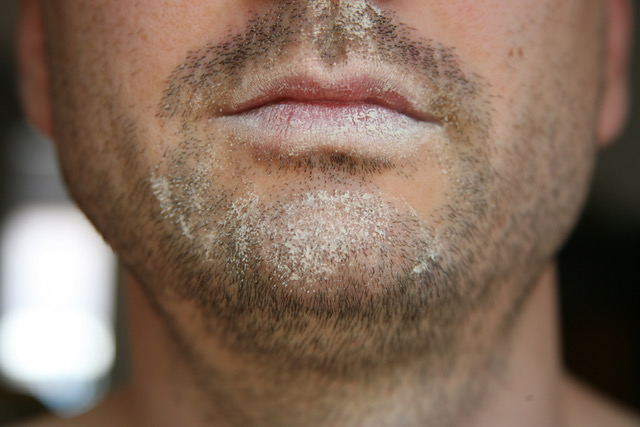
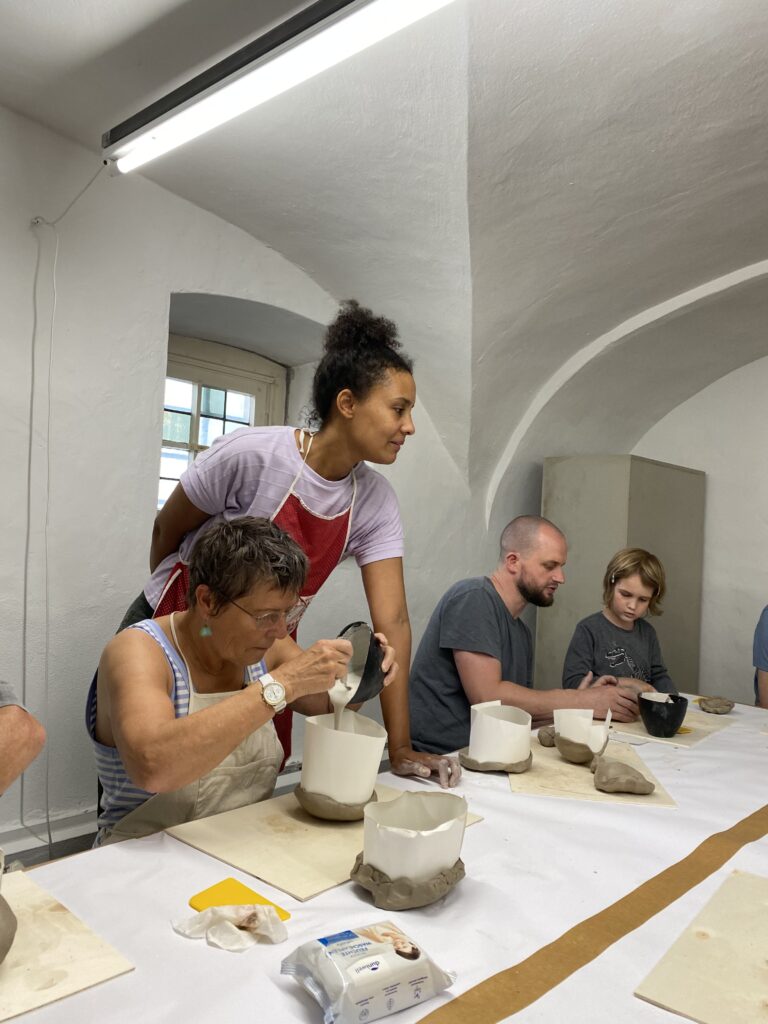
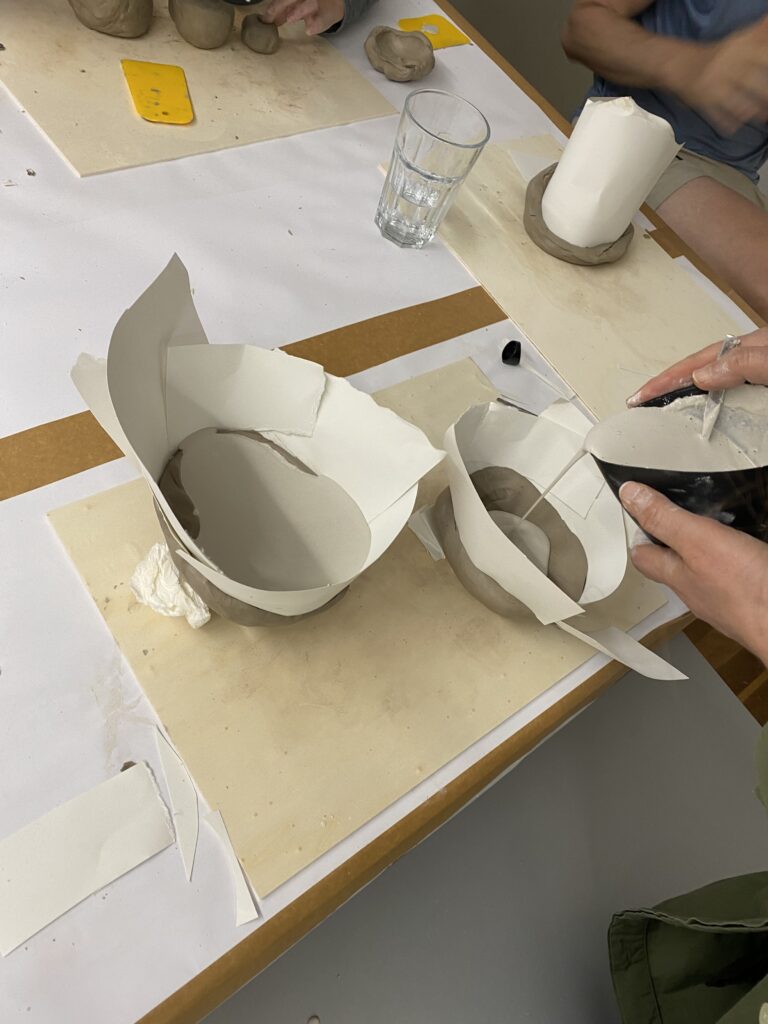
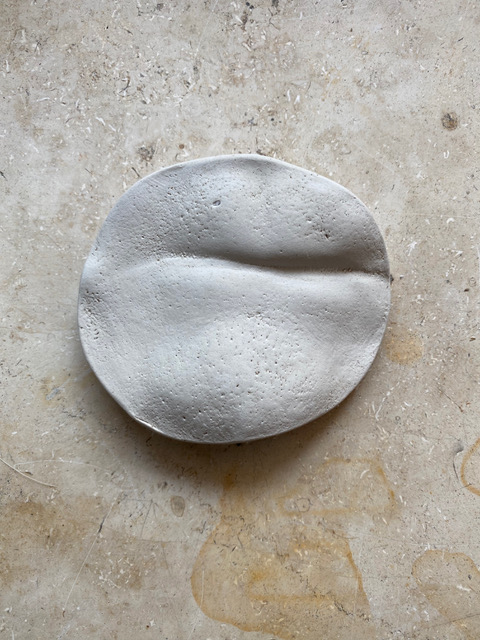
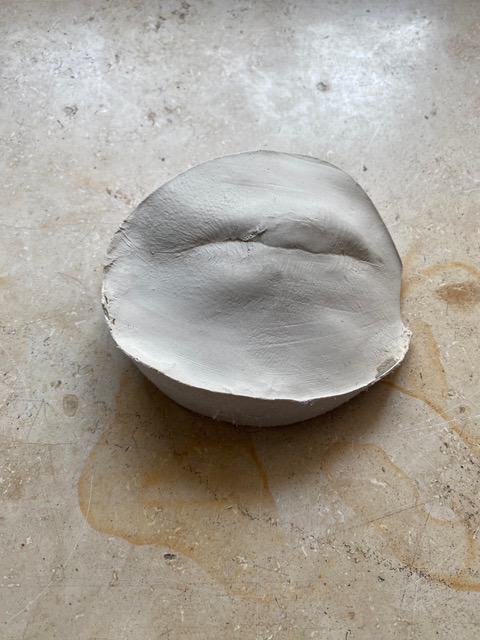
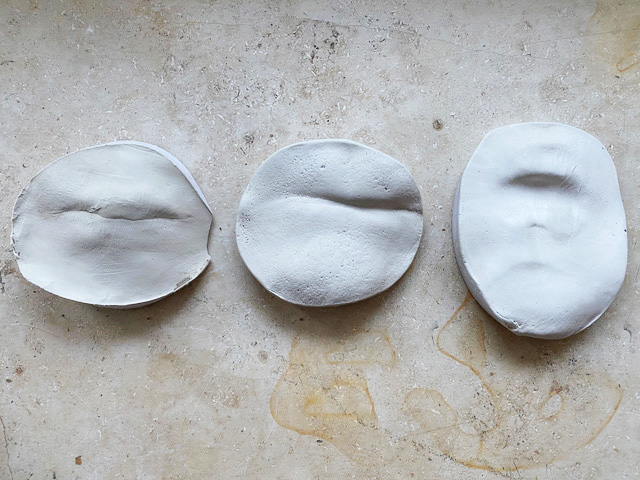
Après-shampooing
Period : January 2021 – Present
Team : Kévin Cabaret, Kadia Dabo
Location : Béziers (France); Köln, Bielefeld (Germany)
Partners : ANCT, DRAC Occitanie (Ministry of Culture), Occitanie Region, CAF de l’Hérault, Off-space Idyll, Kunstverein Bielefeld
Project website
https://après-shampooing.com/
Exhibition link at Idyll
https://idyll.jetzt/kevin-cabaretbr-apres-shampooing/
Exhibition link at Kunstverein Bielefeld
https://www.kunstverein-bielefeld.de/de/exhibitions/jahresgaben-24-25
The Après-shampooing project is an action-research initiative by visual artist Kévin Cabaret of ETWAS, focusing on hair and hairstyles as elements of identity construction. This project explores how our hair, as identity markers, reflects our affiliations, prejudices, and personal narratives while challenging gender stereotypes.
Since 2021, Après-shampooing has unfolded in several phases, beginning with a residency in Béziers’ priority neighborhoods – Centre-ville, Iranget-Grangette and La Devèze – from January to June 2023. Ten groups from local community organizations, identified by City Policy services, participated in shared artistic expression workshops using drawing to examine their perceptions of hair and hairstyles. This process highlighted both unique and shared aspects of this identity element. The artist also occupied a meeting space that served as a hub for residents and passersby to follow the project’s development and prepare its final presentation. Neighborhood hair salons participated as partners, hosting workshop creations and serving as exhibition spaces.
Since January 2024, Kévin Cabaret has continued his experiments in Cologne, collaborating with salons like Africans Barber, Nur Haarstudio and Fasfous Barbershop in the Kalk district. The Idyll off-space presented portraits created in Kalk’s barbershops in its storefront windows from June 14 to July 21, 2024. The artist also conducted a workshop/performance for the AIC ON’24 program on July 6, 2024, and a performance at the Trimborn Straßenfest neighborhood festival on June 15. Subsequently, Kunstverein Bielefeld invited Cabaret for a residency from July 22 to August 2, 2024 as part of their Daily Manual program. During this residency, he worked at Neue Zeit Frisör and Khalil Friseur salons, with resulting works exhibited there for two weeks beginning August 2. Throughout its various phases, Après-shampooing continues exploring identity diversity through participatory art practice. Using drawing as expression, the project creates meeting spaces for residents, clients and hairstylists to reflect collectively on hair-related narratives. These initiatives forge connections while offering new perspectives on identity perception, challenging stereotypes through reinvented shared spaces around these themes.
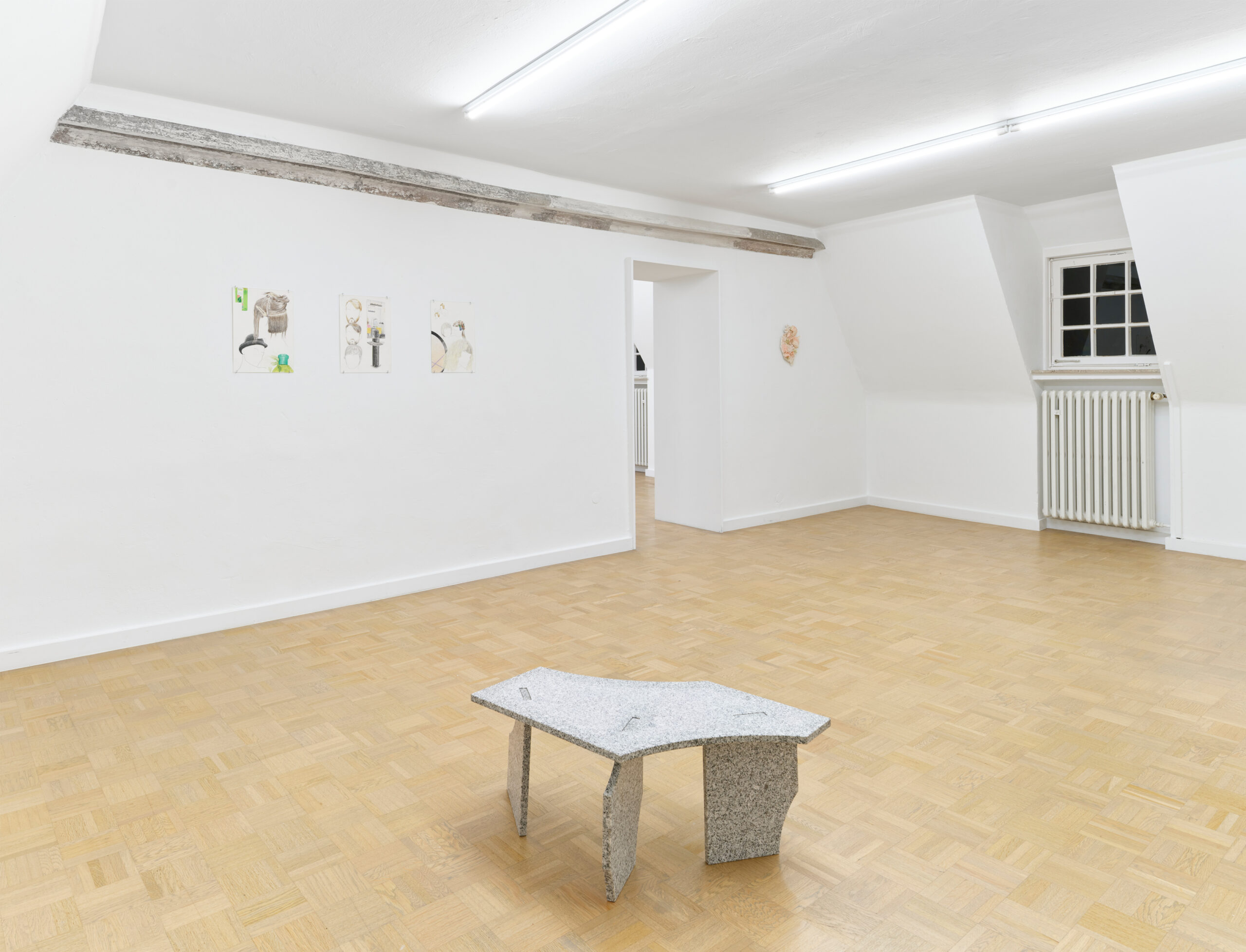
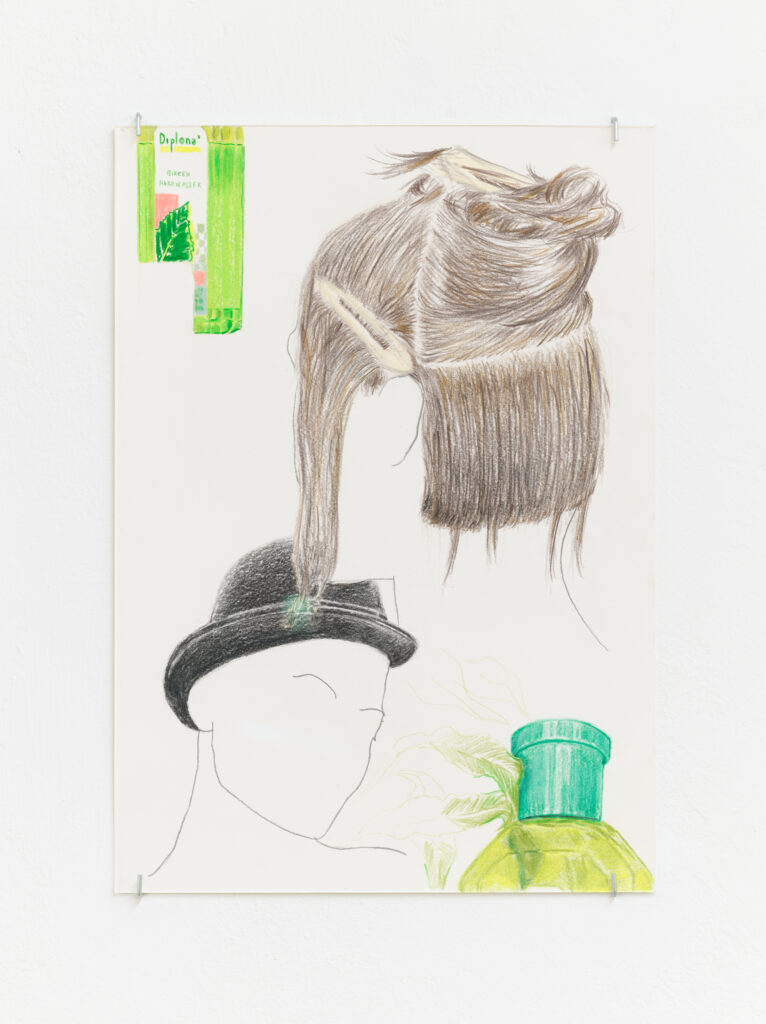
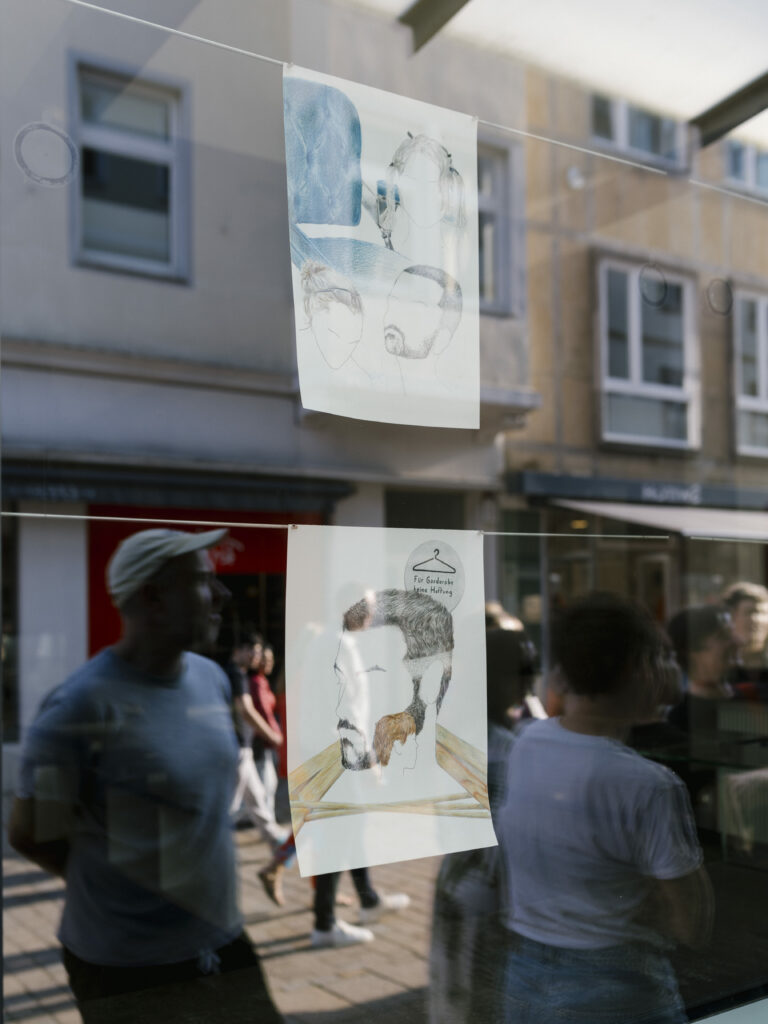
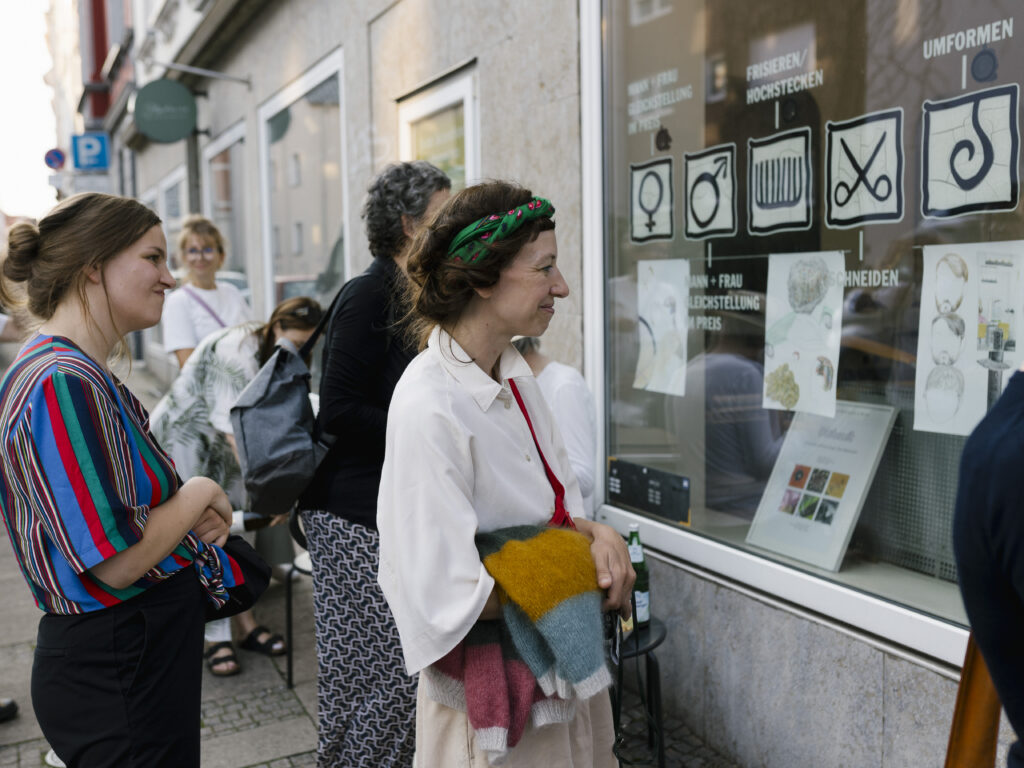
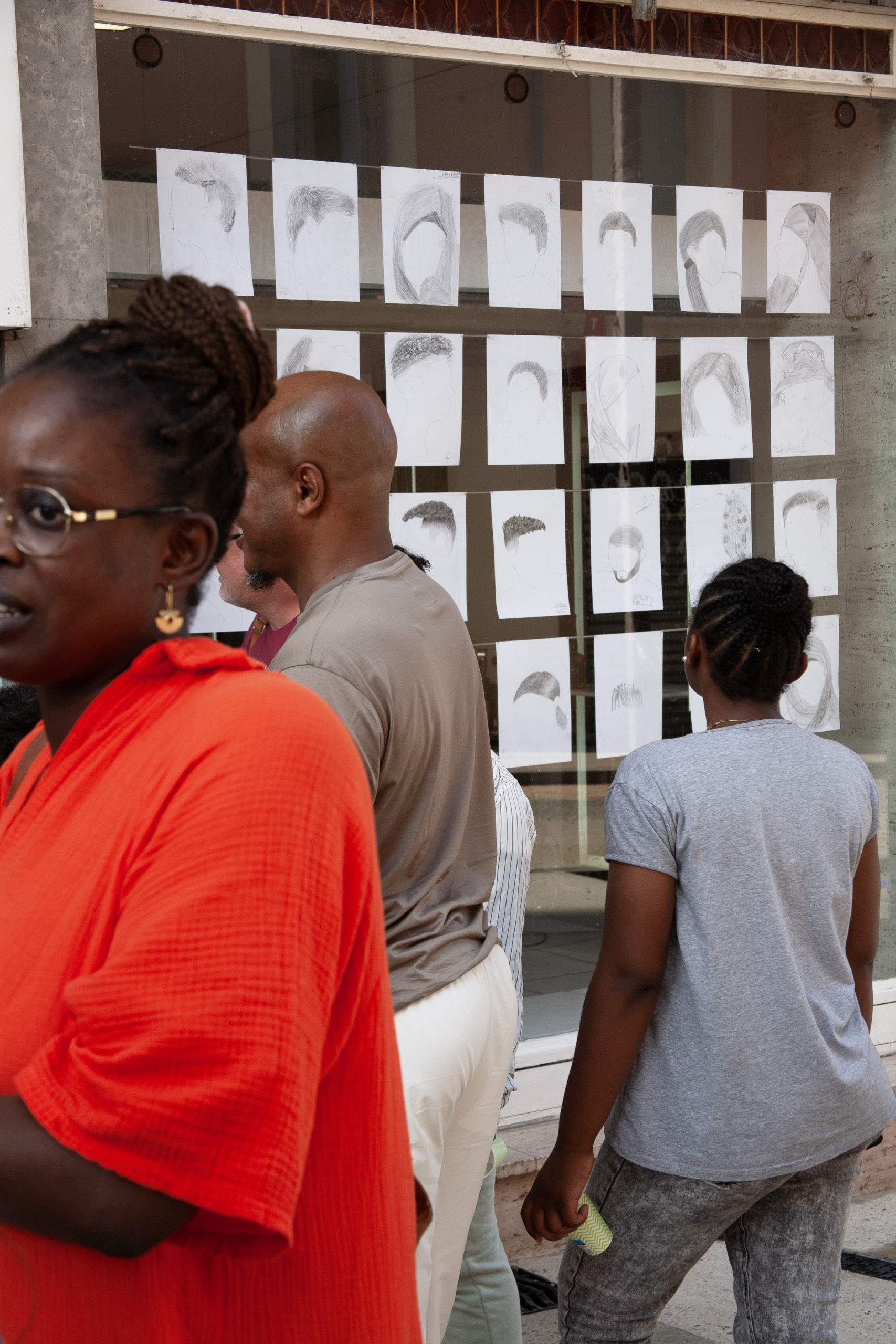
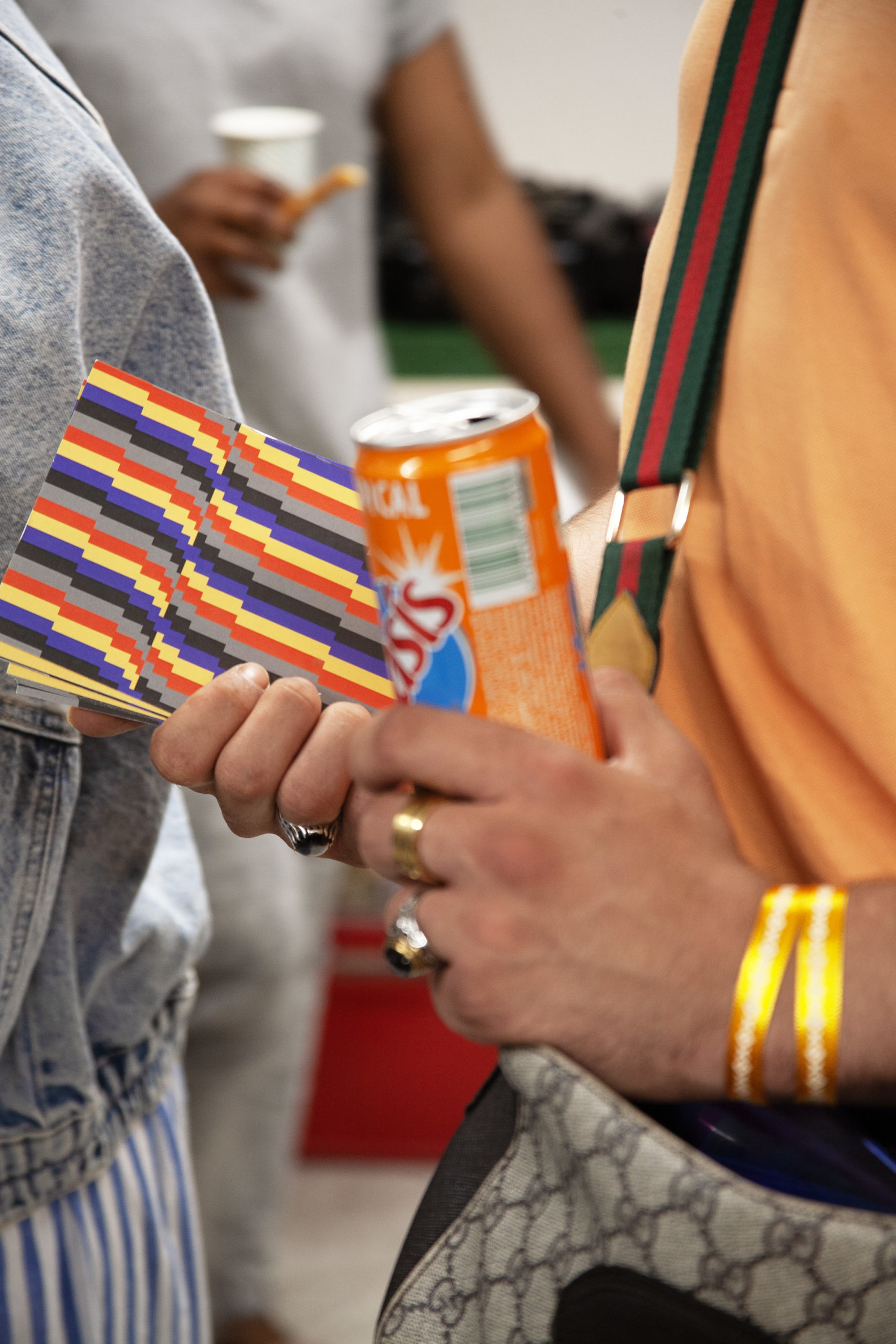
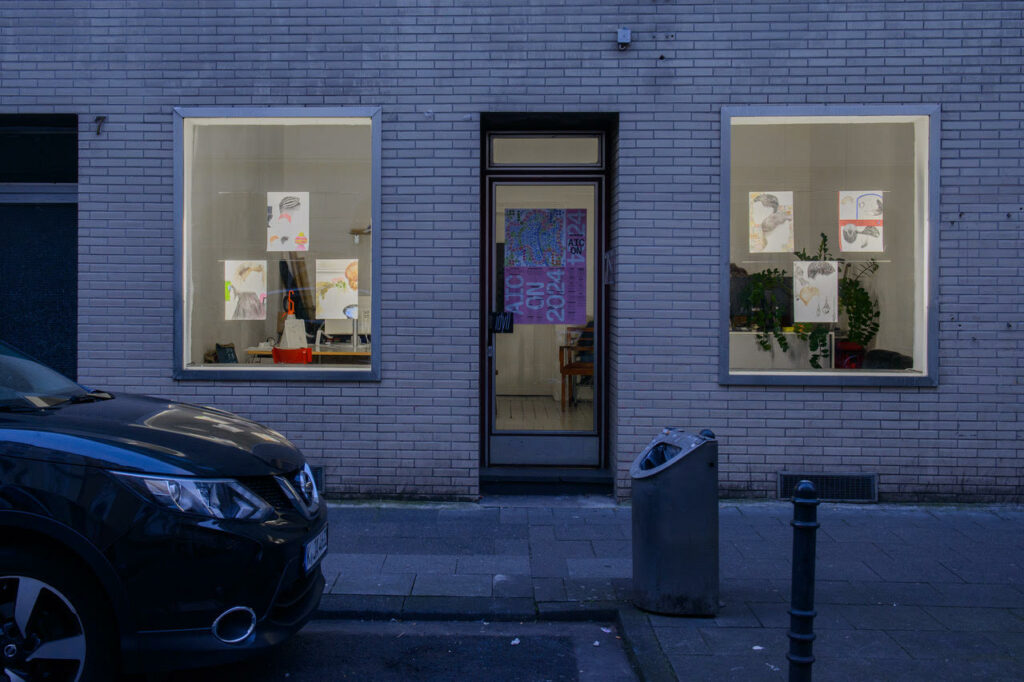
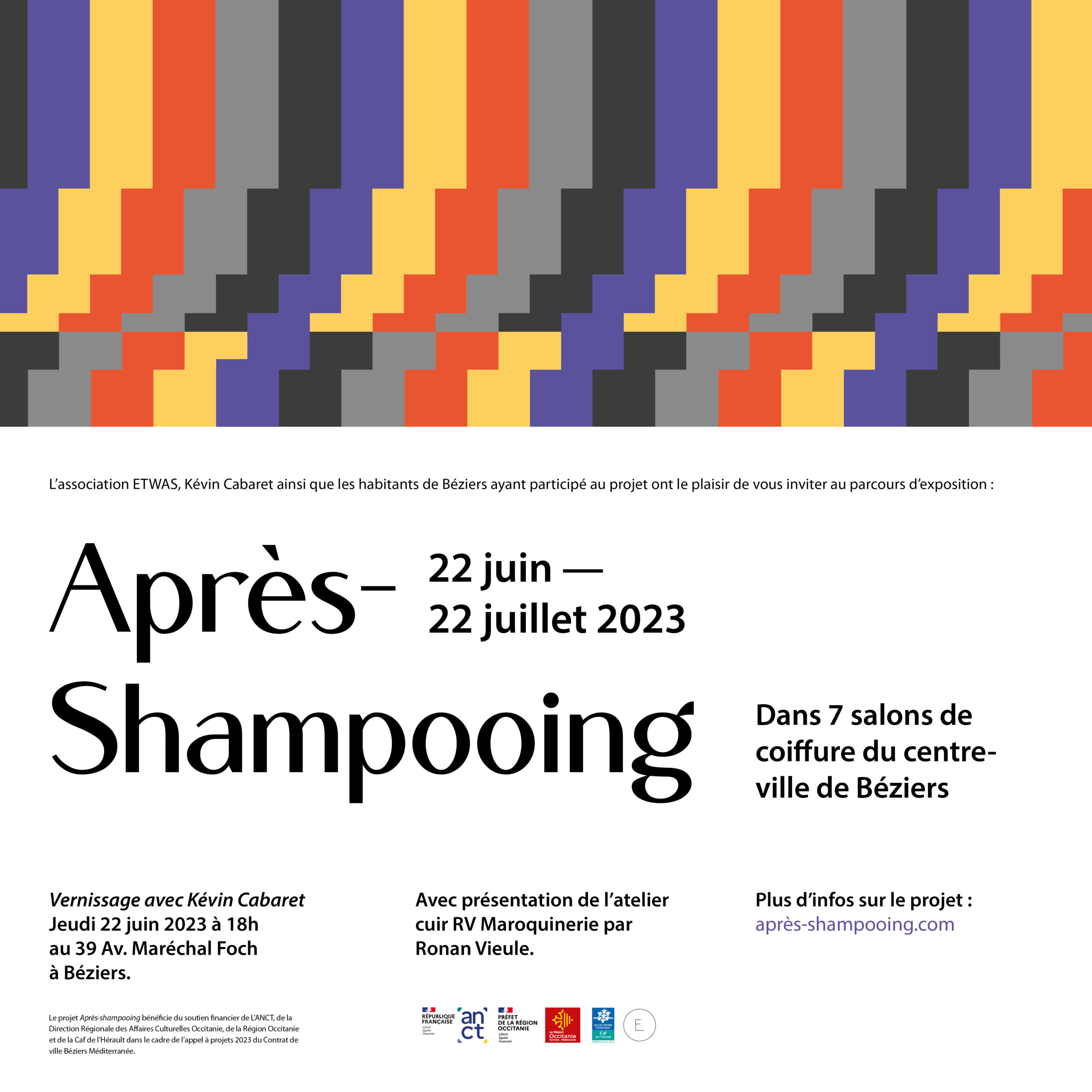
Lumière et Ombre
Period : April – September 2023
Team : Kadia Dabo
Location : Cazedarnes, France
Partners : Town of Cazedarnes, Médiathèque Clardeluno, Les Sources Primary School
In spring 2023, the Clardeluno media library in Cazedarnes invited Kadia Dabo through ETWAS to conduct an artistic residency celebrating its 10th anniversary. The Lumière et Ombre project, initially focused on the work of Jeanne Léa Théodora Barthès (1892-1972), known as Clardeluno – a poet from Cazedarnes after whom the media library is named – evolved through weekly meetings with a group of adult volunteers. Having expressed detachment from the author, they redirected the project toward memories tied to their life journeys and the village’s former school building, now housing the media library. After gaining the participants’ trust, Kadia Dabo asked them to bring personal photos connected to the village, school, and media library. The project took off. Stories flowed freely. Deeply personal narratives emerged, highlighting how spaces and their uses transformed across generations.
Accompanied by each participant, Kadia Dabo located and photographed village sites mentioned in their testimonies. Layering time and images (both the original brought photographs and contemporary shots of referenced locations) created collages. These collages function as temporal frames, where people speaking from the past while gazing at the camera become inserted into new timelines. Intergenerational workshops were also conducted with neighboring primary school students, echoing the adults’ testimonies. Through writing and sound recording, the children explored their own relationship to residents’ stories, contextualizing them within their realities. The residency culminated in a September 2023 courtyard exhibition at the media library, blending workshop texts, children’s audio recordings, and wood-printed digital collages.
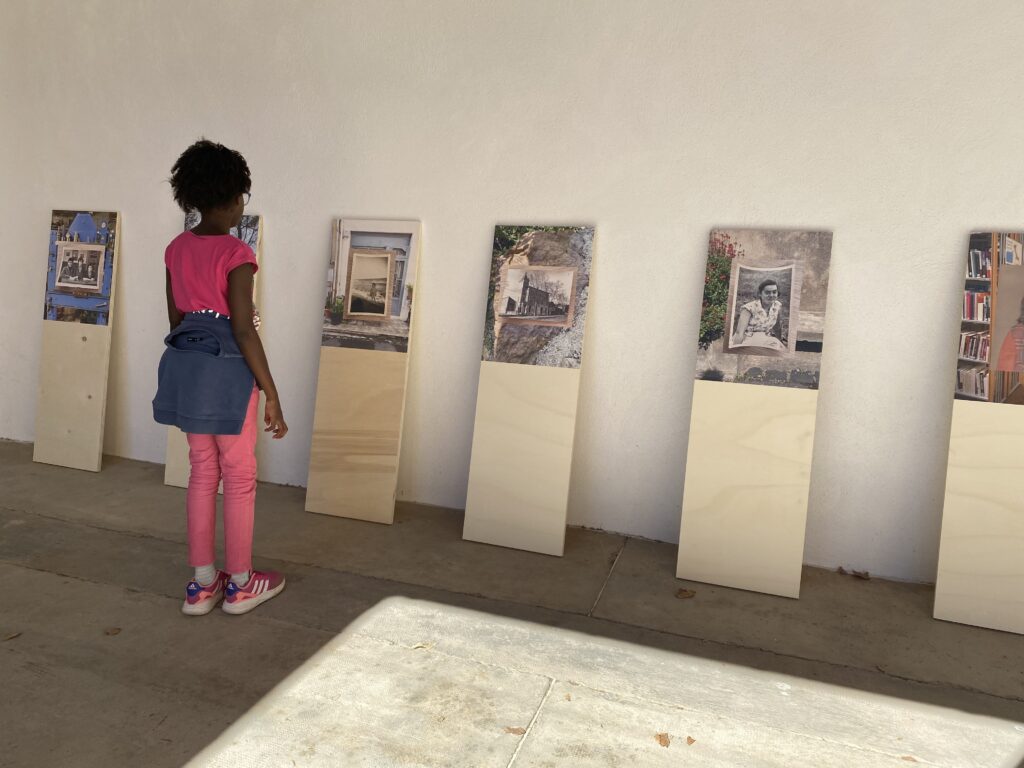
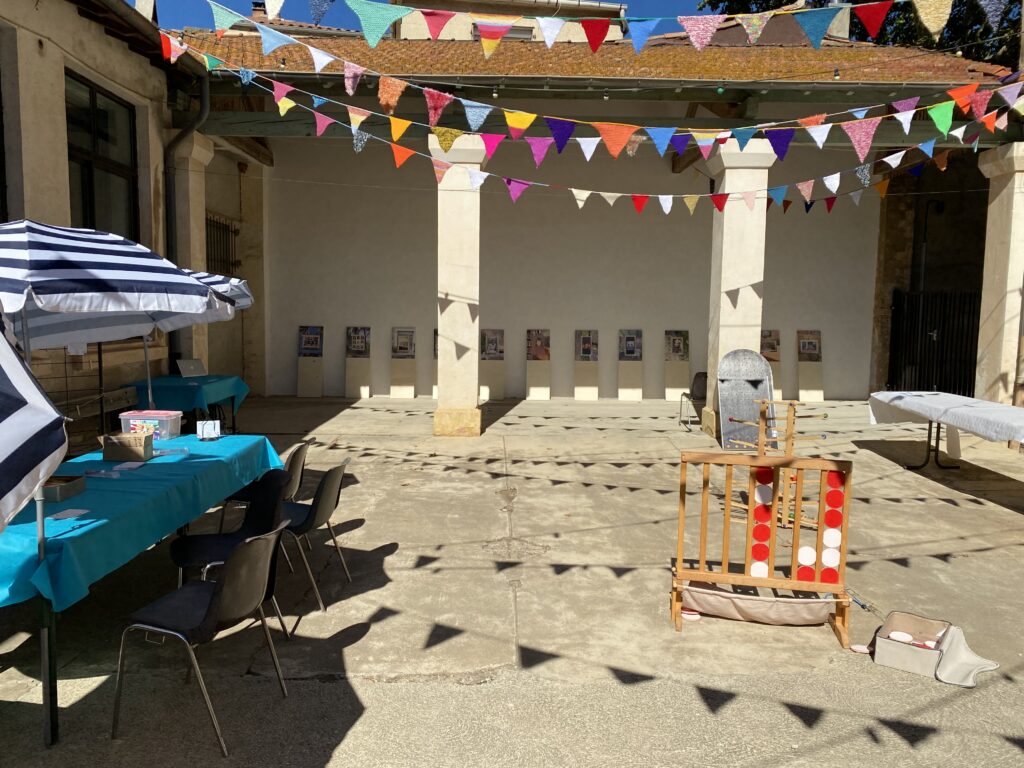
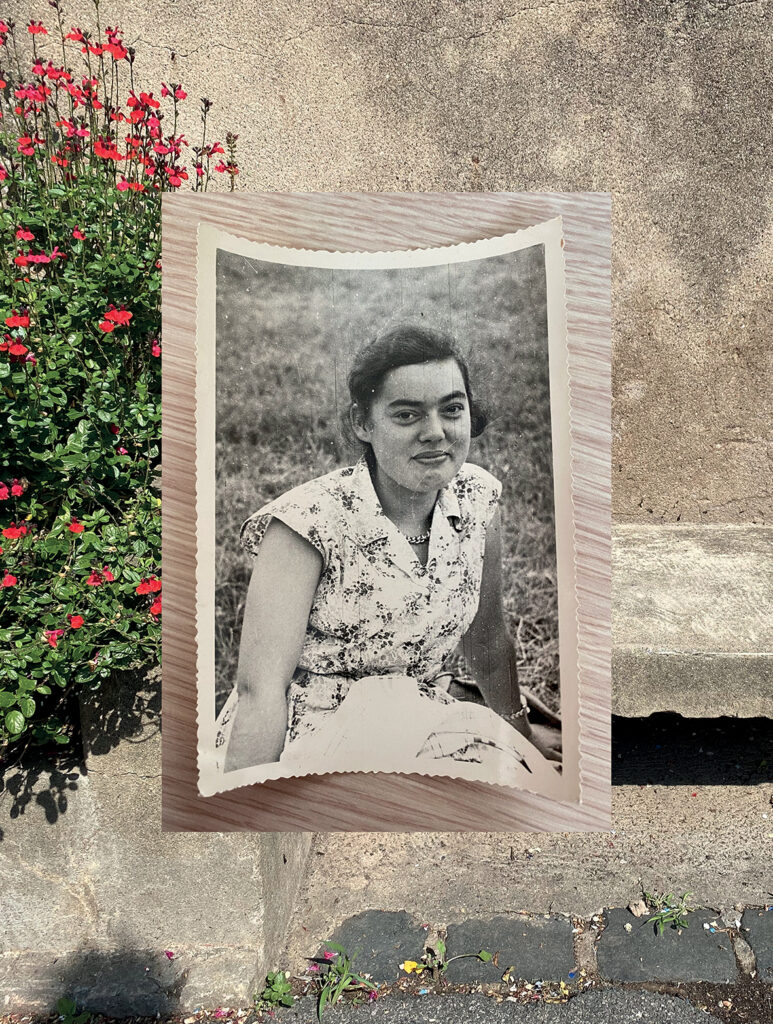
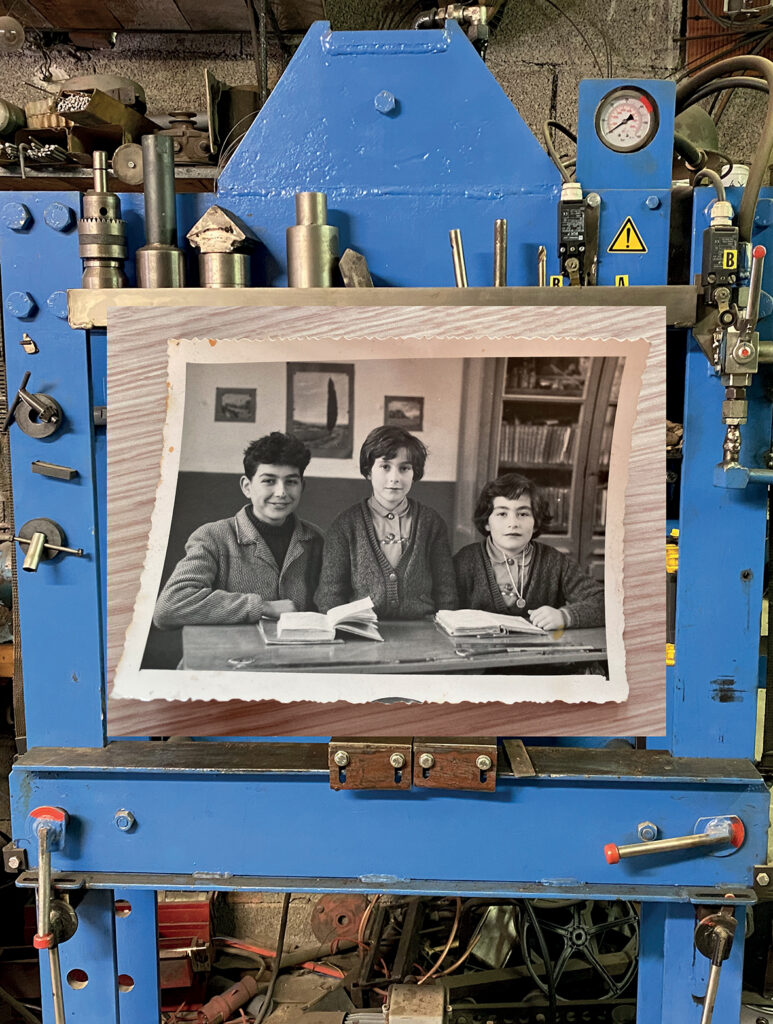
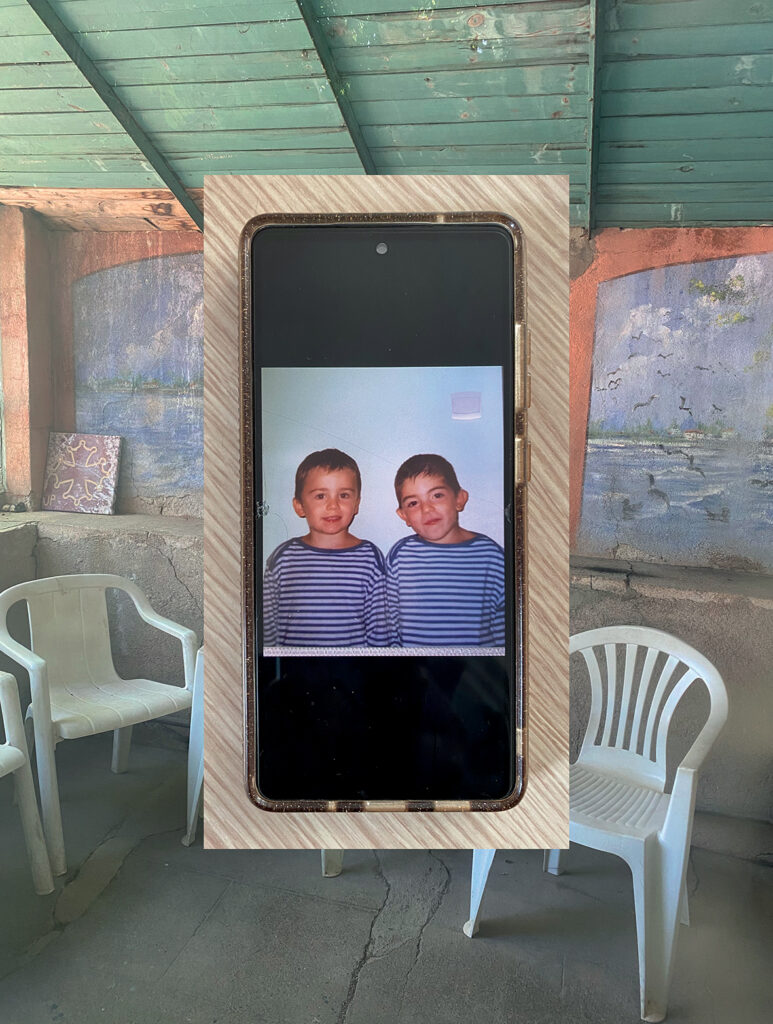
J’habite ici
Period : June 2022 – June 2023
Team : Kadia Dabo
Location : Prémian, France
Partners : Au fil des Arts, Prémian-Saint-Etienne-d’Albagnan Elementary School
The J’habite ici project was an action-research initiative led by Kadia Dabo in collaboration with Au fil des Arts, a cultural organization rooted in the village of Prémian for twenty years. This project aimed to explore the village’s intimate heritage by giving voice to its inhabitants and highlighting their personal stories, thereby deconstructing official History to reveal the diversity of local identities.
From June 2022 to June 2023, the artistic residency took place in the village and the Jaur valley. With the help of Jean-Louis Gleizes, founder of Au fil des Arts who identified willing participants, Kadia Dabo conducted a series of interviews with eight residents of diverse backgrounds, collecting their Prémian anecdotes. These testimonies formed the basis for four co-creation workshops held between September 2022 and January 2023 at Au fil des Arts’ premises.
The project’s final phase materialized as an artistic walkthrough of Prémian – a nomadic route connecting symbolic landmarks of the village’s history, punctuated by installations like Masques in the béal (irrigation canal), Scène on the village square, and Rideau in the media library courtyard niche. These installations, emerging from workshop recordings and created objects, illuminated the village’s lived and shared heritage.
J’habite ici thus embodied a co-creation approach combining product design research with audiovisual practices, transforming heritage into a plural and inclusive legacy that enabled Prémian’s residents to become active participants in shaping their collective memory.
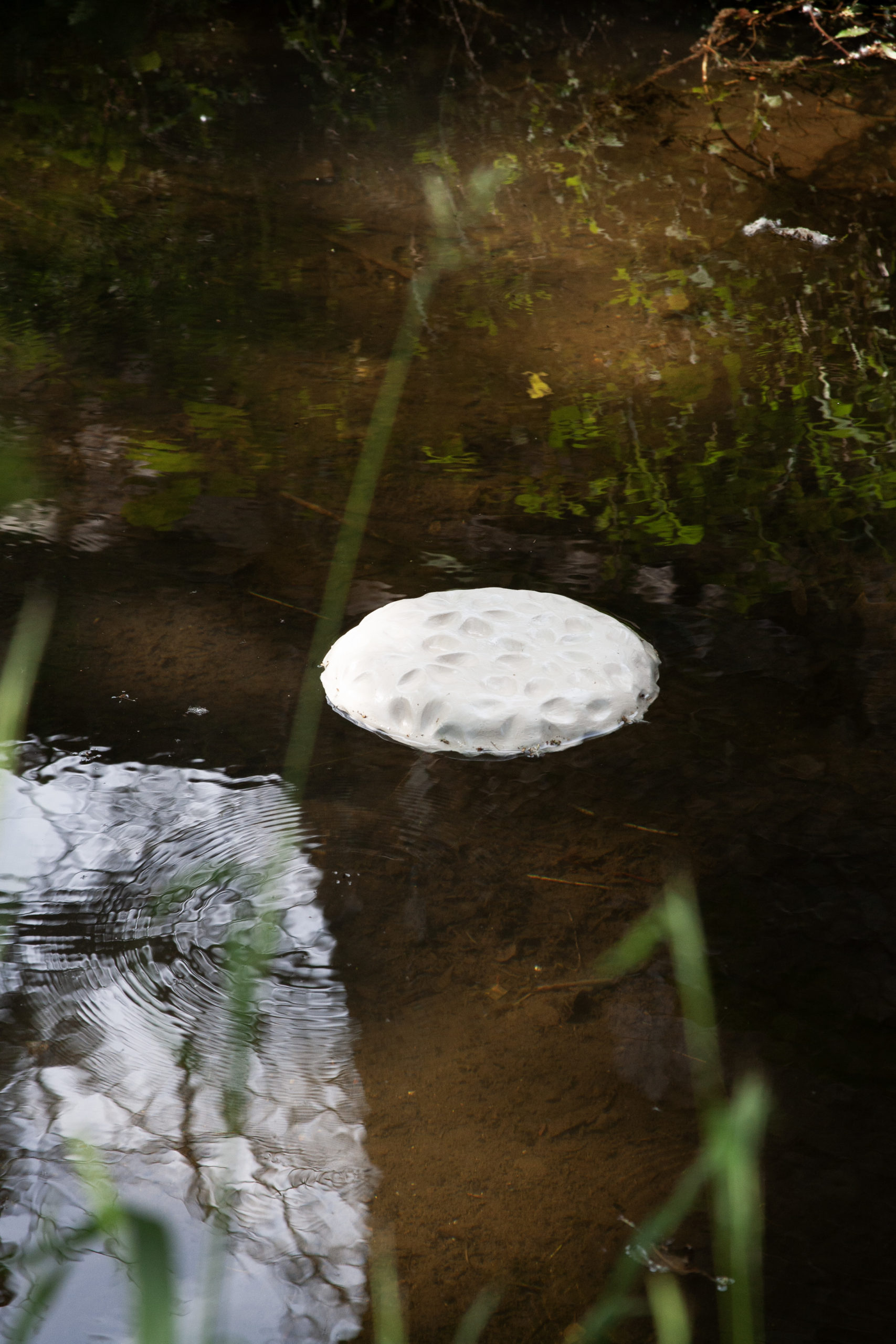
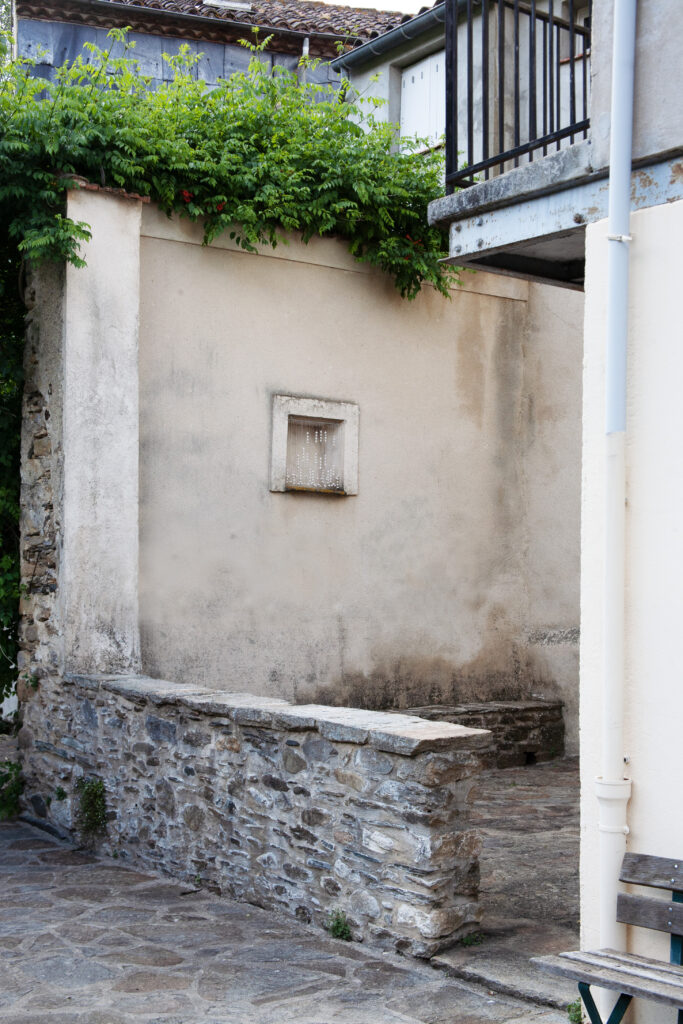
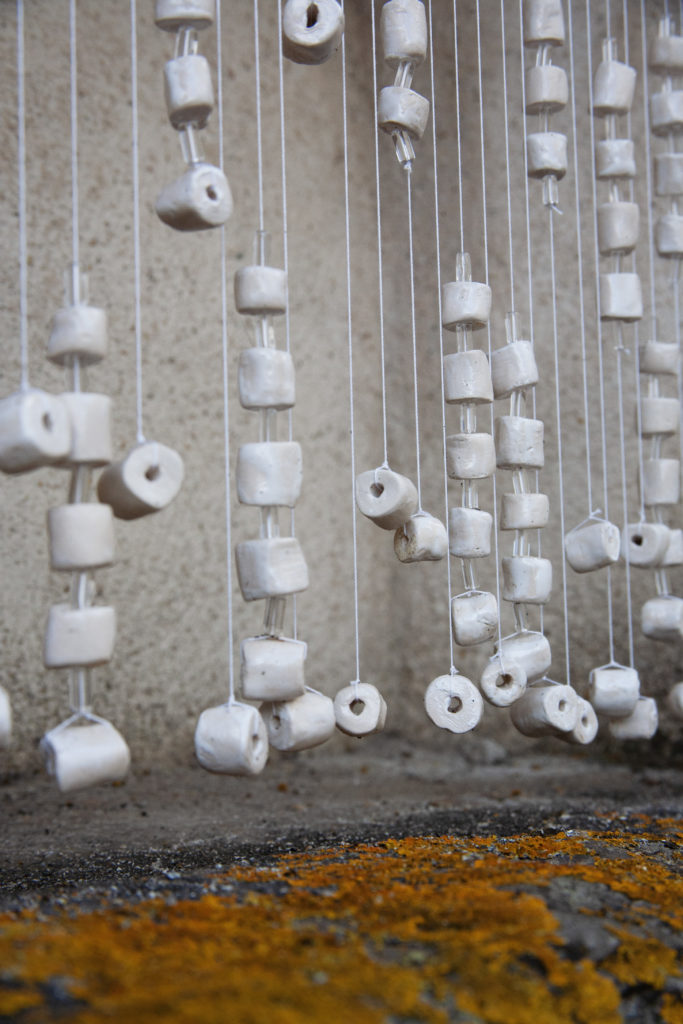
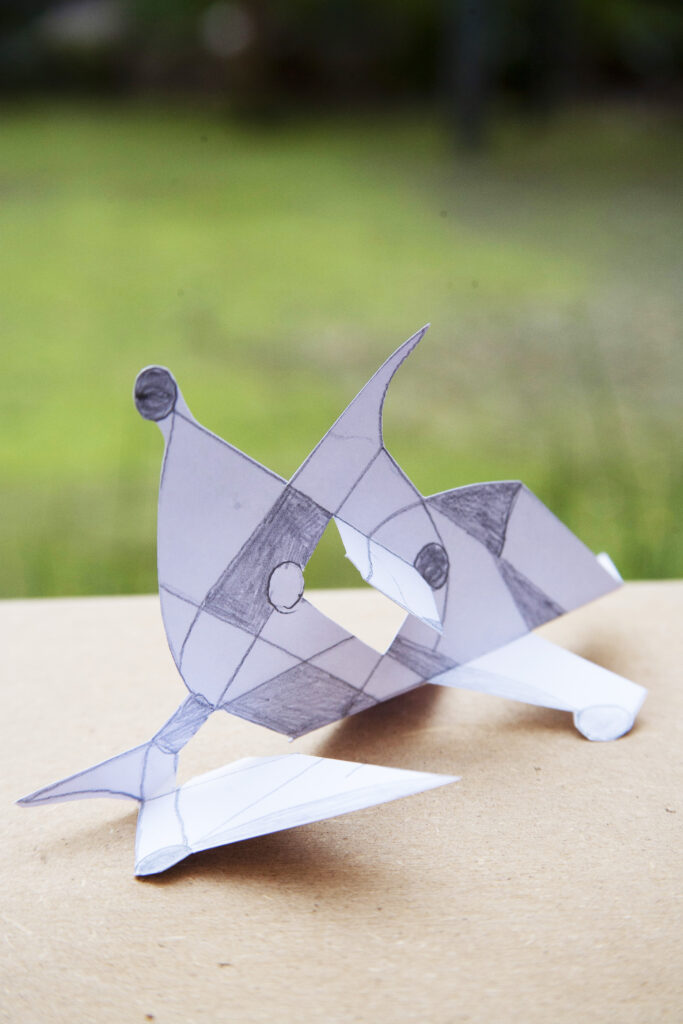
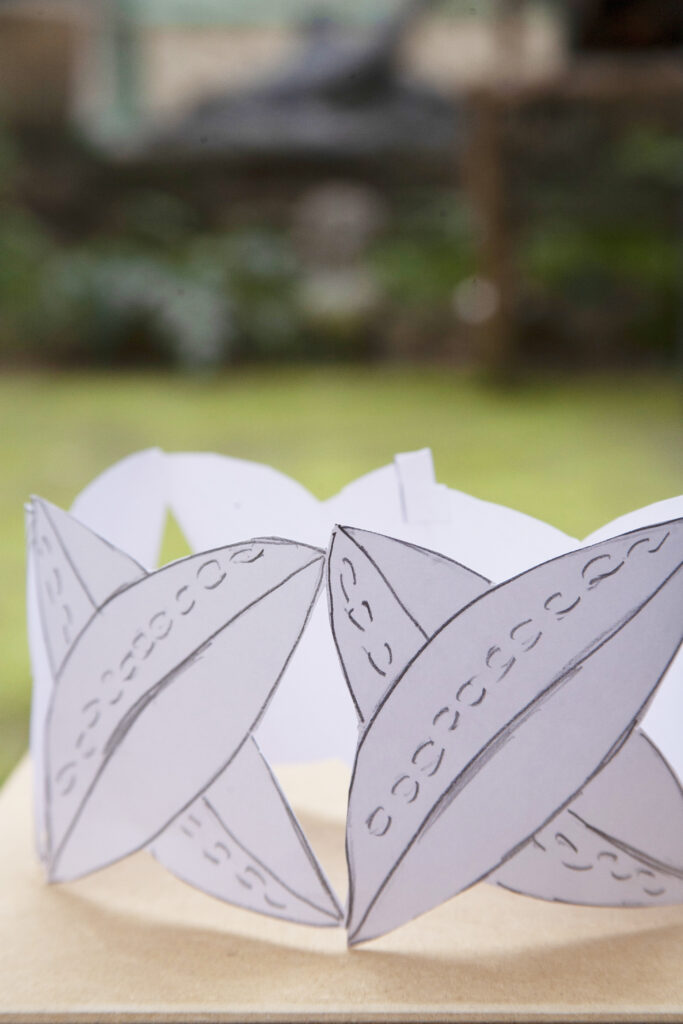
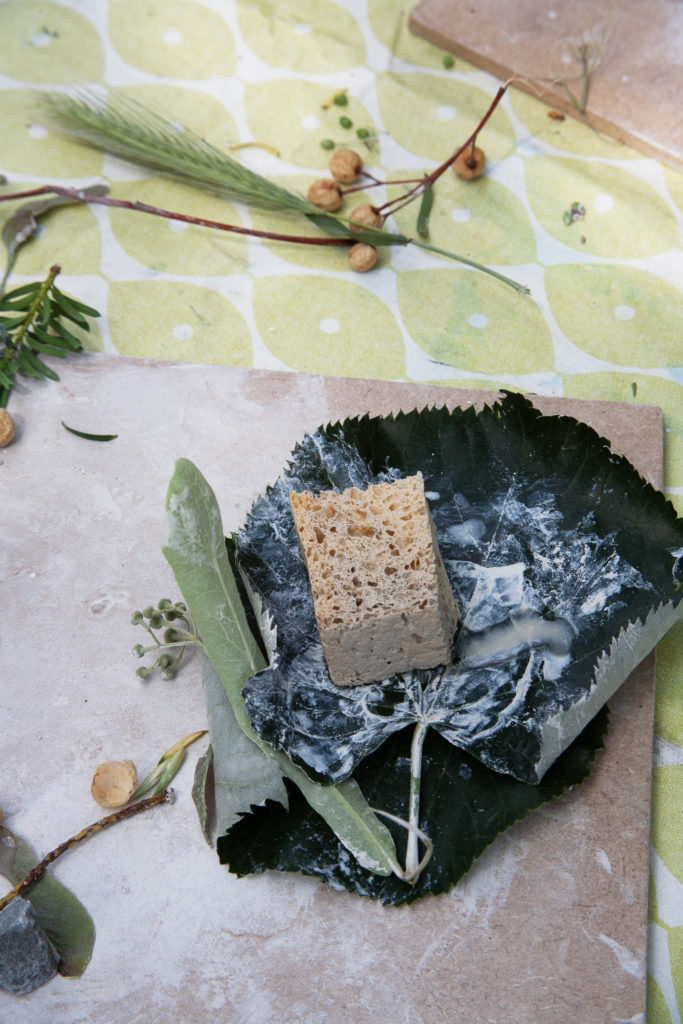
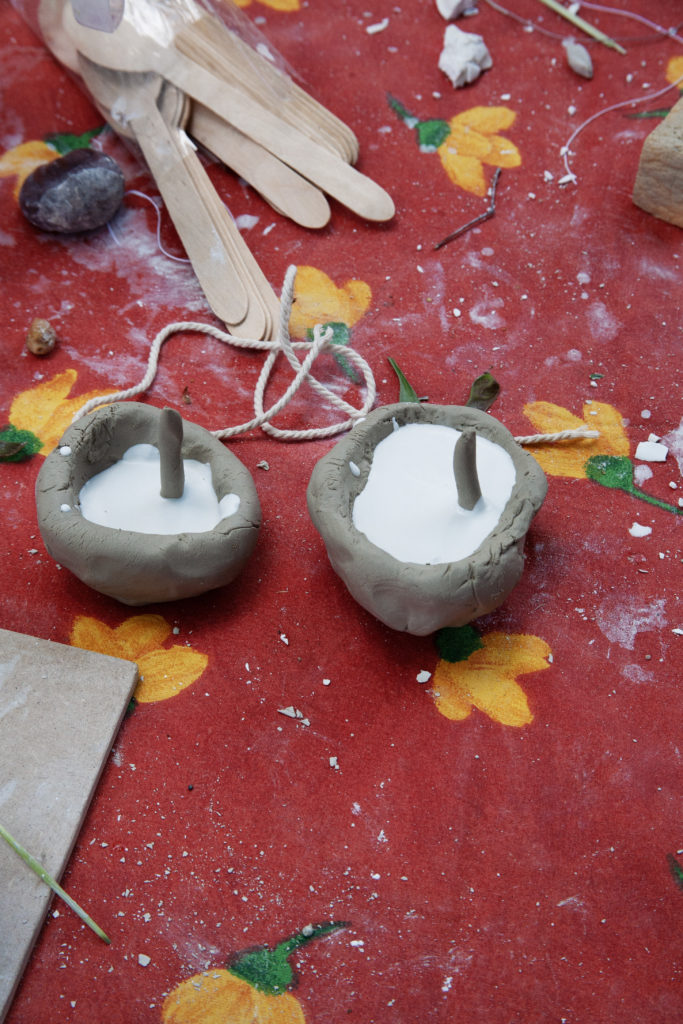
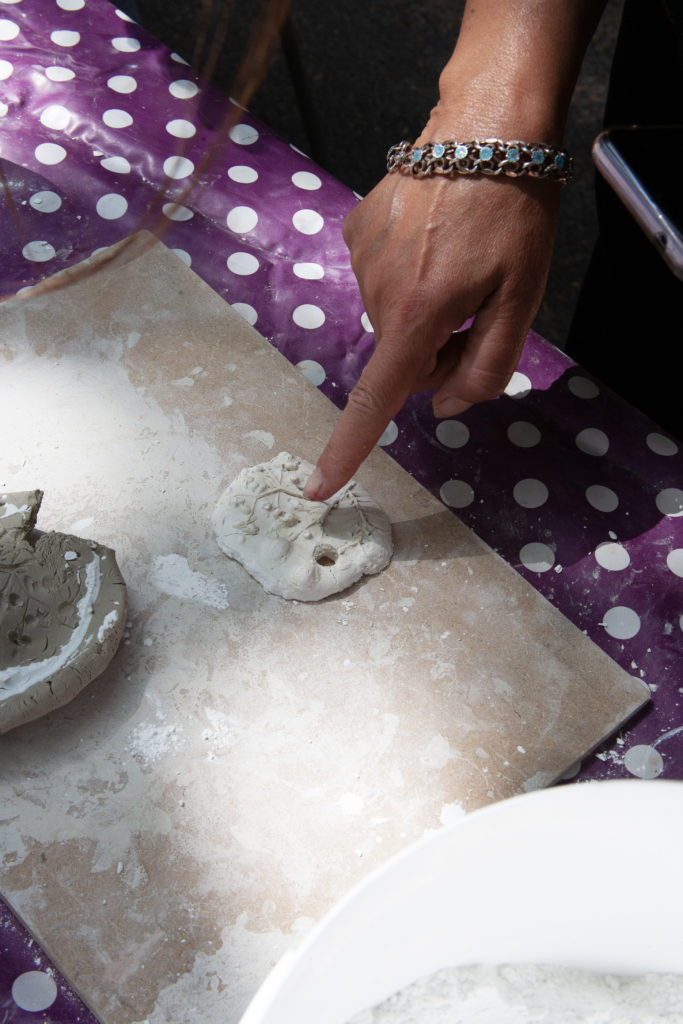
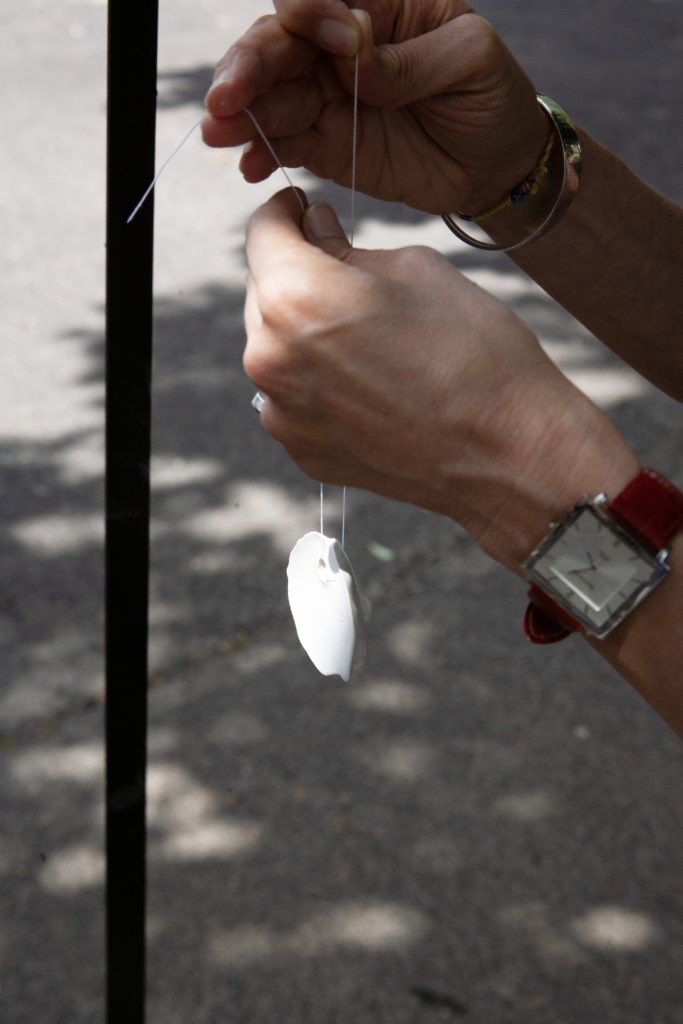
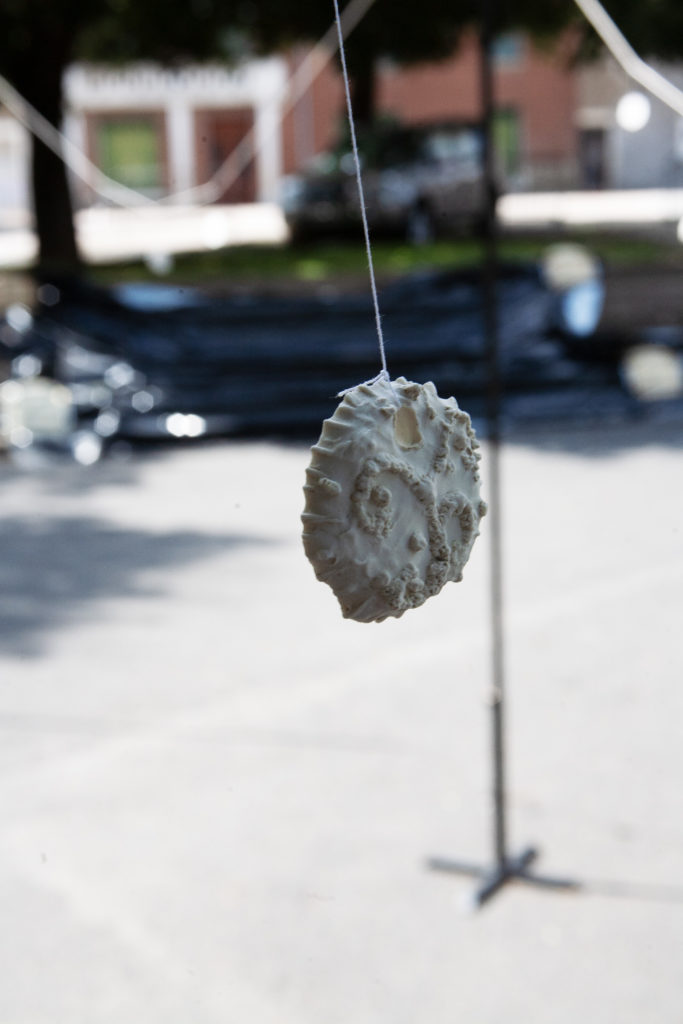
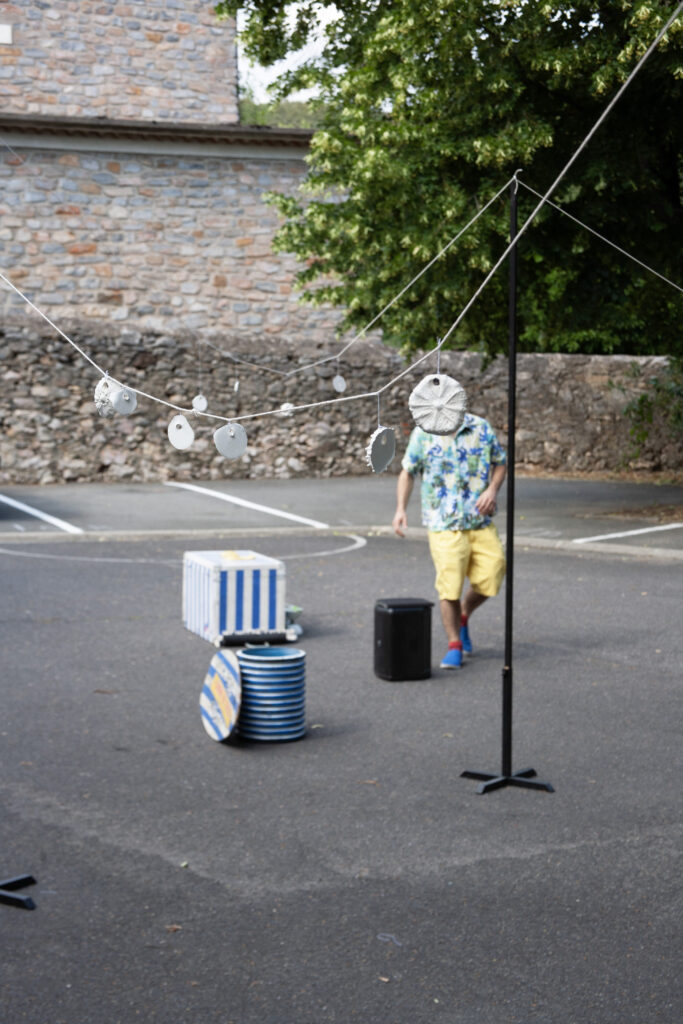
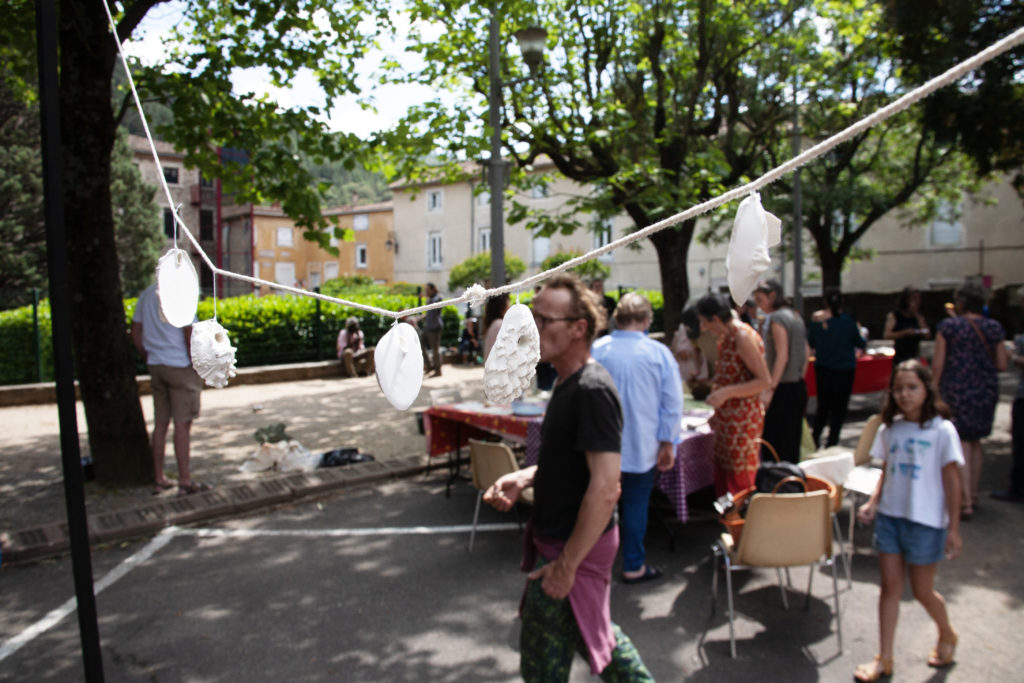
Les pieds dans l’eau
Period : July 2022
Team : Kévin Cabaret, Kadia Dabo
Location : GEM Lesseps, Montpellier; Villeneuve-lès-Maguelone; Port Ariane, Lattes, France
Partners : Culture et Sports Solidaires 34, GEM Lesseps
Les pieds dans l’eau was an artistic research project conducted by Kévin Cabaret with members of GEM Lesseps in Montpellier, in collaboration with Culture et Sports Solidaires 34. Conceived as a sensory investigation of the city and its environment, it explored Montpellier neighborhoods built on former wetlands, at the boundary between urbanization and nature. The goal was to examine relationships between living beings – humans, birds, reeds – and the postmodern architectures erected on these territories where all seem, both figuratively and literally, to have their feet in water.
Structured around three key phases, the project employed photography, drawing and painting as tools for capture and expression.
Throughout the project, a dialogue developed around urban perception, the memories it evokes and the stories it carries. Through a collective, progressive approach, Les pieds dans l’eau provided participants with a space to reclaim and narrate their territory, playing with the complementarity of mediums and each individual’s sensitivity to urban and landscape transformations.
Each session focused on a particular medium, allowing participants to experiment with different ways of observing and interpreting their environment. On-site visits, particularly to the Maguelone salt marshes and Port Ariane, enabled direct immersion in these hybrid landscapes, while indoor workshops allowed analysis of collected forms, colors and textures.
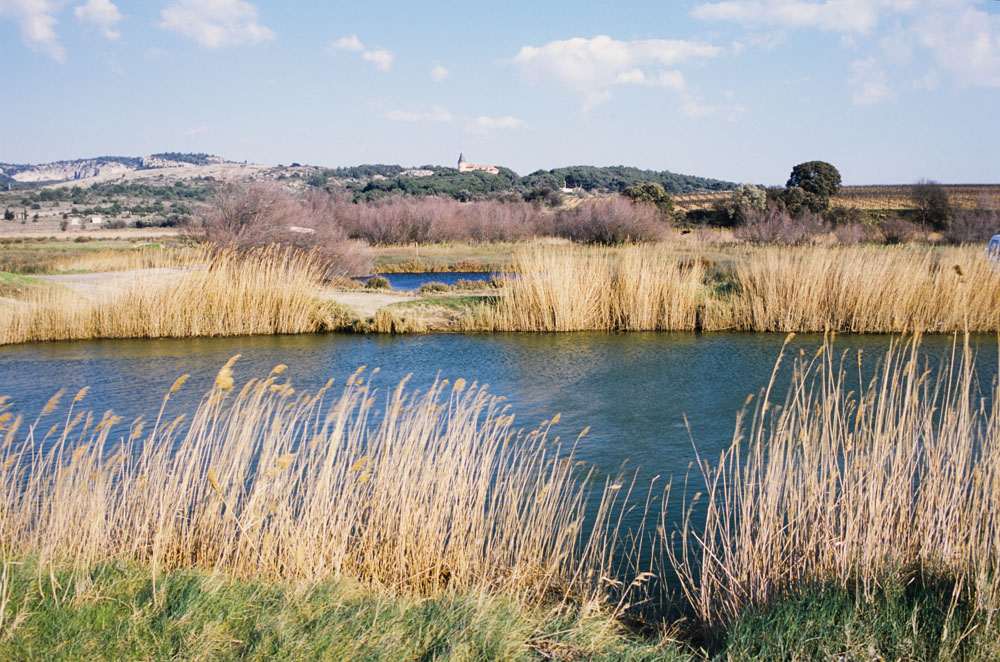
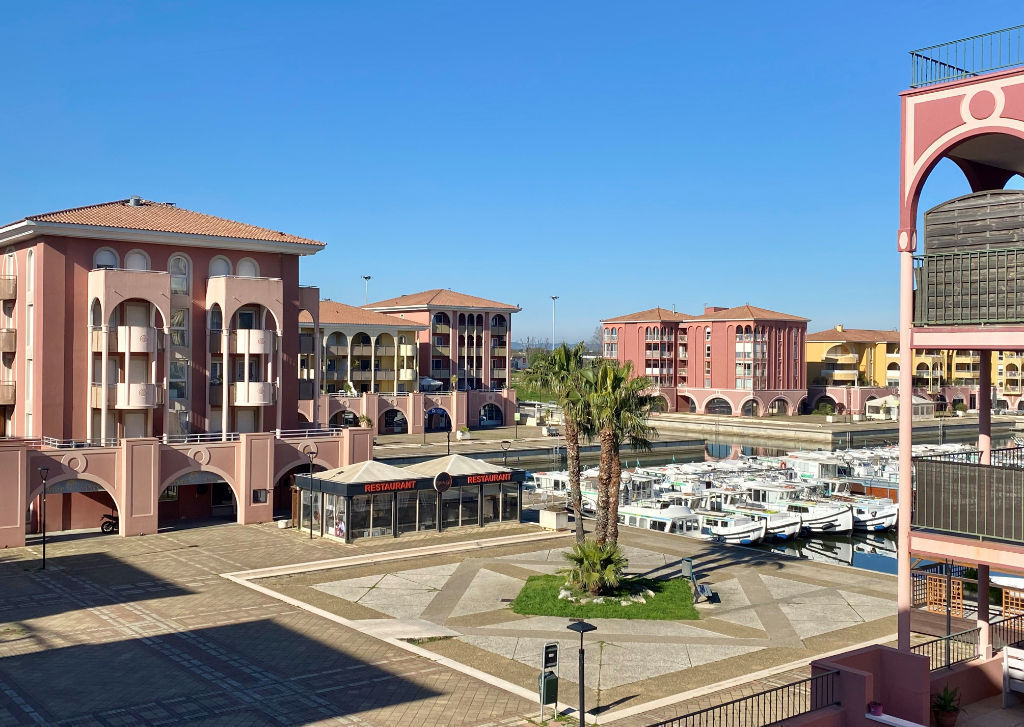
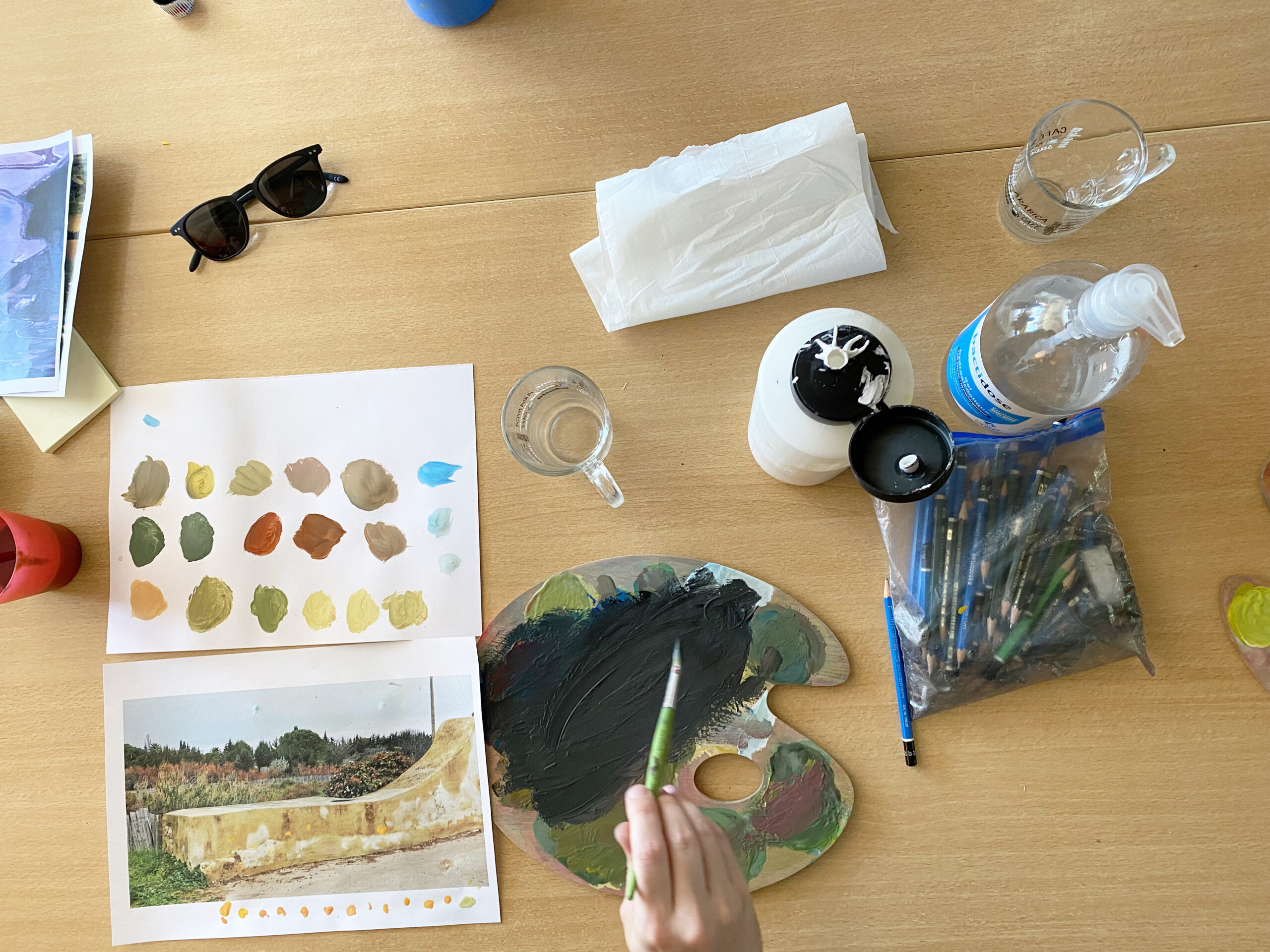

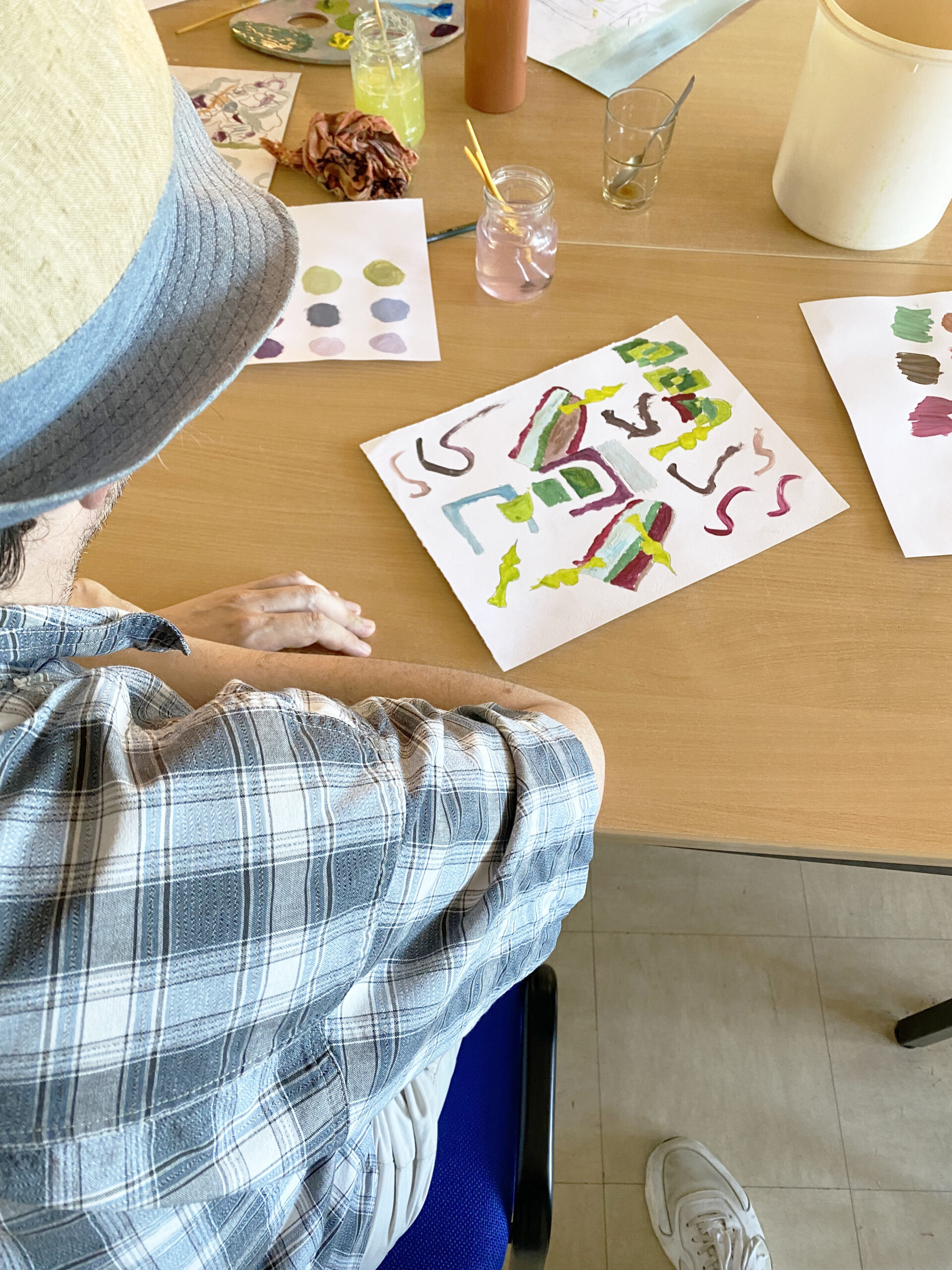
Tramontane
Period : November 2021 – December 2022
Team : Kévin Cabaret, Guilhem Causse, Kadia Dabo, Juliette Ulrich
Location : Béziers Méditerranée Agglomeration, Grand Orb Community of Communes, France
Partners : DRAC Occitanie (Ministry of Culture), Montpellier Academy, CAF de l’Hérault, CIRDOC Béziers, Town of Bédarieux, Town of Saint-Chinian, Town of Sérignan
Link to short film Rhumb :
https://vimeo.com/1058517839?share=copy#t=0
Tramontane is a transdisciplinary artistic project born from an encounter between wind, territory and its inhabitants. From November 2021 to December 2022, this project explored the tramontane, the emblematic wind of Biterrois and Haut-Languedoc, through the intersection of artistic, scientific and social practices. Through a series of workshops, residencies and collaborations, the project engaged a wide population, particularly youth, in a co-creation process. The project unfolded within Béziers Méditerranée Agglomeration and Grand Orb Community of Communes, with activities in Bédarieux, Lignan-sur-Orb and Espondeilhan. The goal was to raise awareness about connections between the tramontane wind and local cultural, historical and social environments, while inviting residents to become active participants in collective creation.
At the heart of the project, several artists worked with communities: designer Kadia Dabo, visual artist Kévin Cabaret, filmmaker Juliette Ulrich and artist Guilhem Causse. Each contributor developed a specific component: Kadia Dabo focused on residents’ wind-related stories transformed into hand choreographies in her project Avec les mains, avec le vent; Kévin Cabaret created performative drawings using reeds (Provence canes) and the album Vibrating reed by Occitan group Trioc.
Juliette Ulrich tracked the tramontane across Languedoc from Montagne Noire to the coast; Guilhem Causse explored the wind’s sonic qualities to generate organic visual representations electronically. The project took multiple forms: school workshops enabled students to create wind-inspired visual/sound works; a creative residency produced the short film Rhumb by Juliette Ulrich capturing the tramontane’s moods through sound and image. In Bédarieux, an empty storefront became a creative lab where residents experimented with sound/visual installations and shared wind stories.
Over the year, 250+ participants engaged with the project – students, residents and curious visitors. Final productions were presented in a public exhibition, with postcards printed to showcase works and share the collective experience.
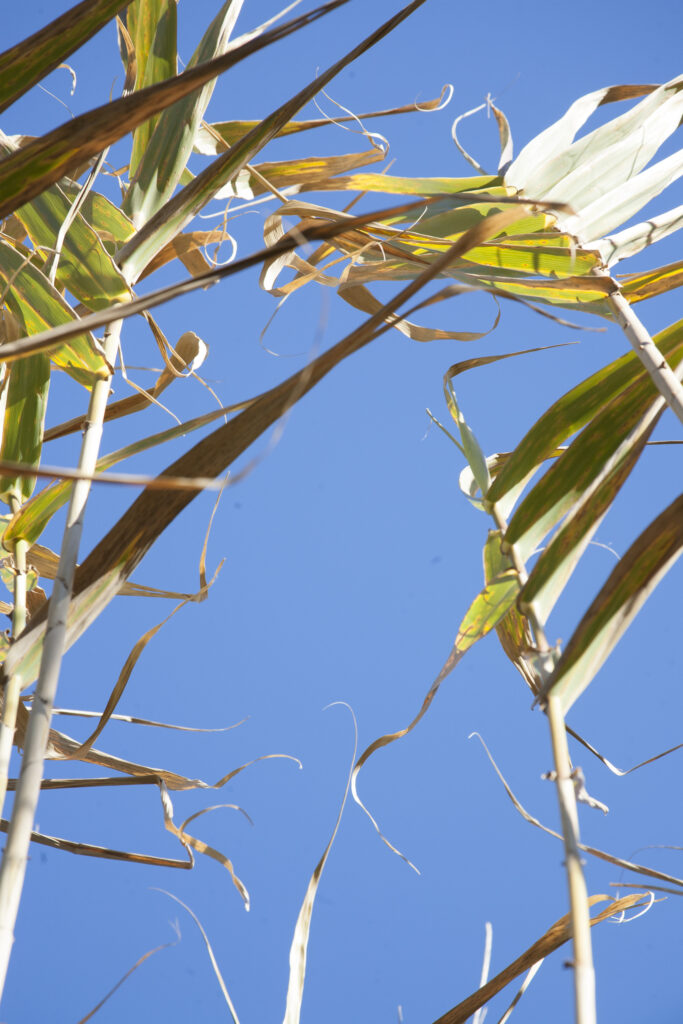
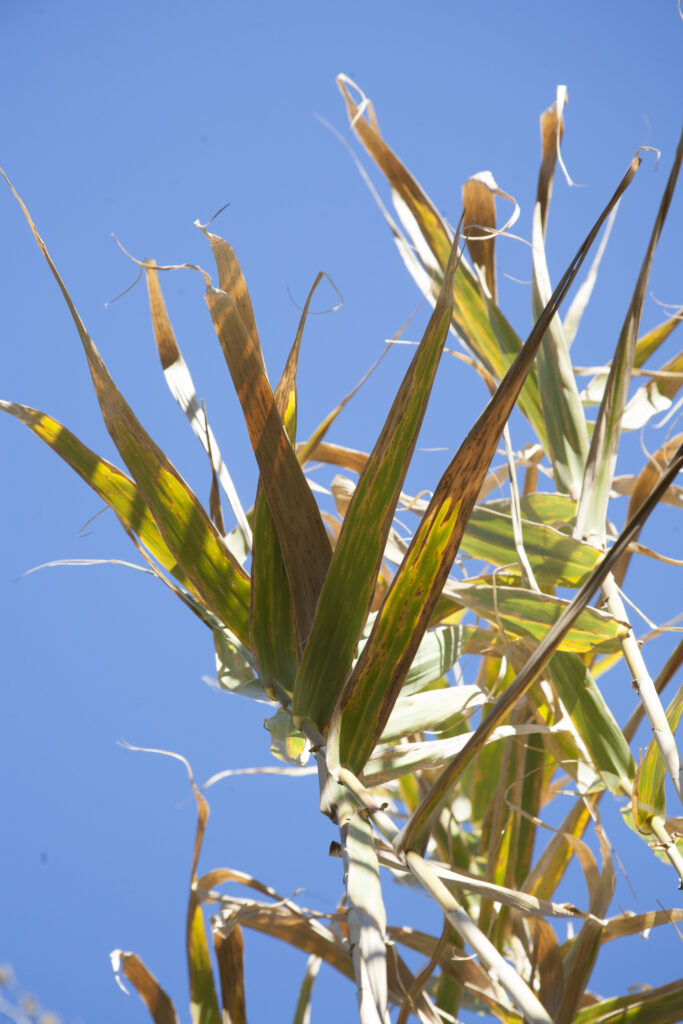
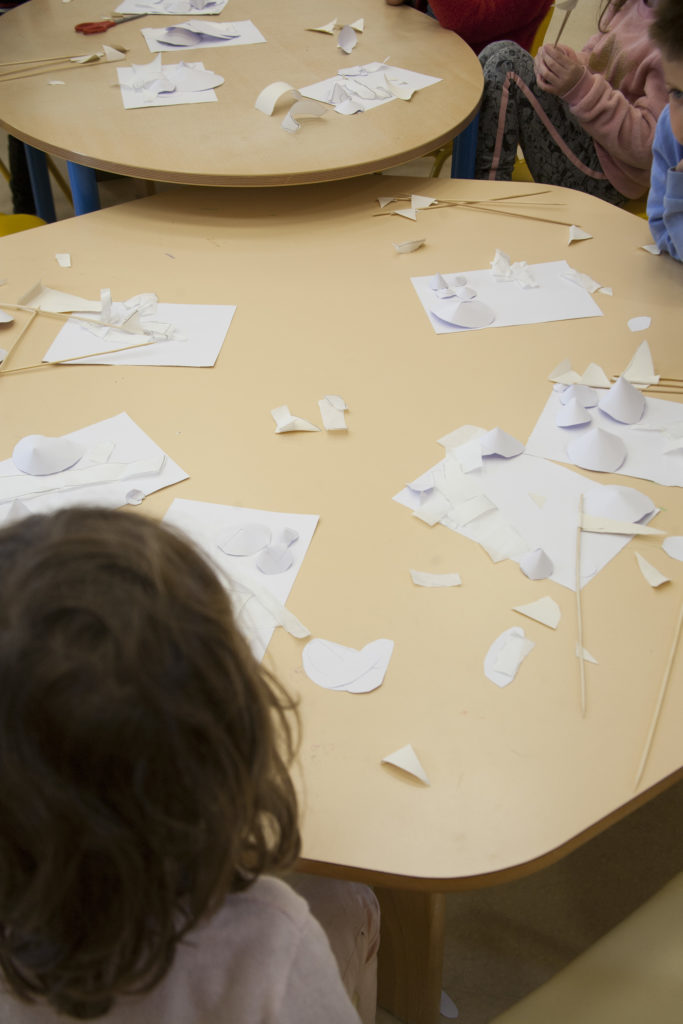

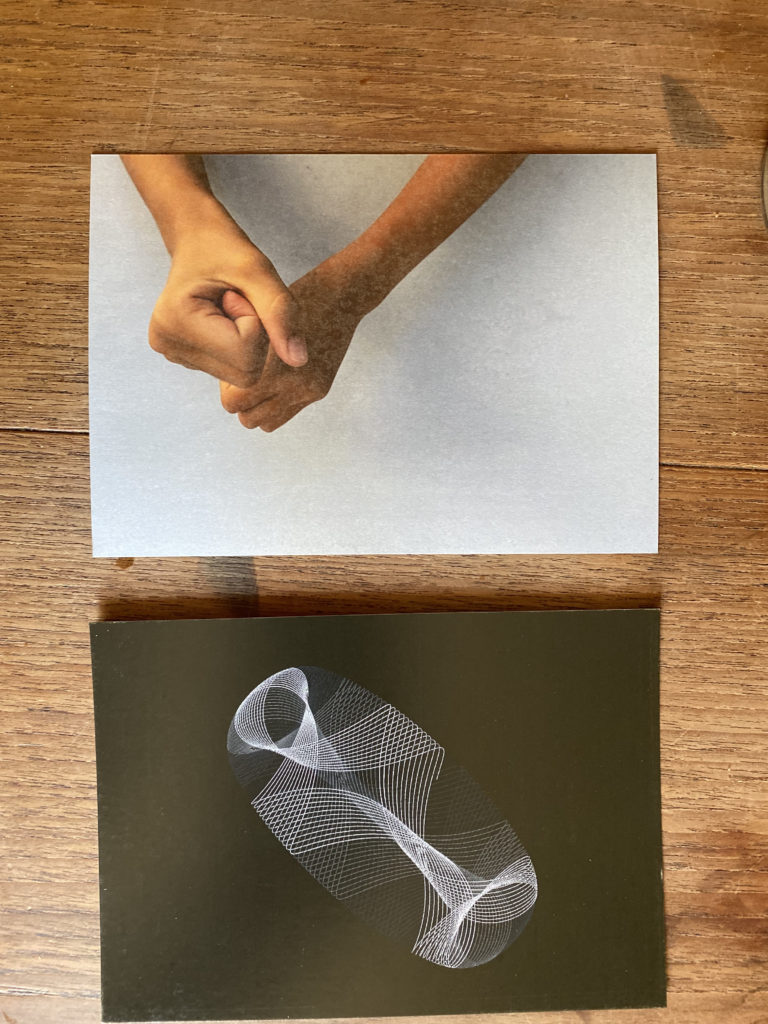
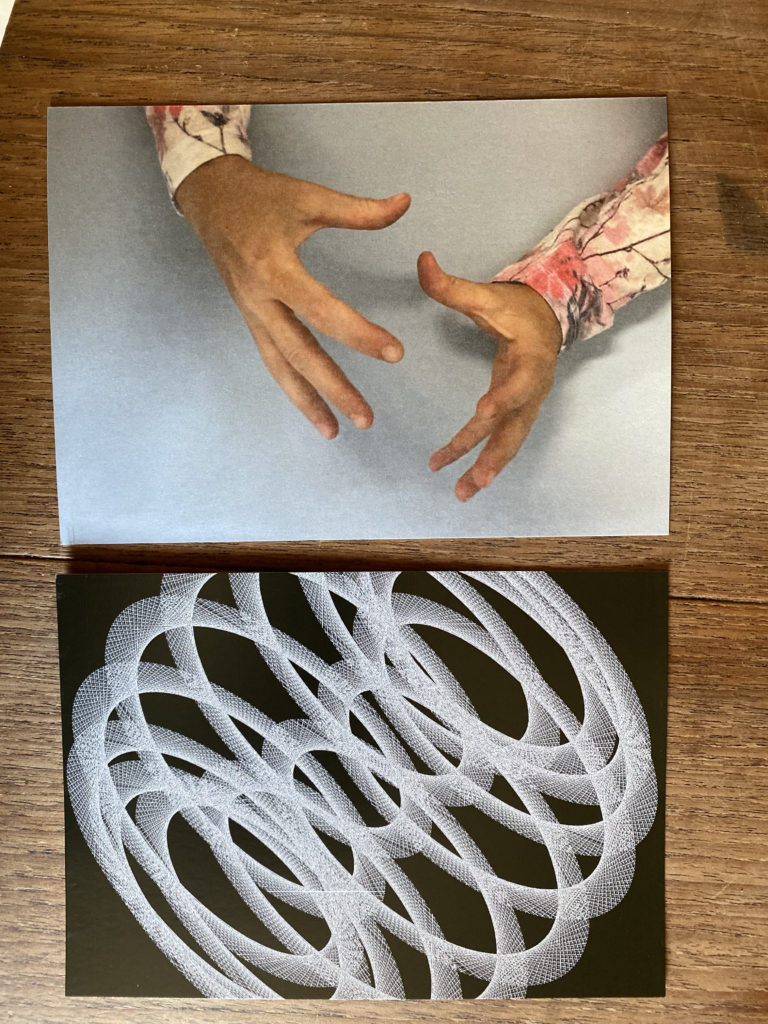
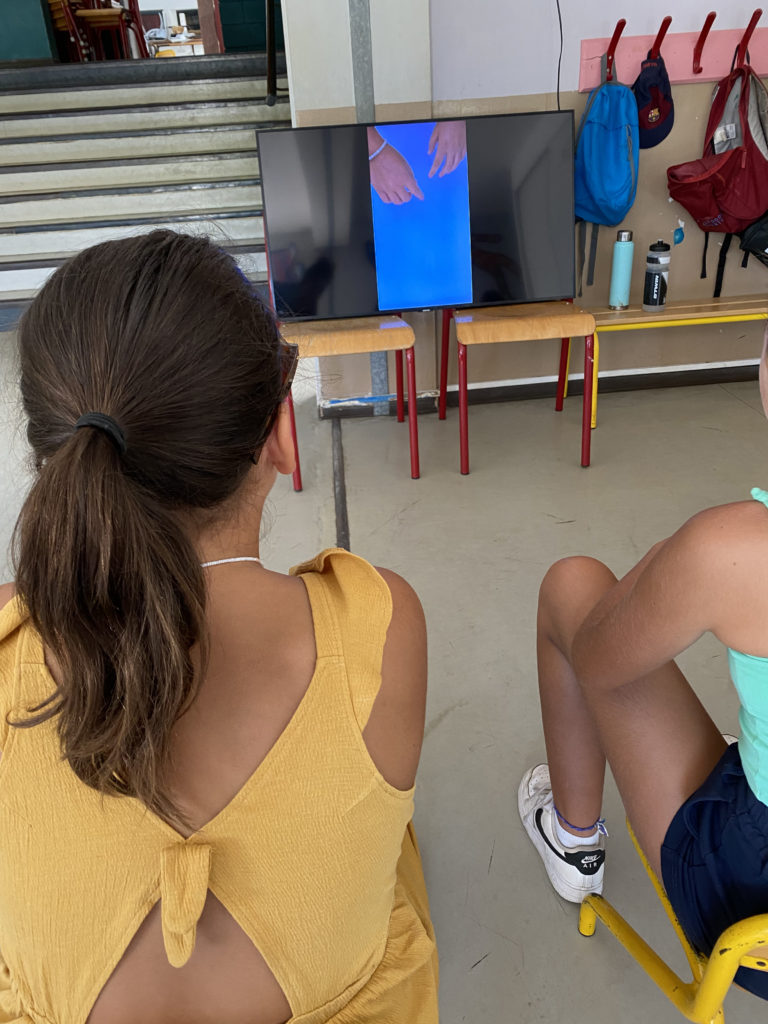
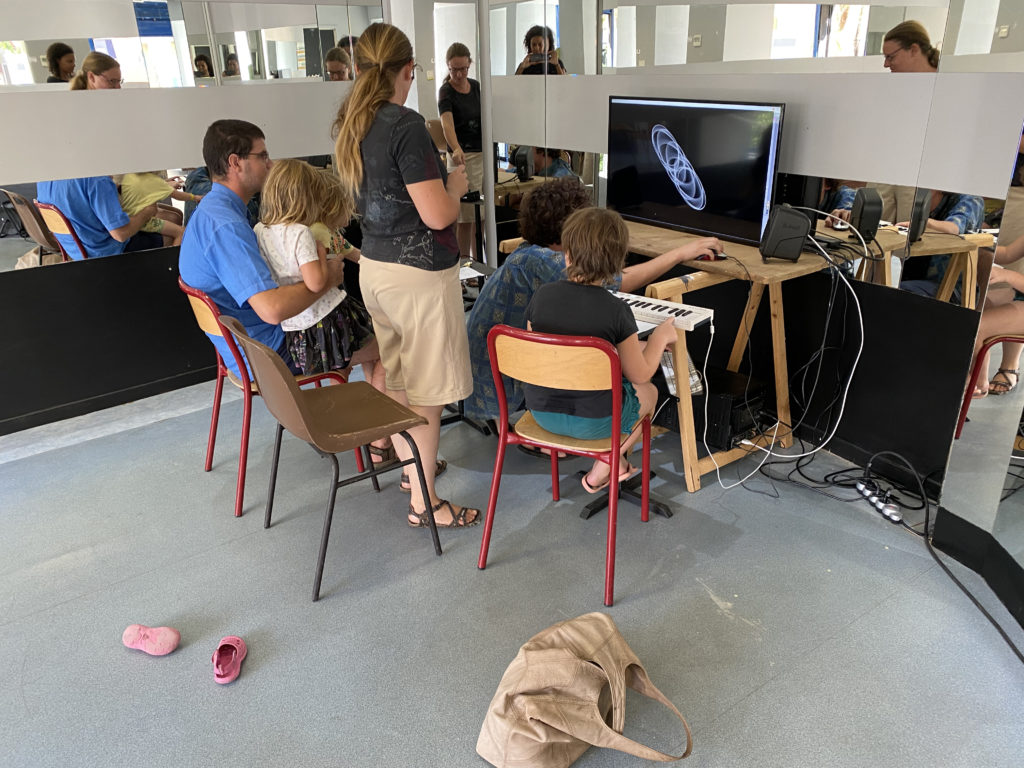
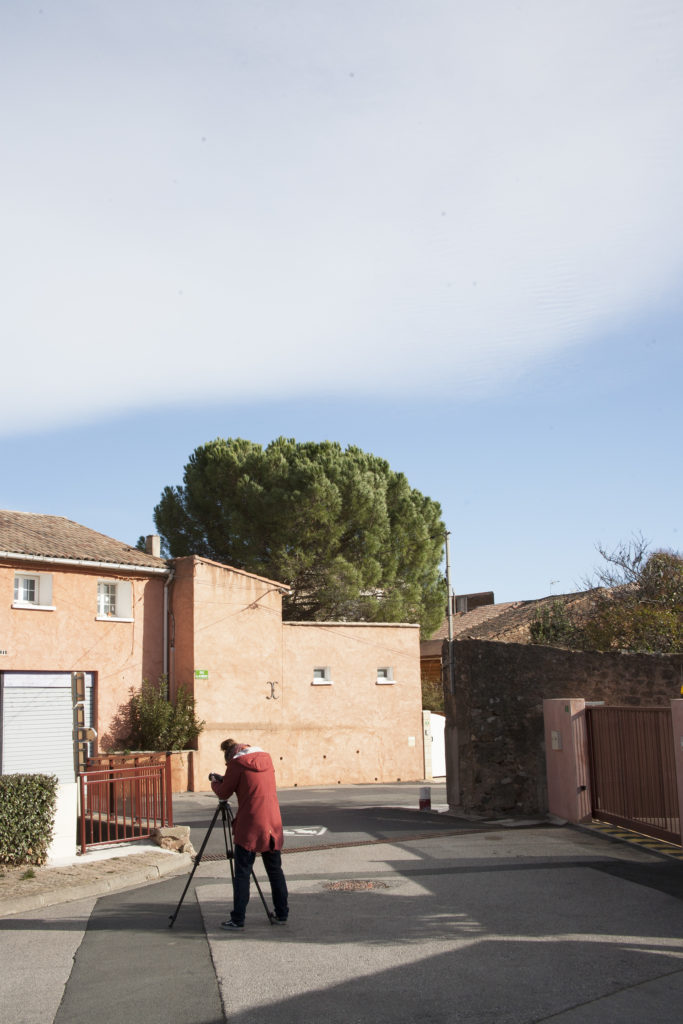
Objets-Souvenirs
Period : January 2018 – December 2022
Team : Kadia Dabo, Kévin Cabaret
Location : Pays Haut Languedoc et Vignobles, France
Partners : European Union – LEADER (via Pays HLV), DRAC Occitanie (Ministry of Culture), Hérault Department, Pays Haut-Languedoc et Vignobles, Ligue de l’enseignement de l’Hérault, Towns and media libraries of Azillanet, Bédarieux, Cessenon-sur-Orb, Laurens
The action-research project Objets-Souvenirs, conducted between 2018 and 2022 by Kadia Dabo and Kévin Cabaret in Pays Haut Languedoc et Vignobles, aimed to merge artistic and psychosocial practices to serve populations with limited access to cultural offerings. Implemented across four municipalities — Azillanet, Cessenon-sur-Orb, Laurens and Bédarieux — it developed a collective support methodology combining visual arts and clinical psychology.
Over four years, 96 workshops were co-led with clinical psychologists, engaging 150+ participants from diverse backgrounds, including psychosocially vulnerable individuals. Participants reinterpreted local heritage objects as artistic mediums. This memory-based territorial approach fostered social connections, self-esteem development, and cultural reintegration. Various techniques were explored including collage, drawing, sculpture, writing and installation.
These expressive forms examined personal/collective narratives while developing spatial body-engaged artworks. Throughout, customized tools were created: workshop protocols, interdisciplinary evaluations, participatory sessions and co-creation frameworks. A board game, Objets-Souvenirs, printed and distributed from 2022, served as both evaluation tool and legacy object. Sensory pathways offered immersive approaches to collective heritage.
Outcomes were shared through public events and cross-sector seminars, disseminating methodologies. Supported by cultural/social/educational partners, this initiative pioneered new psychosocial support models while strengthening territorial cohesion.
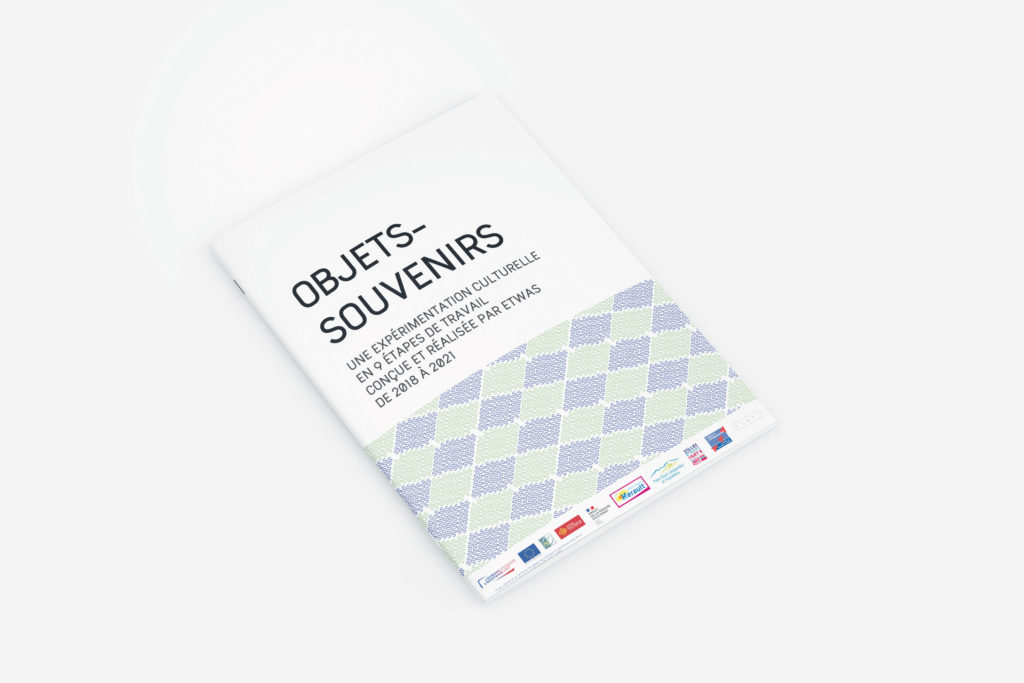
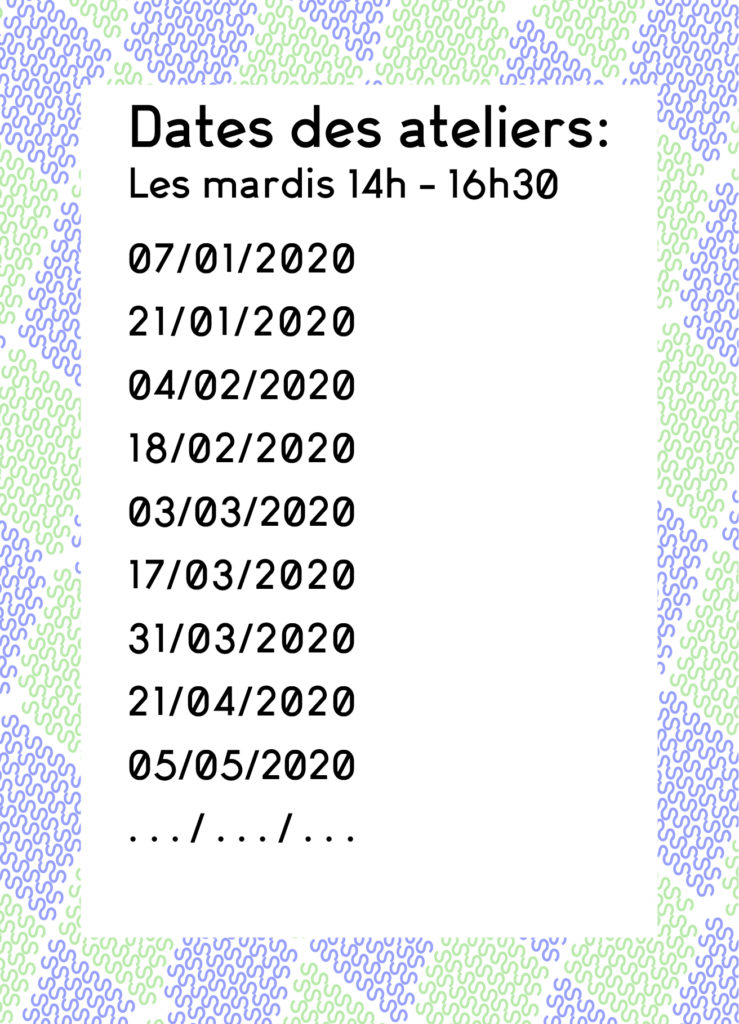
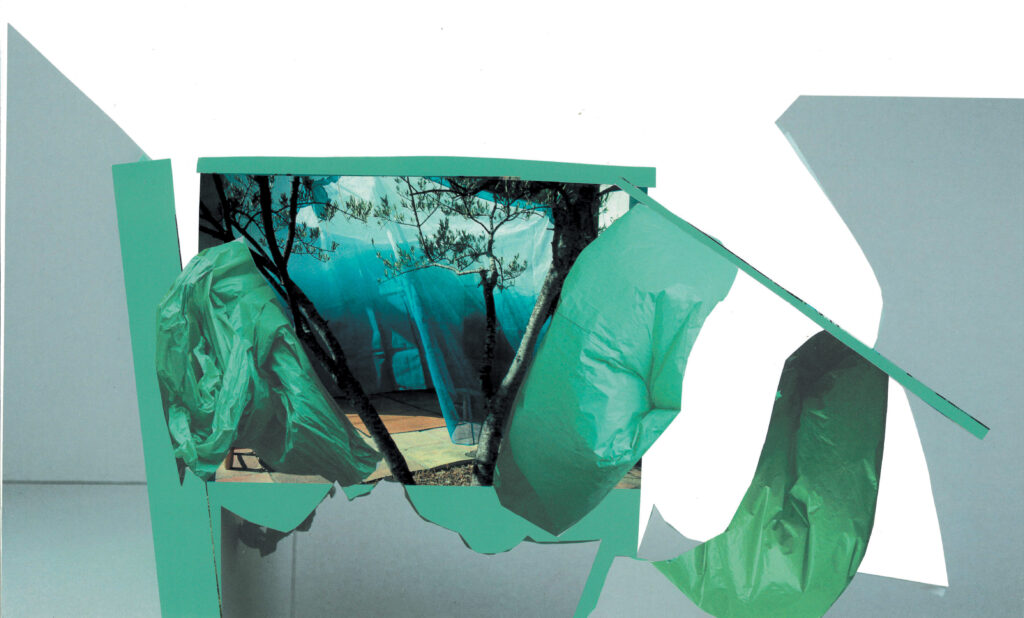
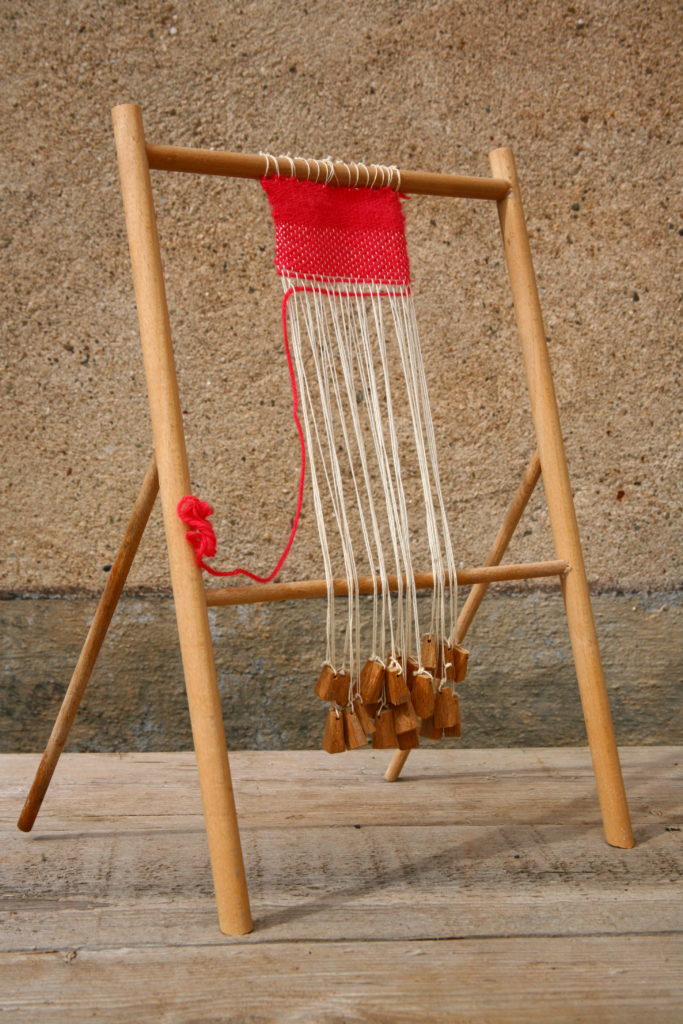
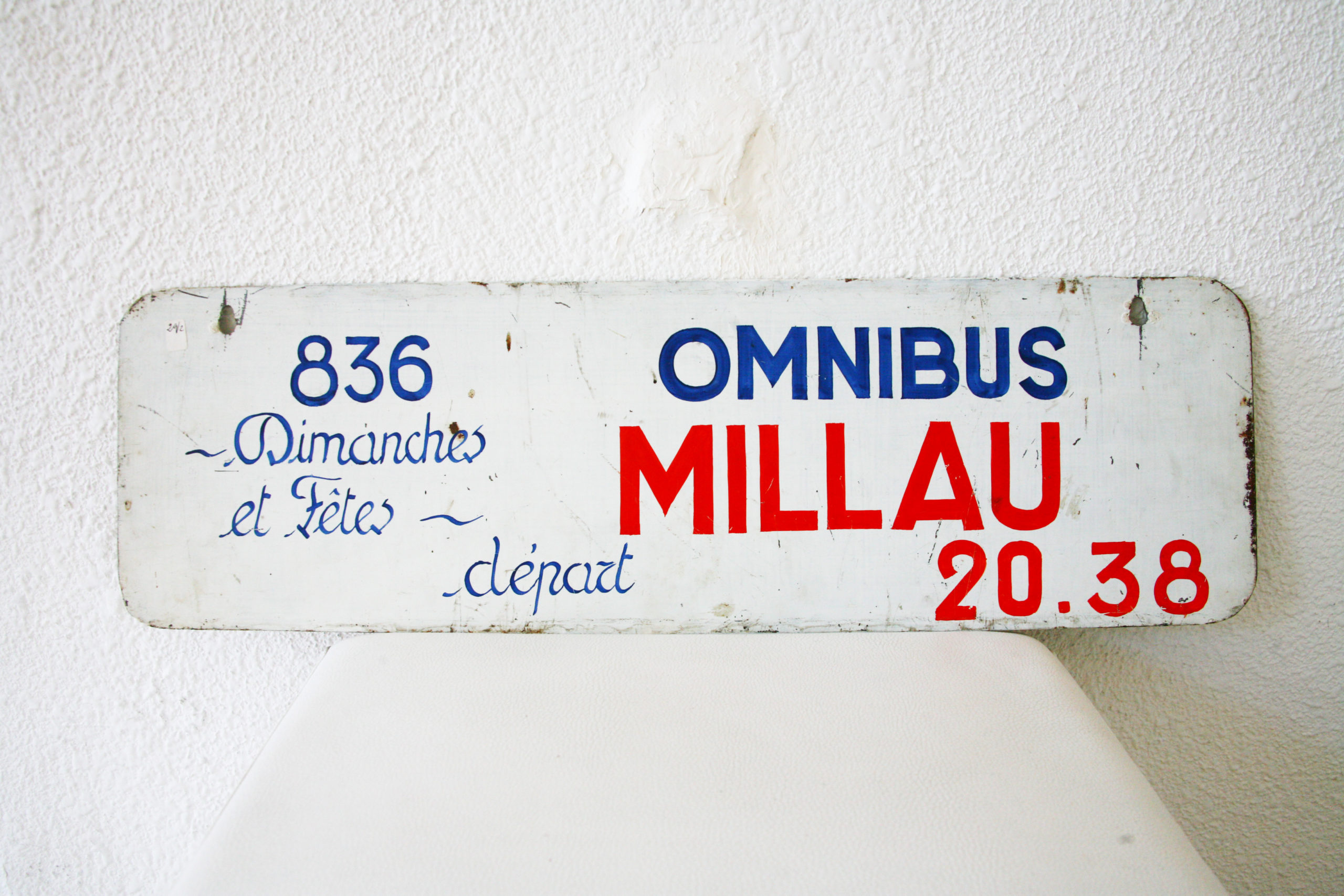
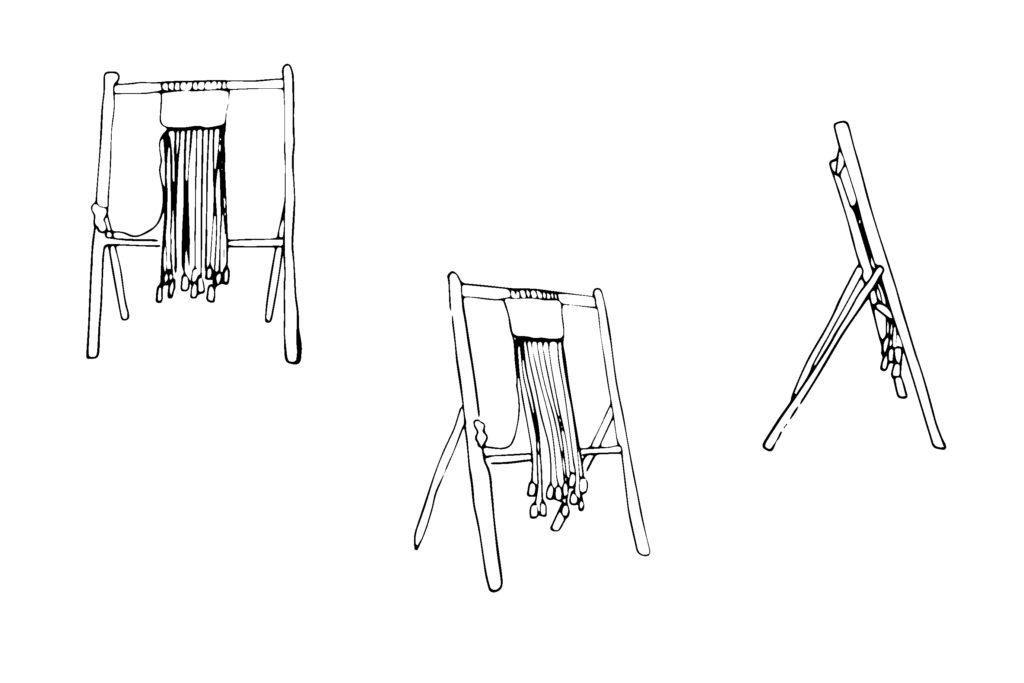
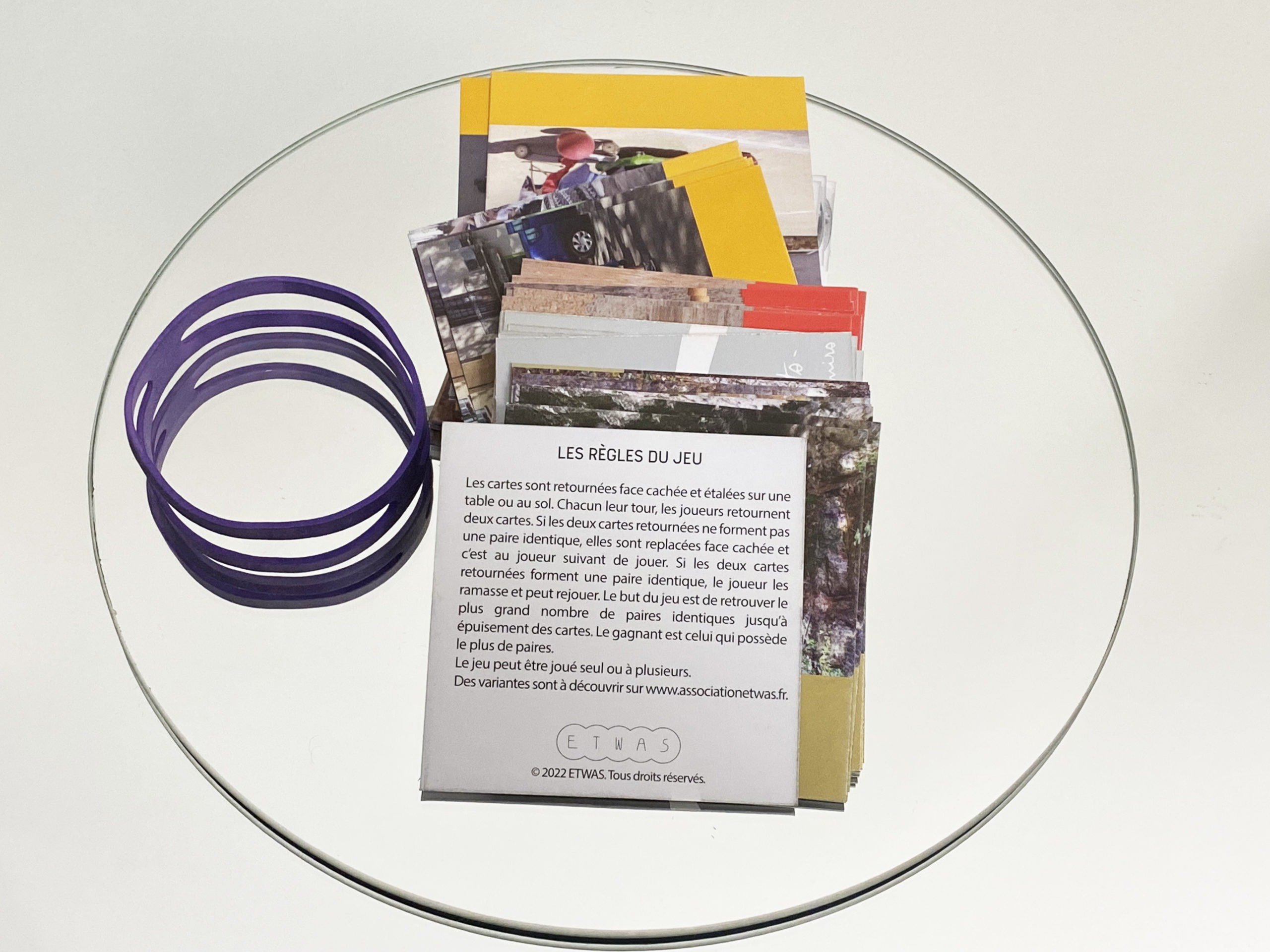
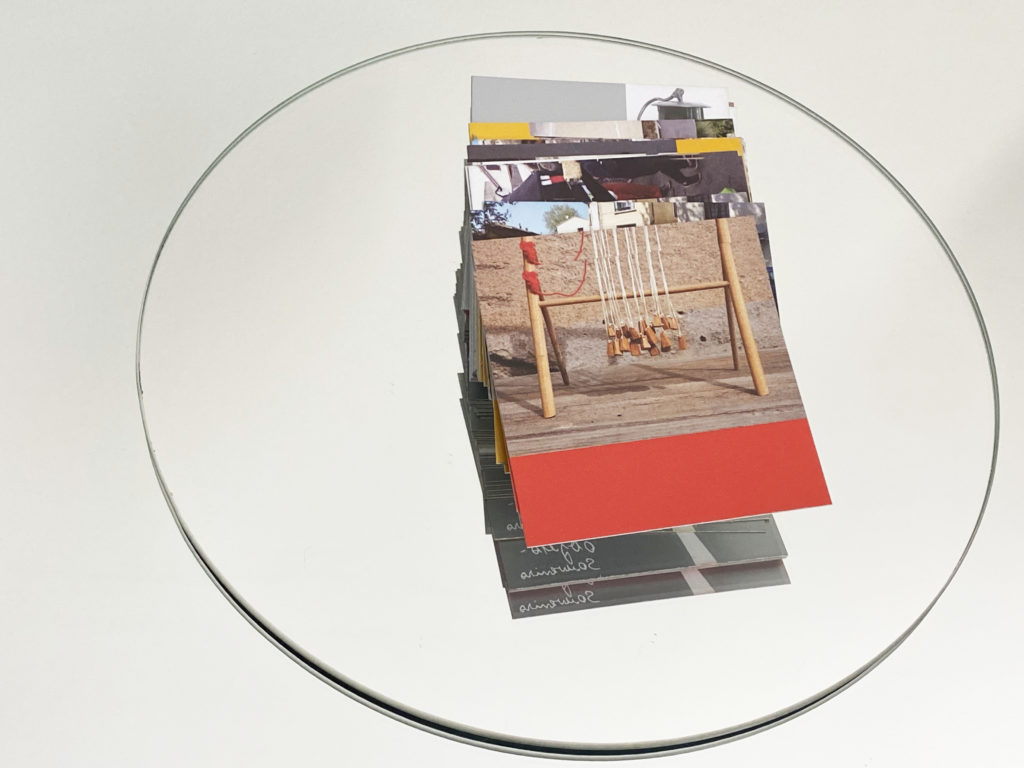
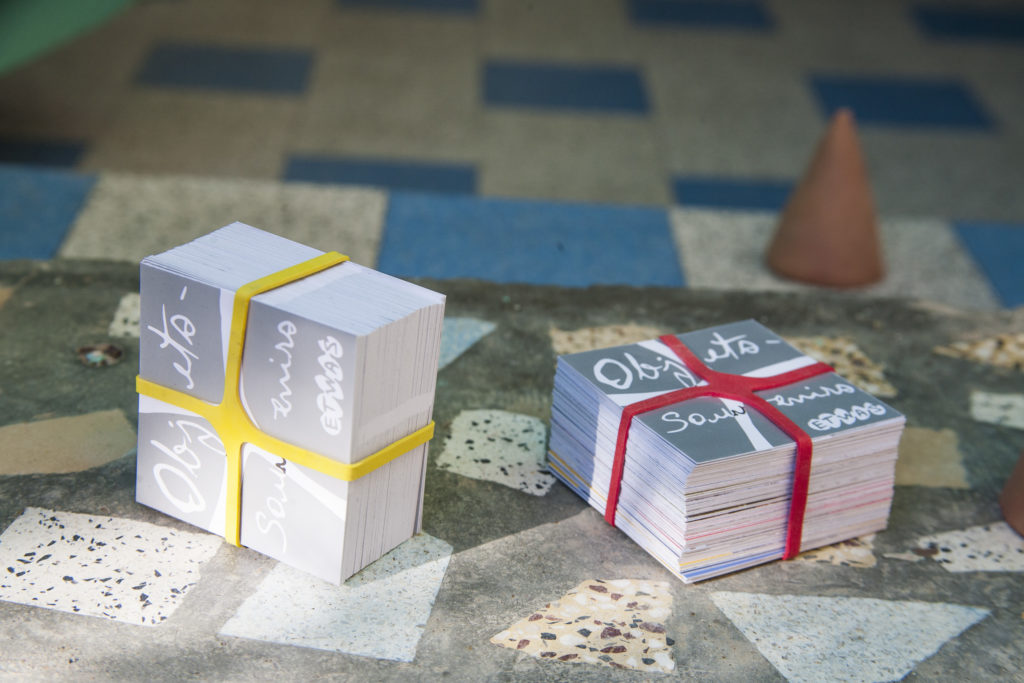
Sur mon chemin
Period : September – December 2021
Team : Kévin Cabaret, Kadia Dabo
Location : La Pergola Day Hospital, Béziers, France
Partners : Culture et Sports Solidaires 34, La Pergola Day Hospital
Sur mon chemin was an artistic co-creation project led by Kévin Cabaret at La Pergola Day Hospital in Béziers, in partnership with Culture et Sports Solidaires 34. Developed in close collaboration with healthcare staff, it invited young patients to artistically explore their daily journeys – both physical and mental – to the hospital. The project emerged from a shared observation by the care team: while the day hospital was perceived as a secure containment space, the outside world appeared unstable, judgmental, and sometimes threatening.
Through ten two-hour sessions, participants observed and represented these transitions between interior and exterior spaces using two mediums: collage and photography.
Collage, with its accessible and playful language, provided an initial approach to forms, colors and textures, easing participants into artistic practice. Photography offered them an active observer’s perspective, enabling them to question their environment while legitimizing a freer relationship with public space. Gradually, hospital outings with cameras opened spaces for reclaiming and dialoguing with the outside world. Each session included ritualized sharing circles where participants discussed their experiences. Sur mon chemin thus fostered a sensitive, collective approach to daily life, where art became a means to overcome isolation and transform perspectives on oneself and one’s environment.
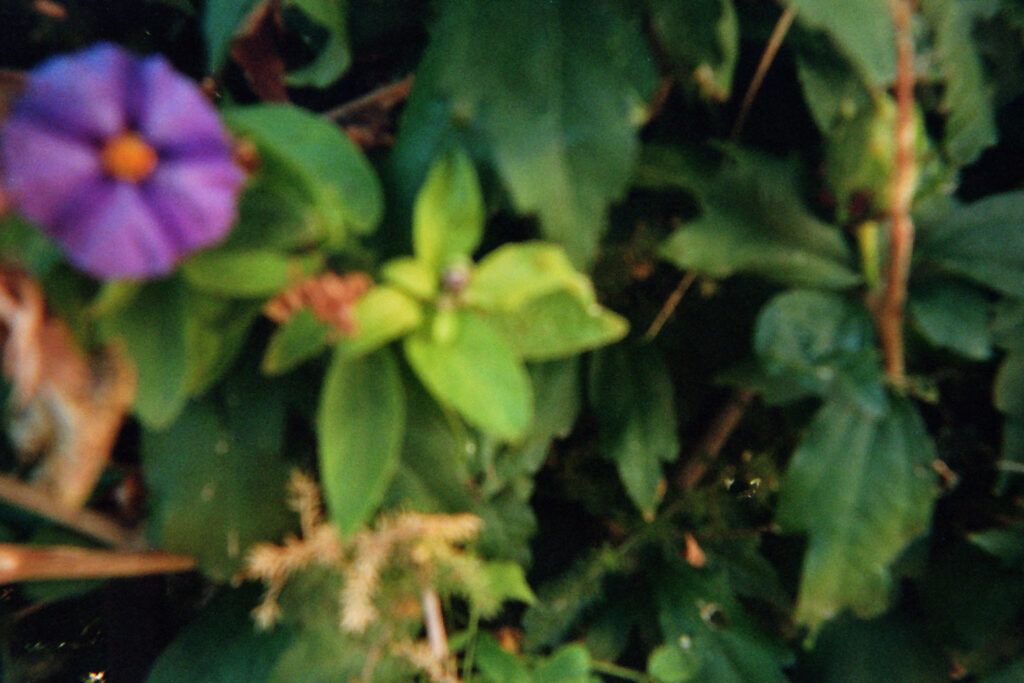
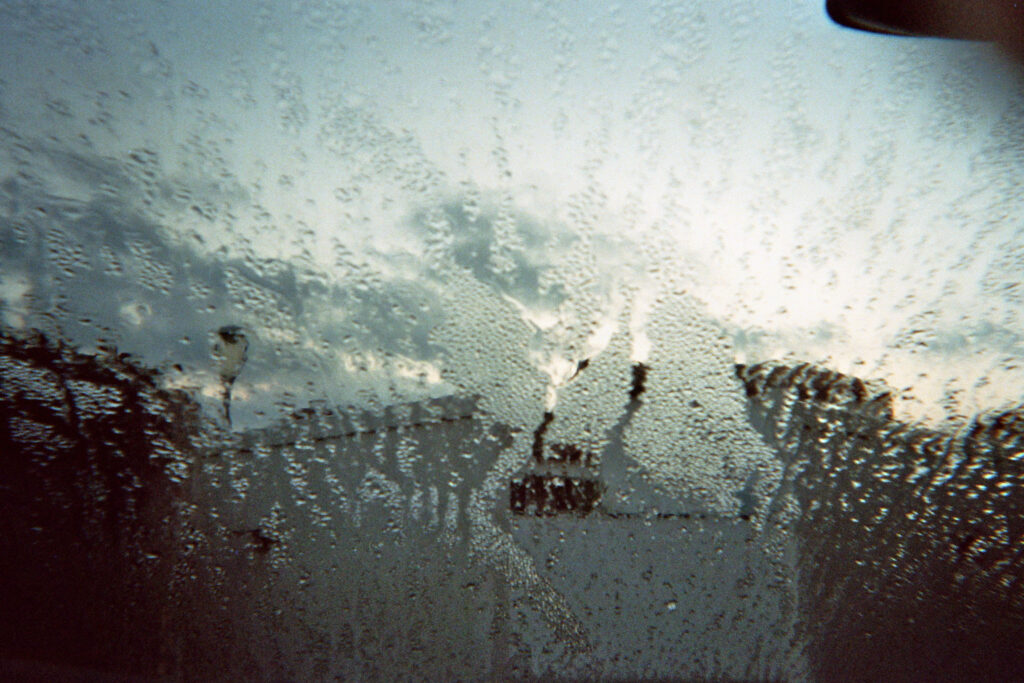
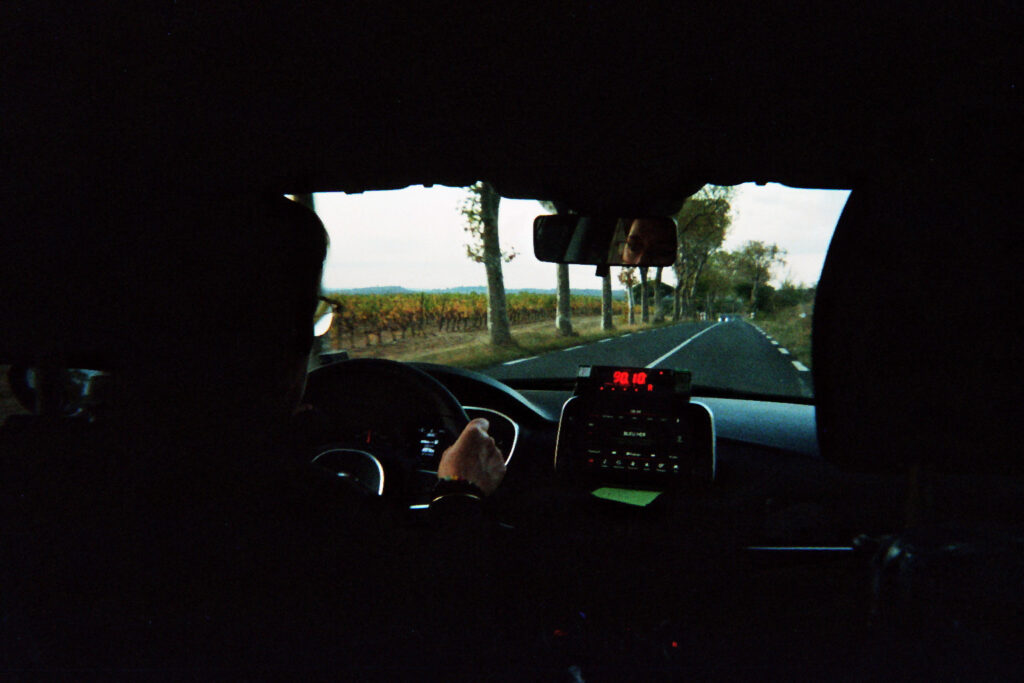
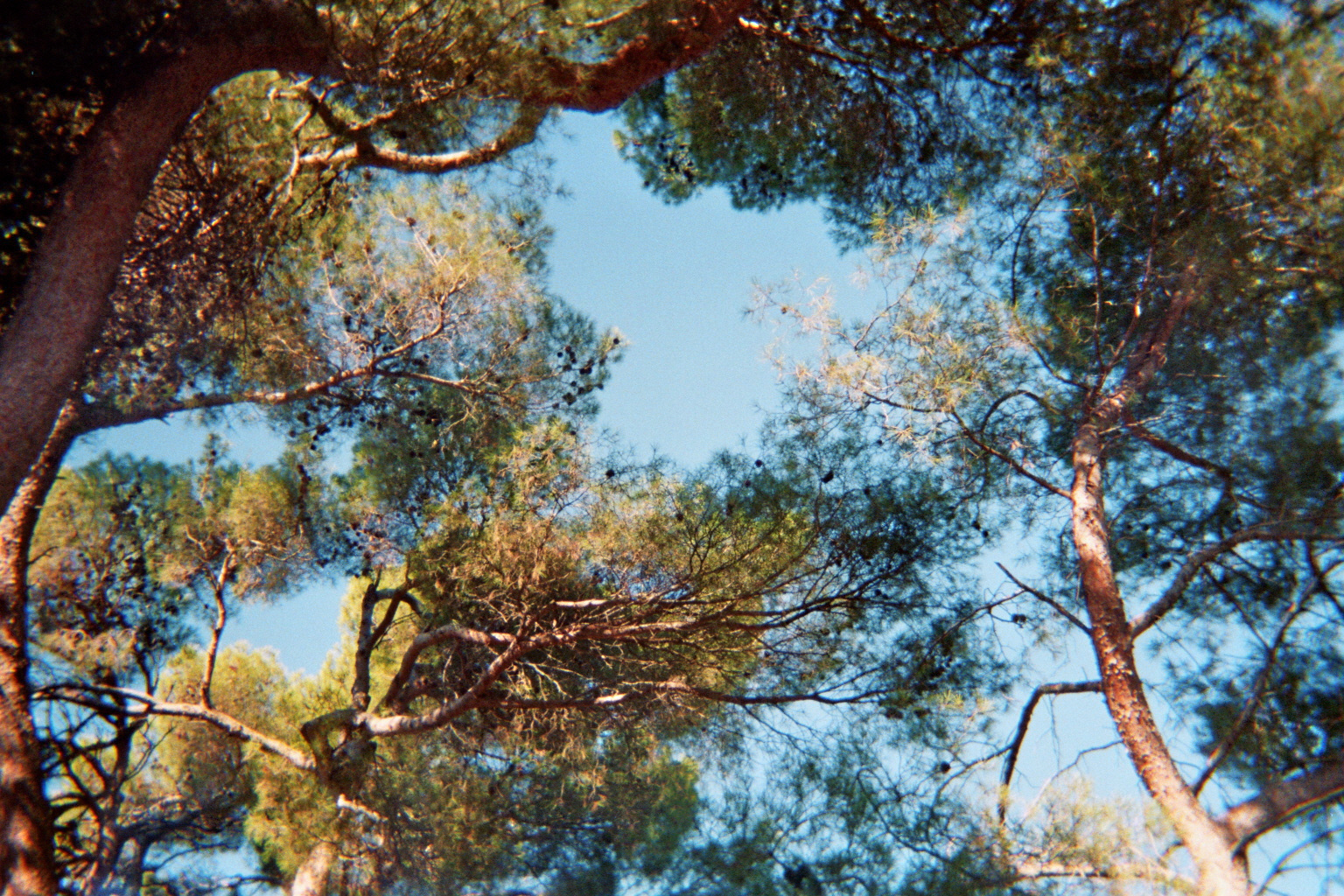
Objets au féminin
Period : September 2019 – October 2021
Team : Bérangère Bordez, Kadia Dabo, Kévin Cabaret, Clara Montrieul, Studio PetitMuller, Nicolas Verschaeve, Juliette Ulrich
Location : Bédarieux, Cessenon-sur-Orb, Lodève, Murviel-lès-Béziers, Saint-Pons-de-Thomières, France
Partners : ANCT (National Agency for Territorial Cohesion), DRAC Occitanie (Ministry of Culture), Occitanie Region, Hérault Department, Musée de Lodève, MRAC, FRAC Occitanie Montpellier
Link to facsimile production :
https://www.arkeofabrik.com/2020/12/bijoux-cailloux.html
Link to Saint-Chinian video :
https://vimeo.com/547091907
Objets au féminin was an action-research project conducted between 2020-2023 within ETWAS, conceived by archaeology specialist Bérangère Bordez, product designer Kadia Dabo and visual artist Kévin Cabaret. The initiative examined representations of femininity through objects, deconstructing social, cultural and scientific classifications that gender artifacts and practices. Its deliberately provocative title challenged arbitrary mechanisms shaping our perception of objects.
Central to the project was a traveling exhibition designed as an immersive, interactive journey. Key pieces included a Neolithic necklace facsimile from Traucade II cave – reproduced by ArkéoFabrik from the Musée de Lodève’s original – Marie Legros’ video work Marcher sur les choses (on loan from FRAC Occitanie Montpellier), and the design project Au corps du réseau developed during Kadia Dabo and Jacob Lyon’s two-month residency with creation/production support, exploring how personal objects become identity extensions in digital contexts.
Exhibition furniture and scenography was designed by Kadia Dabo and Kévin Cabaret with Bilbao’s Studio PetitMuller handling fabrication. The furniture, conceived as organic extensions of artworks, featured self-supporting circular structures for easy installation in non-gallery spaces and adaptable displays for diverse audiences, creating immersive experiences that fostered mediator-visitor dialogue.
Complementary cultural mediation and co-creation workshops accompanied the exhibition. In Saint-Chinian, six elementary and two middle school classes participated in workshops documented as videos by Kadia Dabo, Kévin Cabaret and Juliette Ulrich due to COVID restrictions. Special projects with high schoolers and elementary students in Cessenon-sur-Orb and Murviel-les-Béziers were presented at local media libraries and Saint-Pons-de-Thomières vocational high school, including MRAC museum visits.
In Bédarieux, the former Le Sévillan bar was temporarily repurposed for summer exhibitions and workshops engaging diverse communities. Nicolas Verschaeve led Bout-à-bout workshops exploring clothing/habitat/gender relationships, while Bérangère Bordez conducted scientific sessions on regional statue-menhirs and gender. A highlight was the hairstyle co-creation workshop – precursor to the “Après-shampooing” project – led by Kévin Cabaret and documented by photographer Clara Montrieul, with large-format photos displayed during European Heritage Days.
Thus, “Objets au féminin” transcended cataloging feminine-associated objects to reveal category construction mechanisms. Bridging archaeology, design and visual arts, it created spaces for dialogue and co-creation where researchers, artists and publics deconstructed gendered stereotypes and reimagined body-object-gender relationships.
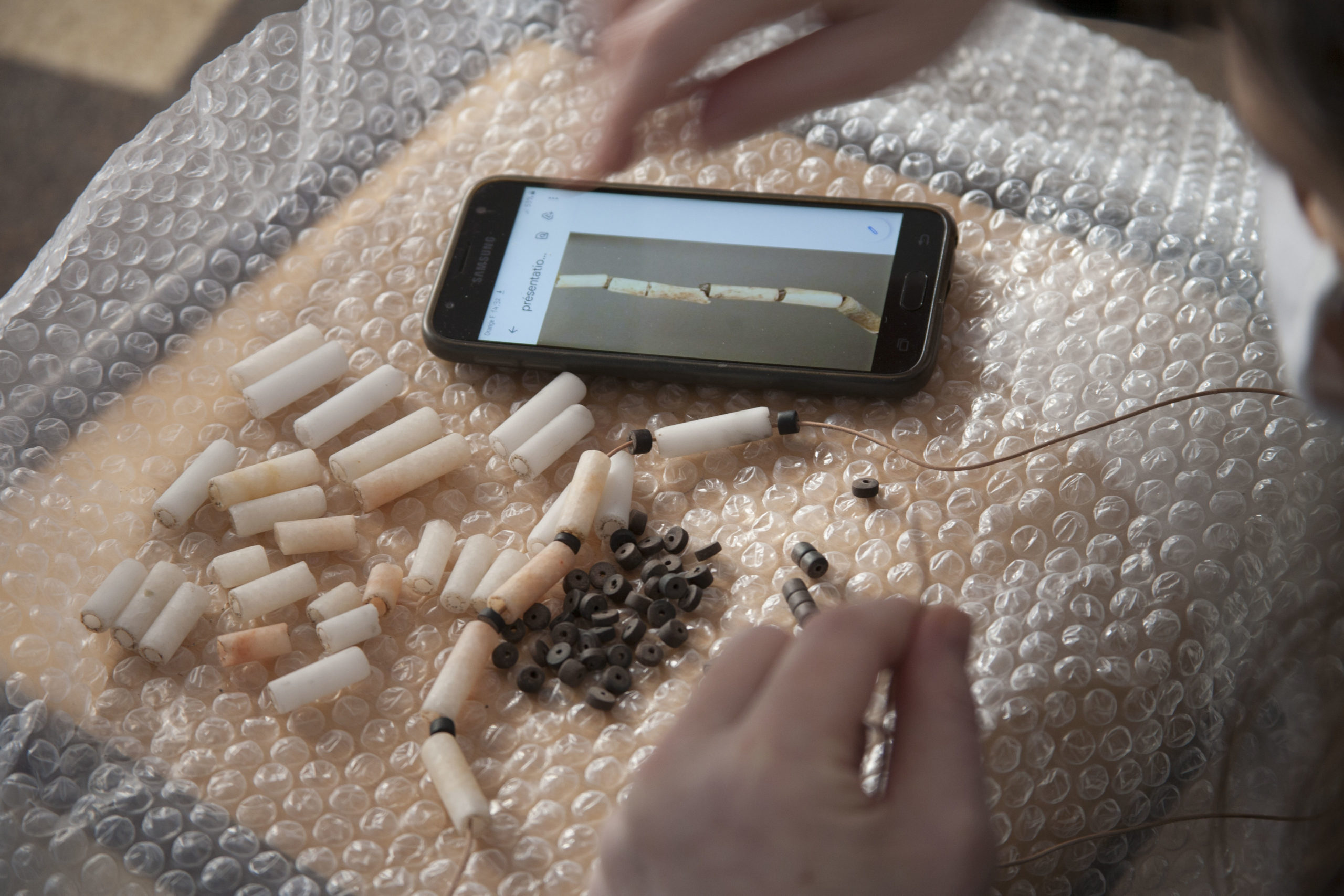
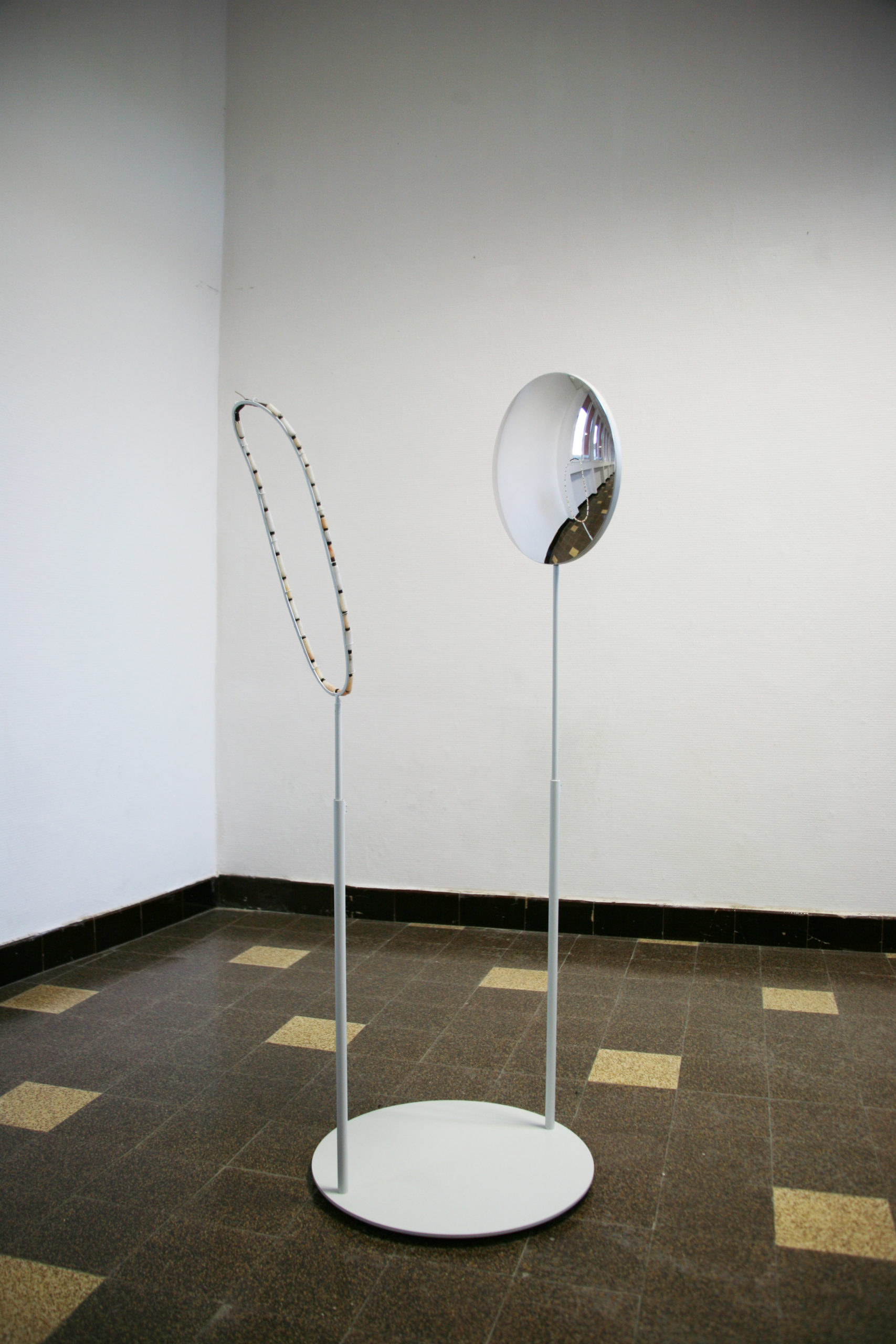
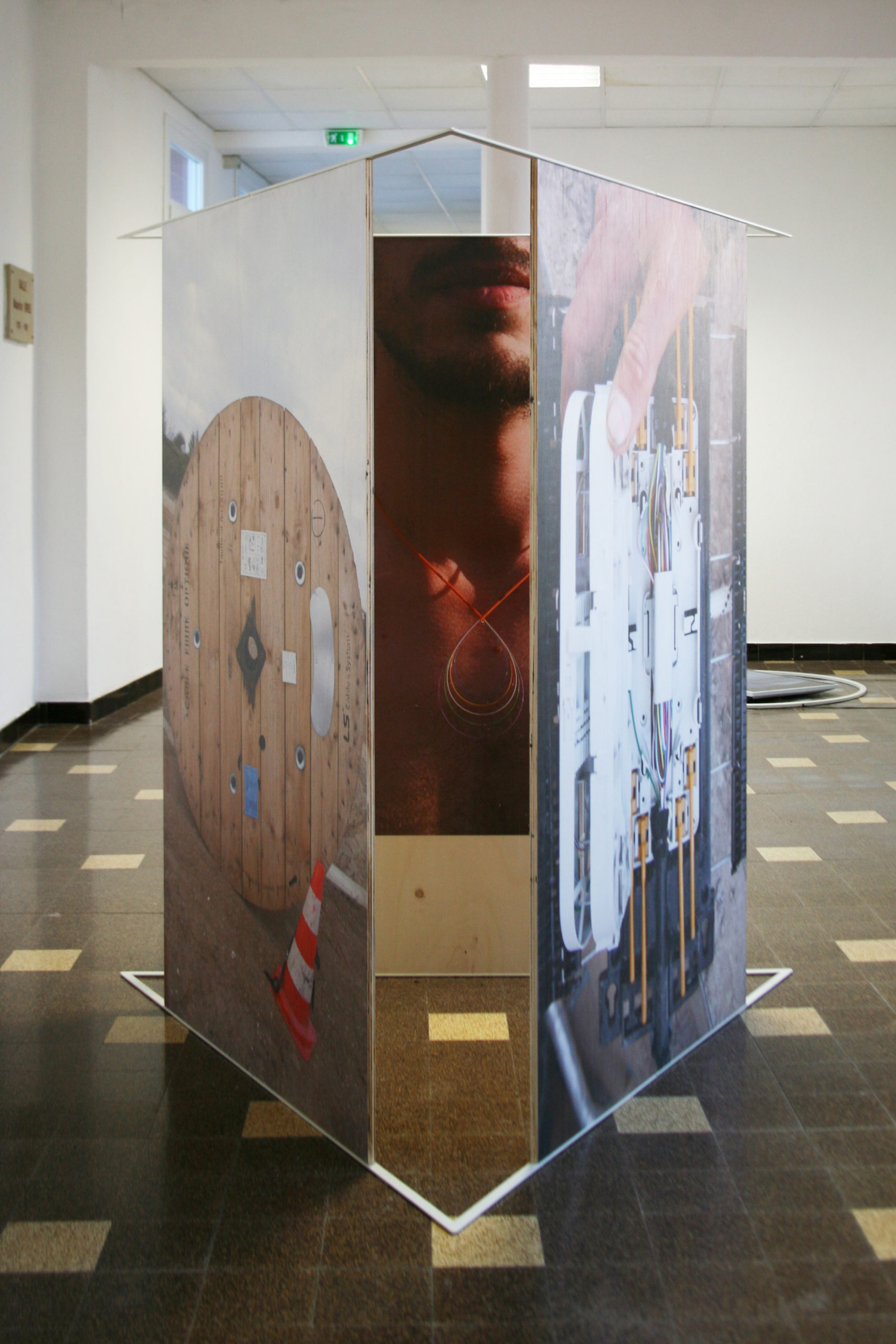
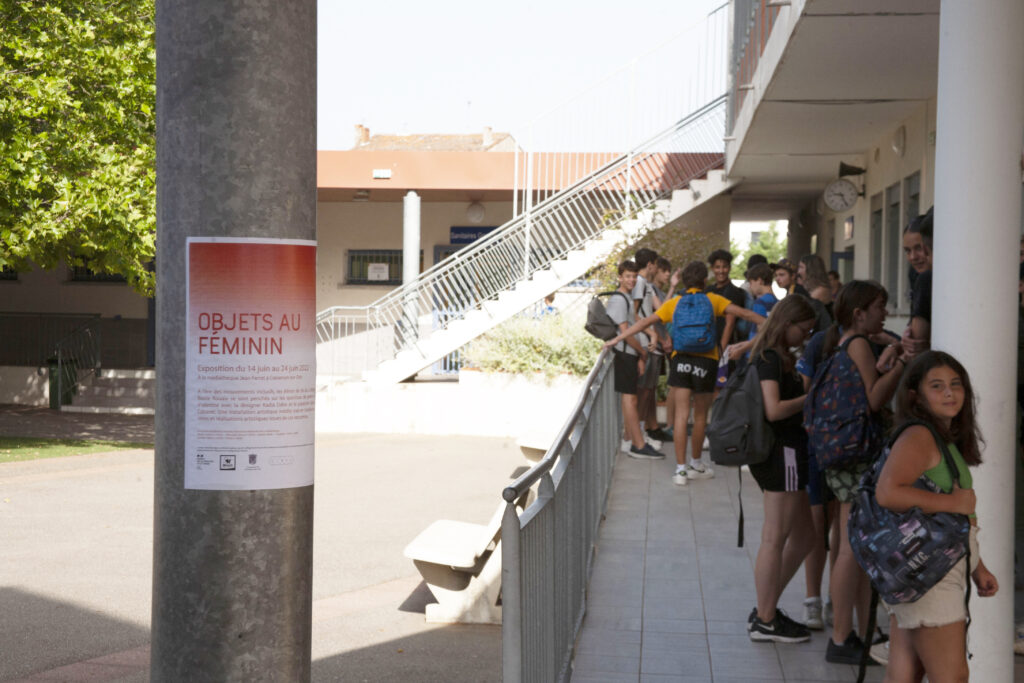
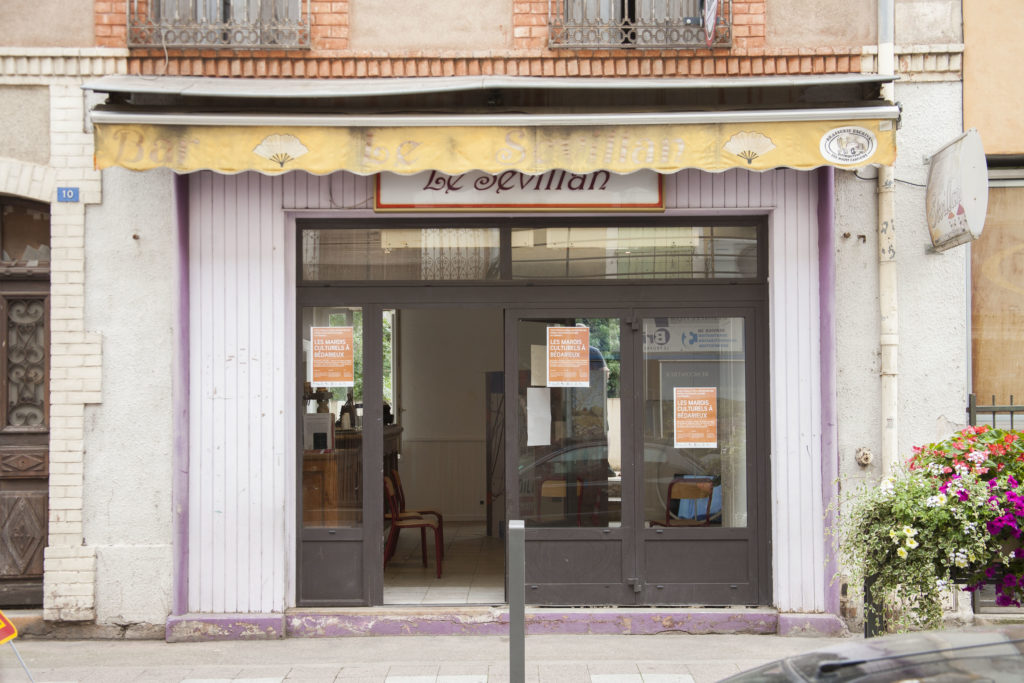
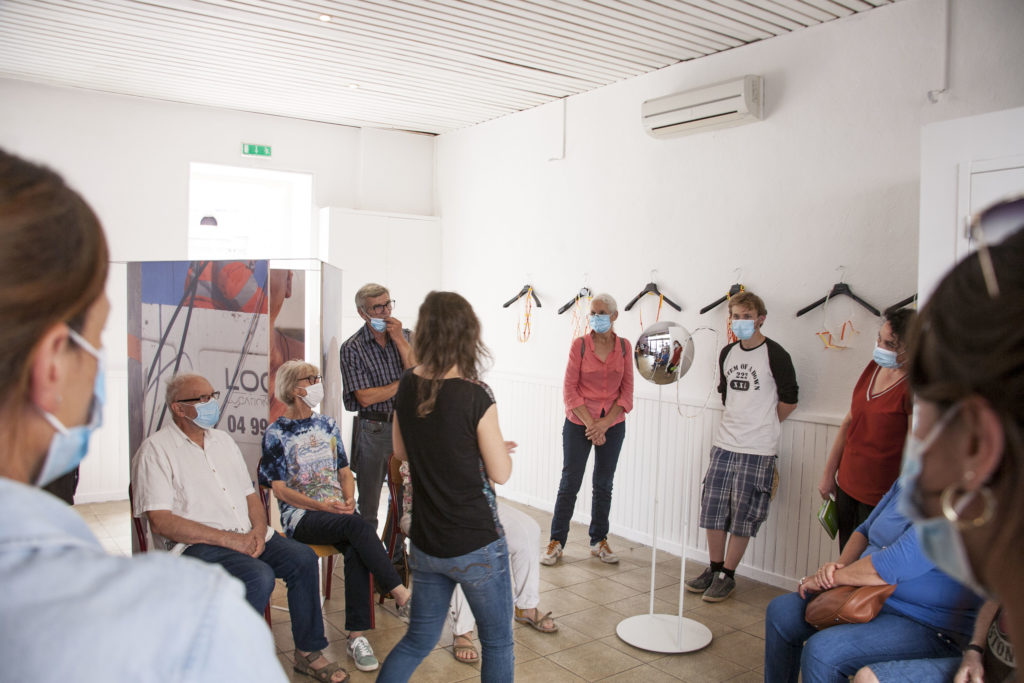
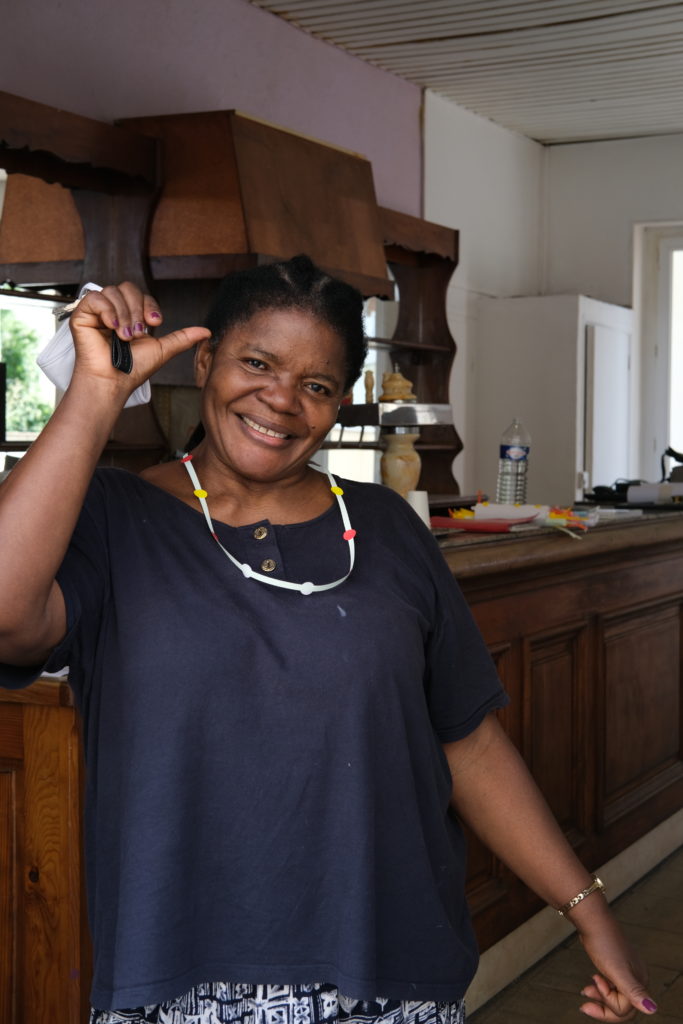
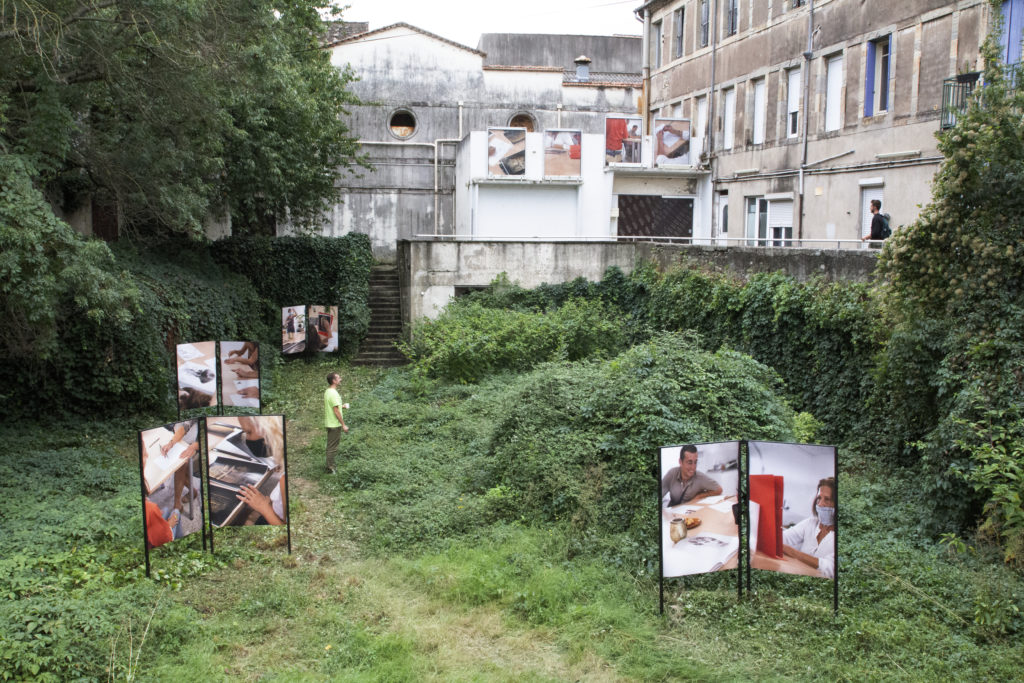
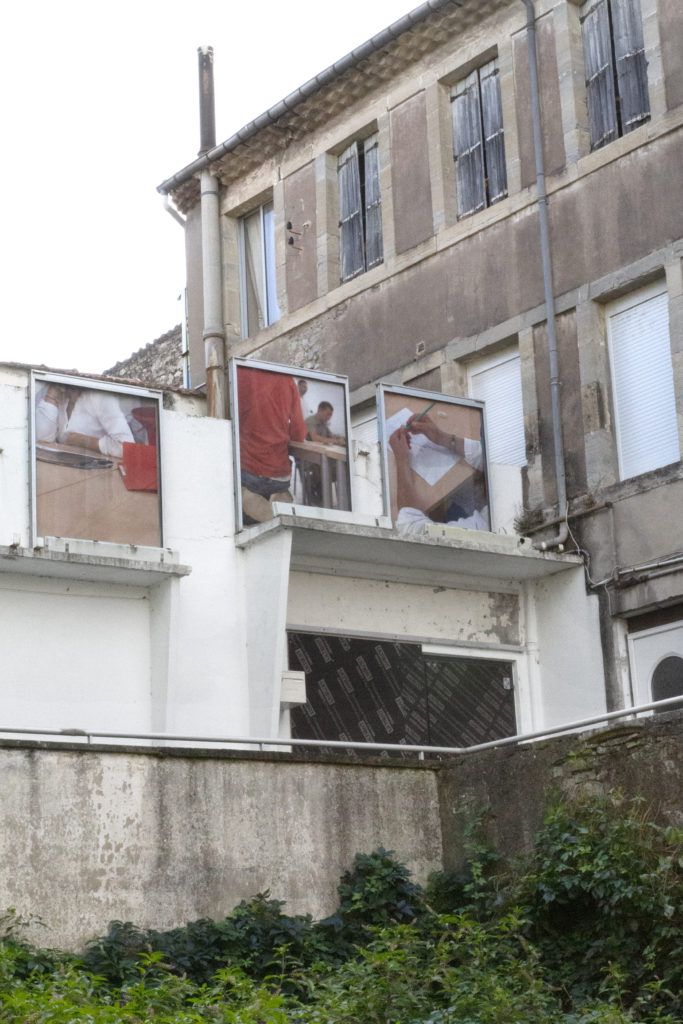
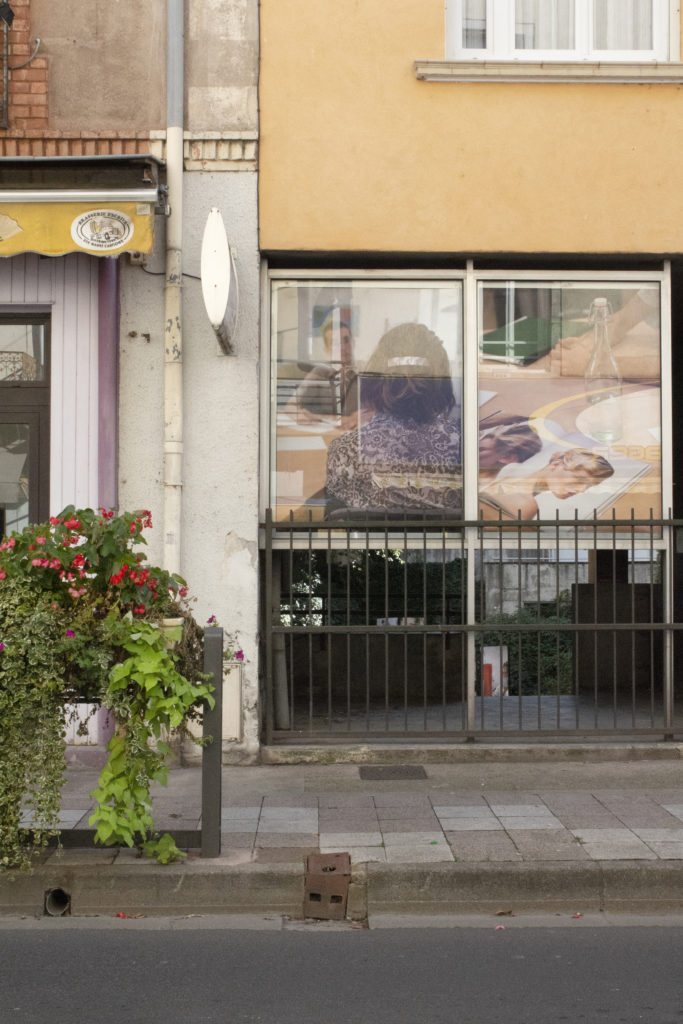
Rencontres du troisième type
Period : July 2021 – September 2021
Team : Kadia Dabo, Kévin Cabaret
Location : Images/Ventenac, Ventenac-en-Minervois, France
Partners : DRAC Occitanie (Ministry of Culture)
Rencontres du troisième type was a cultural mediation project initiated by Kadia Dabo and Kévin Cabaret of ETWAS in collaboration with Images/Ventenac, as part of the L’Adieu exhibition within the Horizons d’eaux #4 contemporary art program during summer 2021.
Installed in the garden at the exhibition entrance, a mobile mediation desk designed and activated by the artists invited visitors (with refreshments) to participate through open-ended questionnaires exploring multiple encounter levels: between Yves Caro’s video L’Adieu and Lilian Bourgeat’s installation Éblouissantes, between artworks and exhibition space, and between public and artist-mediators.
Inspired by Steven Spielberg’s eponymous film, Rencontres du troisième type approached contemporary art as a space for encountering the unknown, where observation, discovery and dialogue took precedence over rigid didactic approaches. Rather than explaining artworks, it used them as starting points for collective exploration: How do you see this work? How do you know what you’re seeing? What’s your relationship to what you perceive?
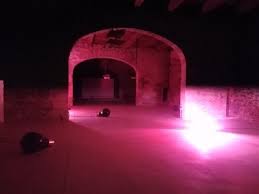
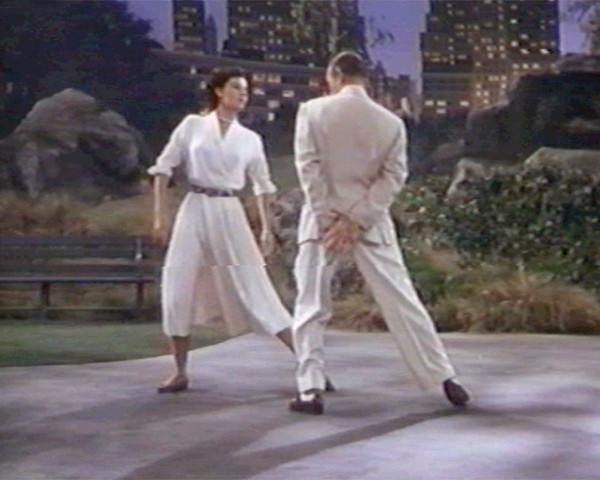
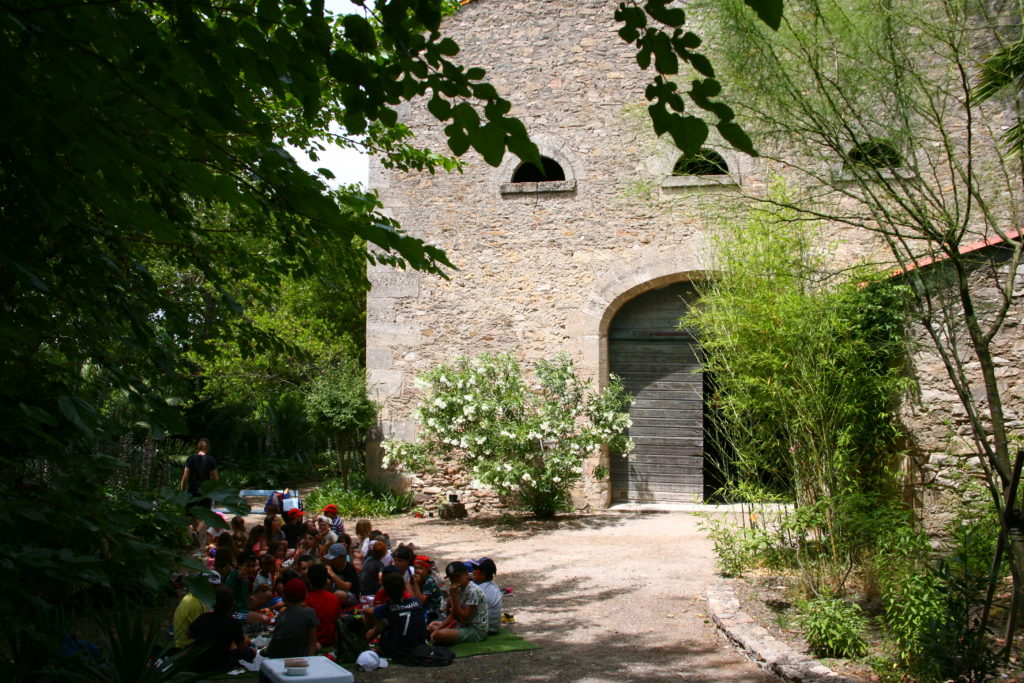
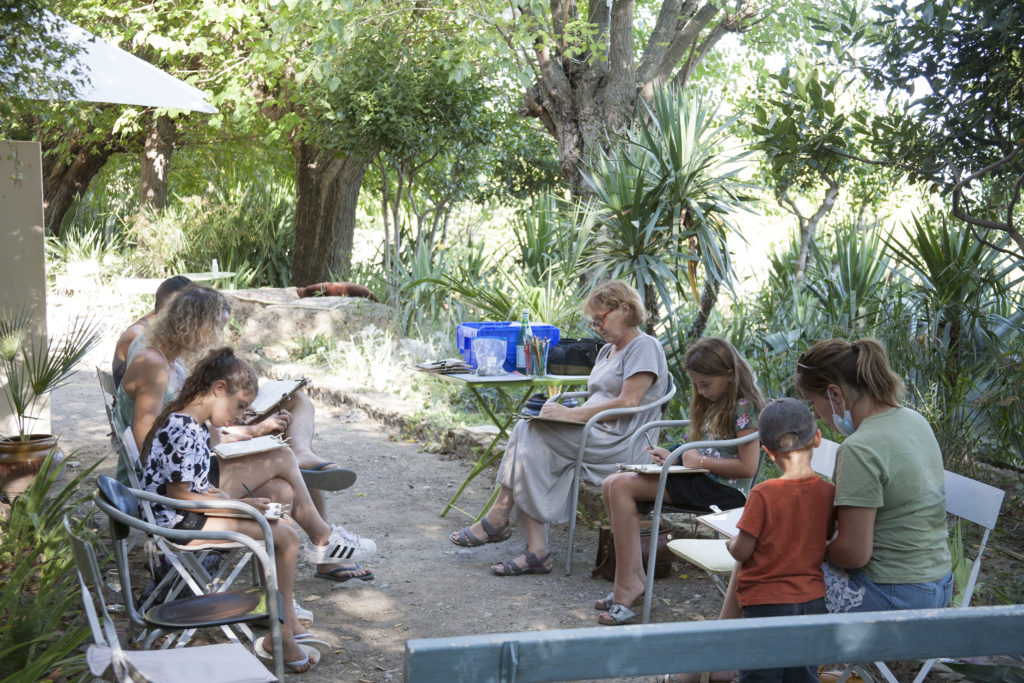
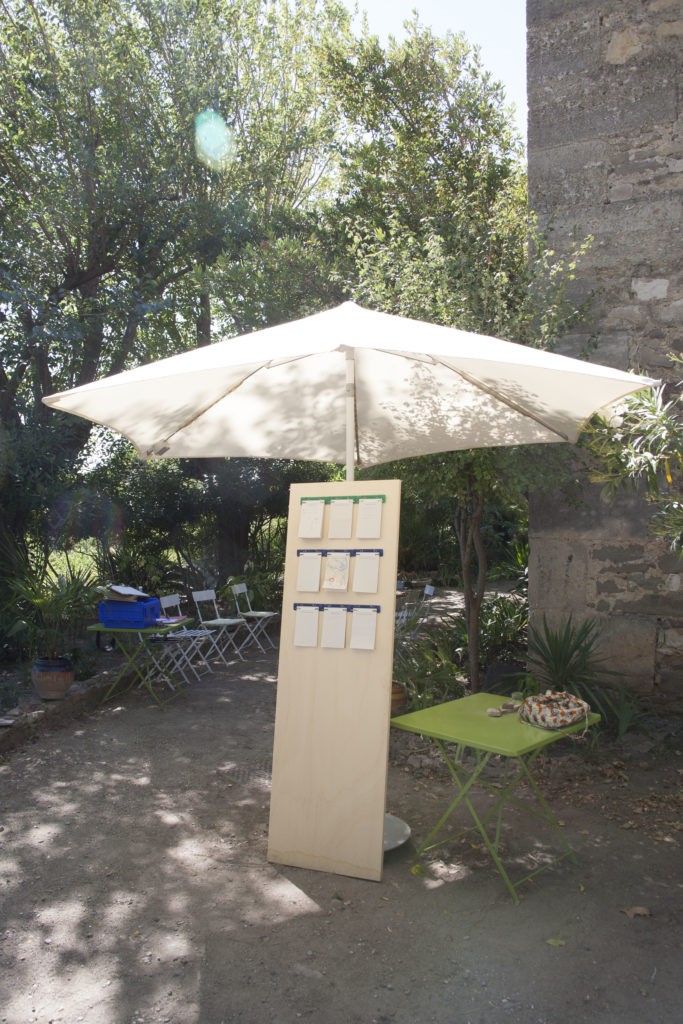
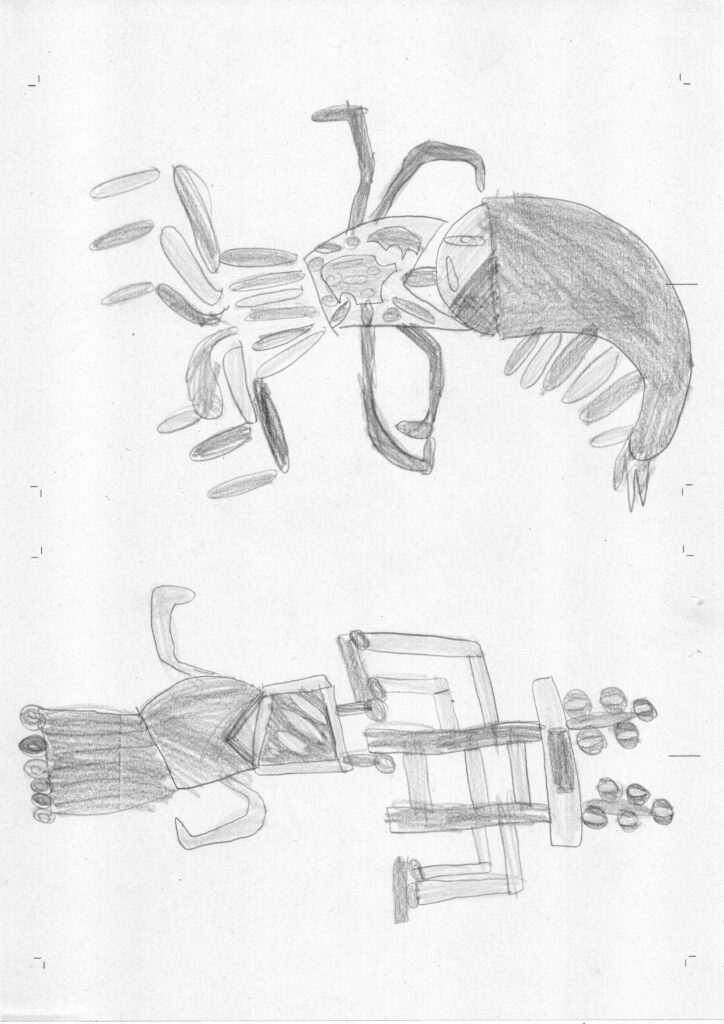
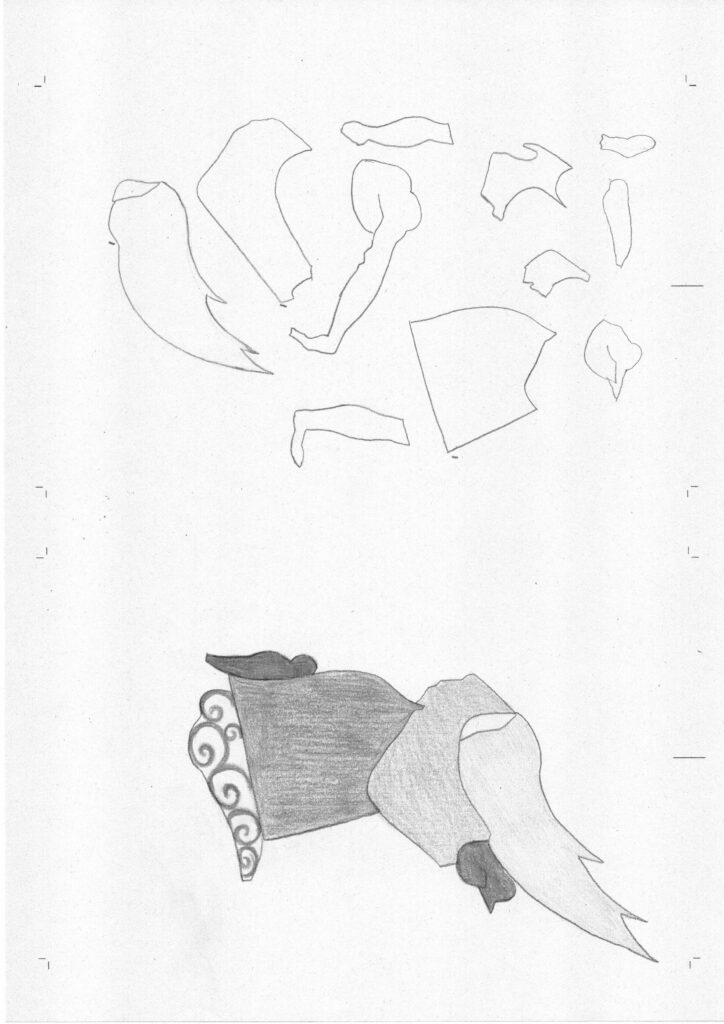
De la feuille à la forme
Period : January 2019 – October 2021
Team : Kadia Dabo, Kévin Cabaret
Location : Pays Haut Languedoc et Vignobles, France
Partners : Ligue de l’enseignement de l’Hérault; Towns and media libraries of Azillanet, Bédarieux, Capestang, Cessenon-sur-Orb, Laurens, Murviel-lès Béziers, Roujan; Musée régional d’Art Contemporain (MRAC) de Sérignan
From January 2019 to October 2021, De la feuille à la forme ran parallel to the Objets-Souvenirs action-research project, strengthening an existing partnership with Ligue de l’Enseignement de l’Hérault and allowing both initiatives to mutually inform each other. The project facilitated over 320 artistic expression workshops across Pays Haut-Languedoc et Vignobles, engaging RSA welfare recipients in psychosocial support programs without making participation conditional on their social benefits.
Designed as collective experimentation spaces, these workshops enabled isolated or vulnerable individuals to explore writing, drawing and collage as means of self-expression and reinvention. Kadia Dabo and Kévin Cabaret conceived each session as an evolving process, where artworks informed subsequent workshops, generating 200+ micro co-creation projects. Hosting workshops in media libraries proved crucial – these strategic cultural hubs provided participants with an empowering, open framework that encouraged sustained local cultural engagement beyond sessions.
Geographic and social isolation – major participation barriers – were overcome through a Ligue-provided minibus transporting participants directly from their homes. This logistical solution contributed to the program’s success, with strong attendance despite no mandatory requirement. Regular visits to Sérignan’s Regional Museum of Contemporary Art expanded participants’ artistic context, facilitating engagement with contemporary cultural references.
Unknowingly, we applied essential principles developed by Wilfred Bion: a structured yet flexible framework, careful attention to group dynamics, and an approach fostering autonomous thinking. De la feuille à la forme became a genuine human laboratory where art served neither as pretext nor mere pedagogical tool, but as a powerful emancipatory lever. The focus wasn’t skill transmission, but creating psychological and collective space where participants could reimagine their place in the world through exchange, imaginative confrontation and discovery of living, shared culture.
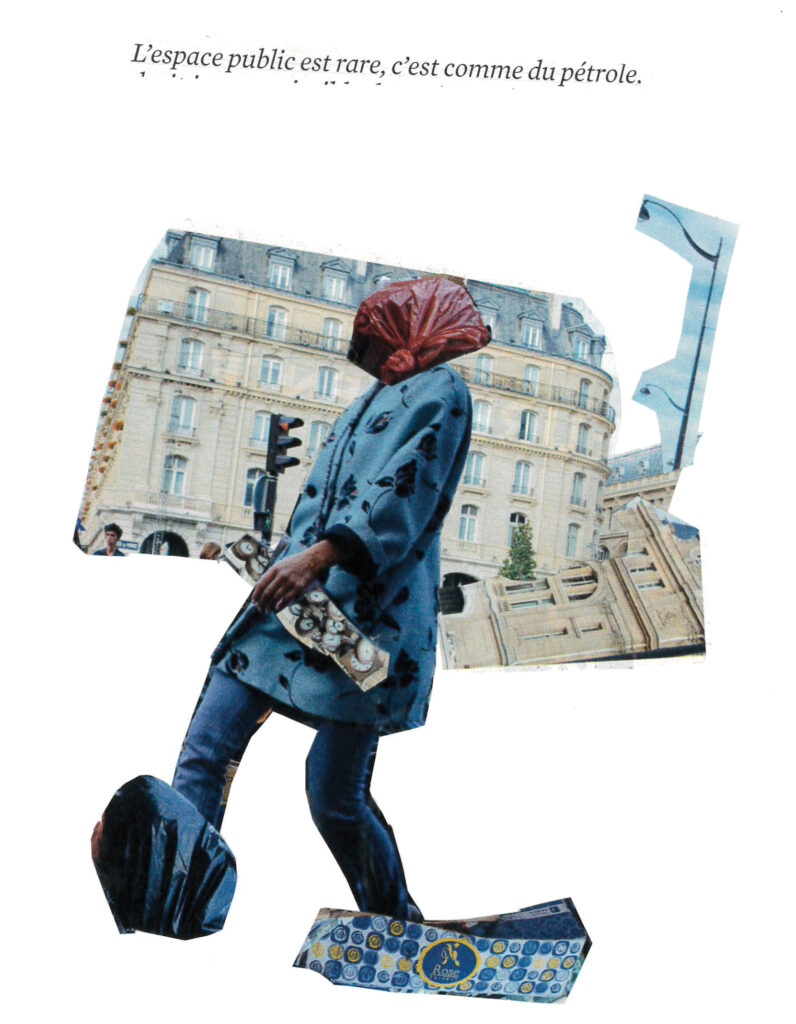
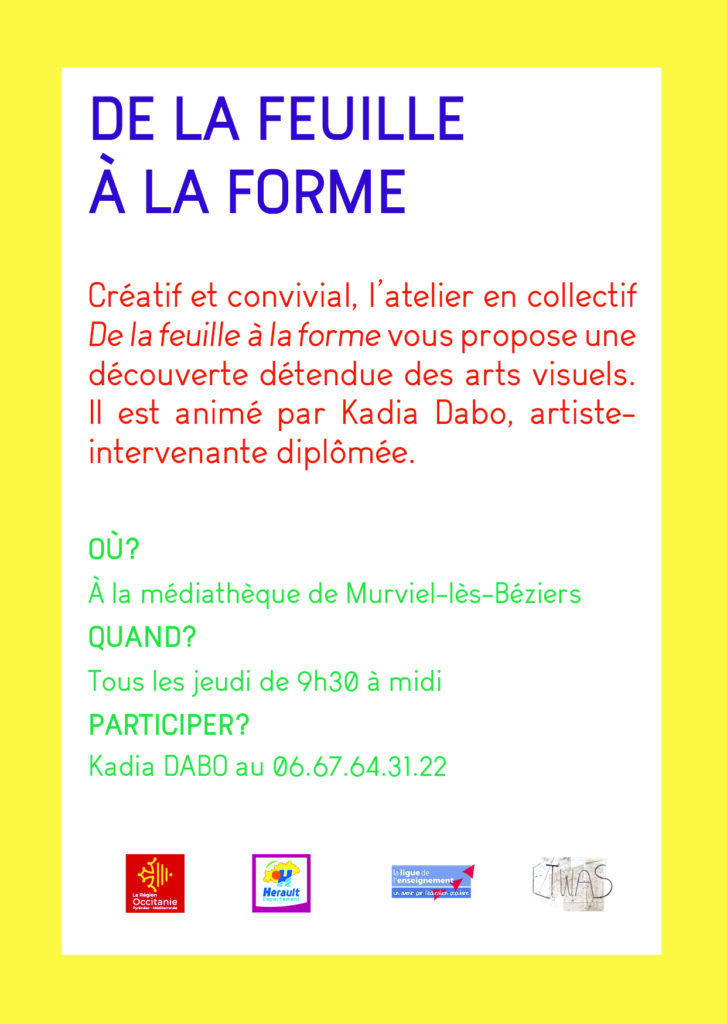
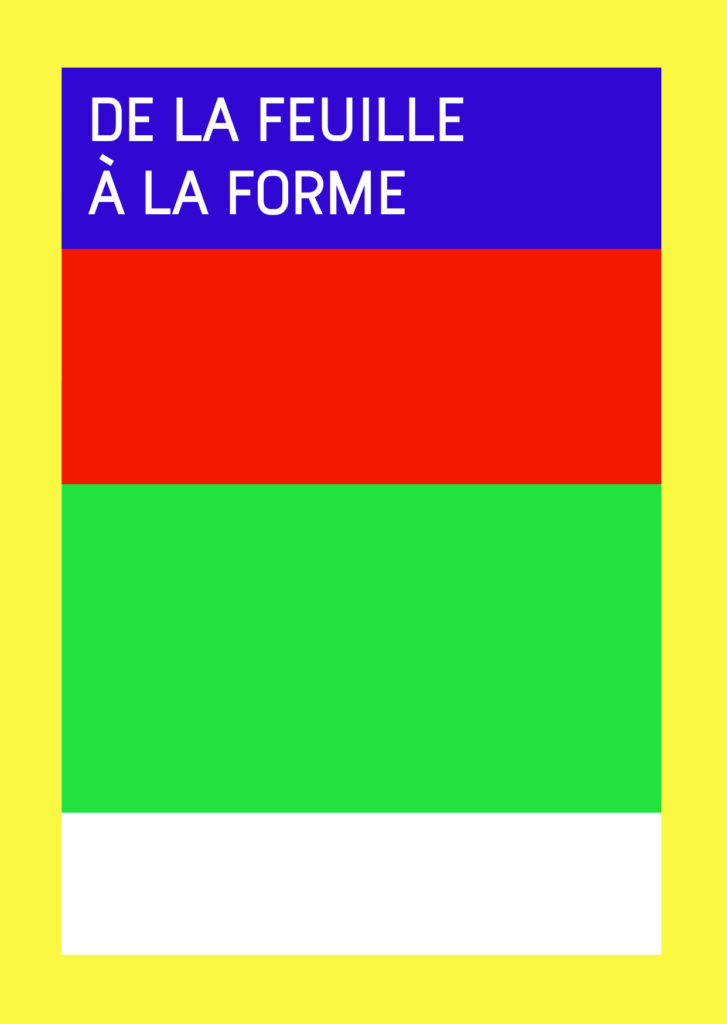
Le Tissu Social
Period : June – September 2019
Team : Kadia Dabo, Kévin Cabaret
Location : Labastide-Rouairoux, Saint-Pons-de-Thomières, France
Partners : ASEI Foyer Frescatis, Labastide-Rouairoux Textile Museum, EHPAD Rouanet-Iché
Le Tissu Social is a project initiated by Kadia Dabo and Kévin Cabaret, exploring the working-class memory of the textile industry in Montagne Noire through an intergenerational and inclusive approach. Developed in dialogue with former textile workers now residing at EHPAD Rouanet Iché, adults with disabilities from Foyer Frescatis, and social workers, it wove connections between life stories, craftsmanship, and individual narratives.
In partnership with these institutions and the Labastide-Rouairoux Textile Museum, the workshops facilitated intergenerational exchanges and an in-depth exploration of the sensory memory of former factory workers’ daily lives through collage. More than just collecting testimonies, the shared creative experience enabled participants to explore work memories and propose their plastic reinterpretation.
The project culminated in an exhibition at the Textile Museum during the 2019 European Heritage Days. Featuring collages printed on fabric and audio recordings with Françoise Tailhades’ magnificent voice, this installation created a space for sharing and encounter where participants could present their experience to the public.
Through its sensitive and participatory approach, Le Tissu Social examines the place of workers’ stories in collective memory and affirms art’s role as a tool for transmission and inclusion.
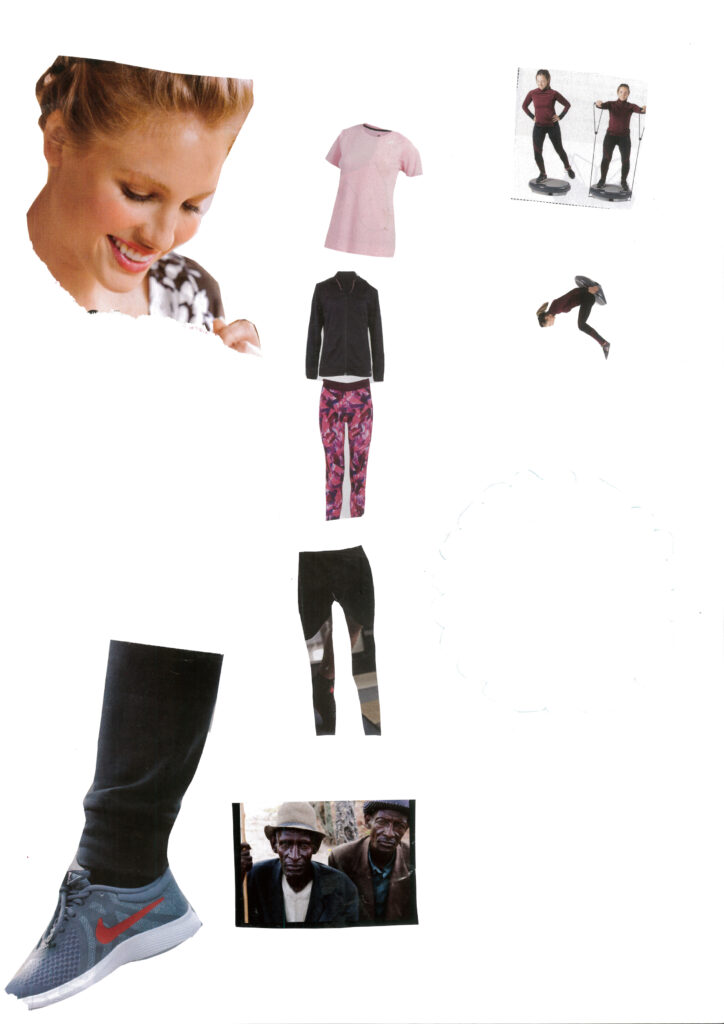
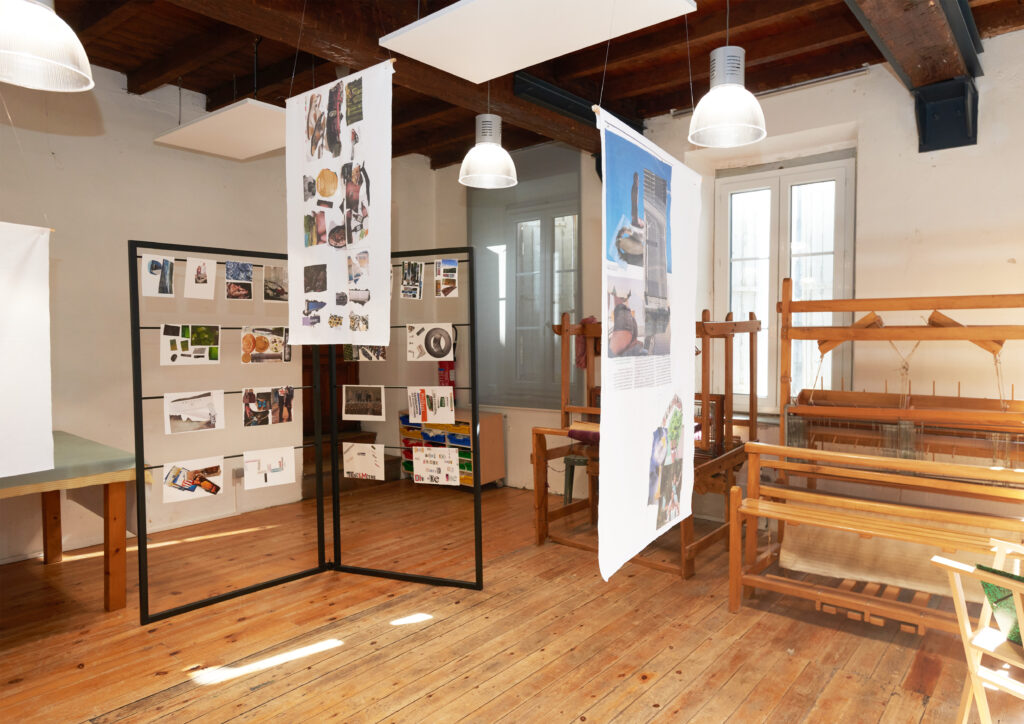
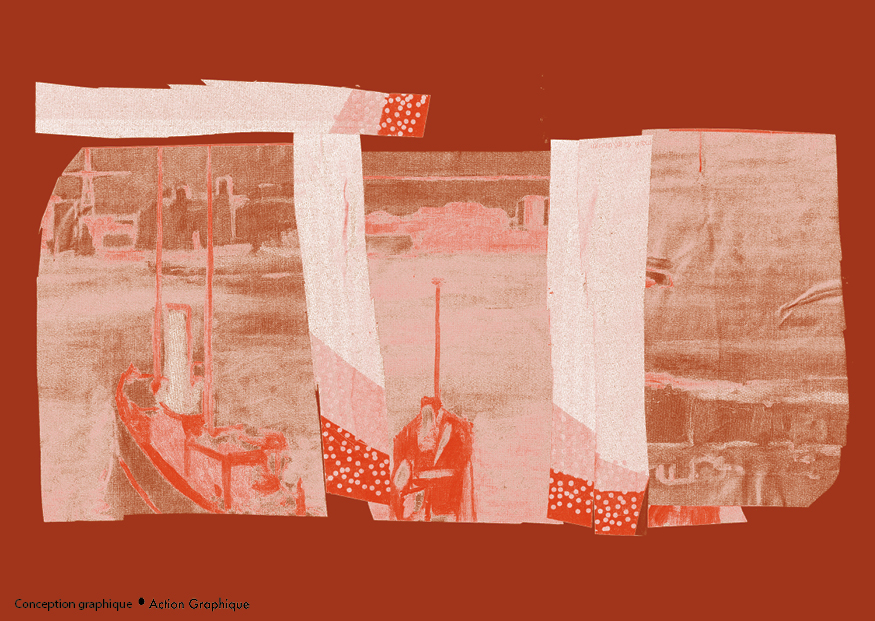
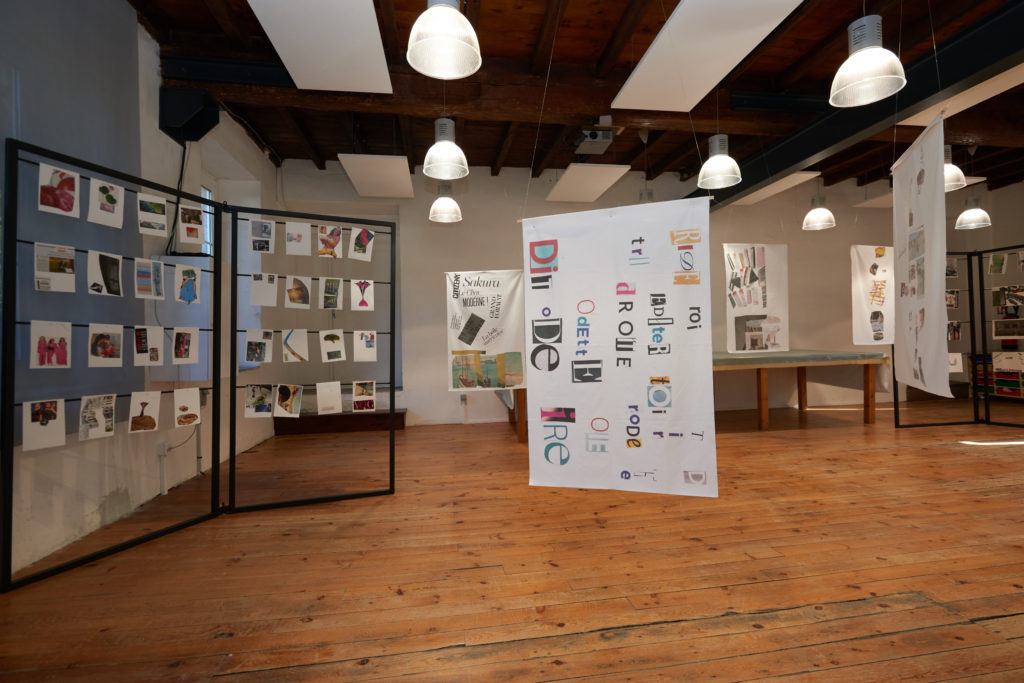
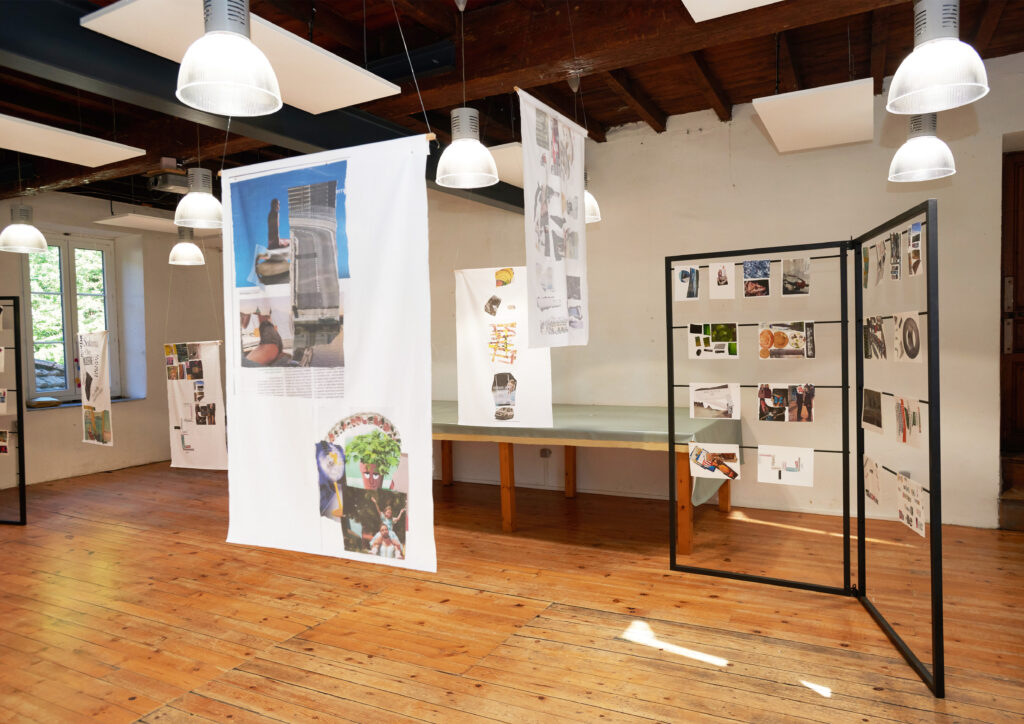
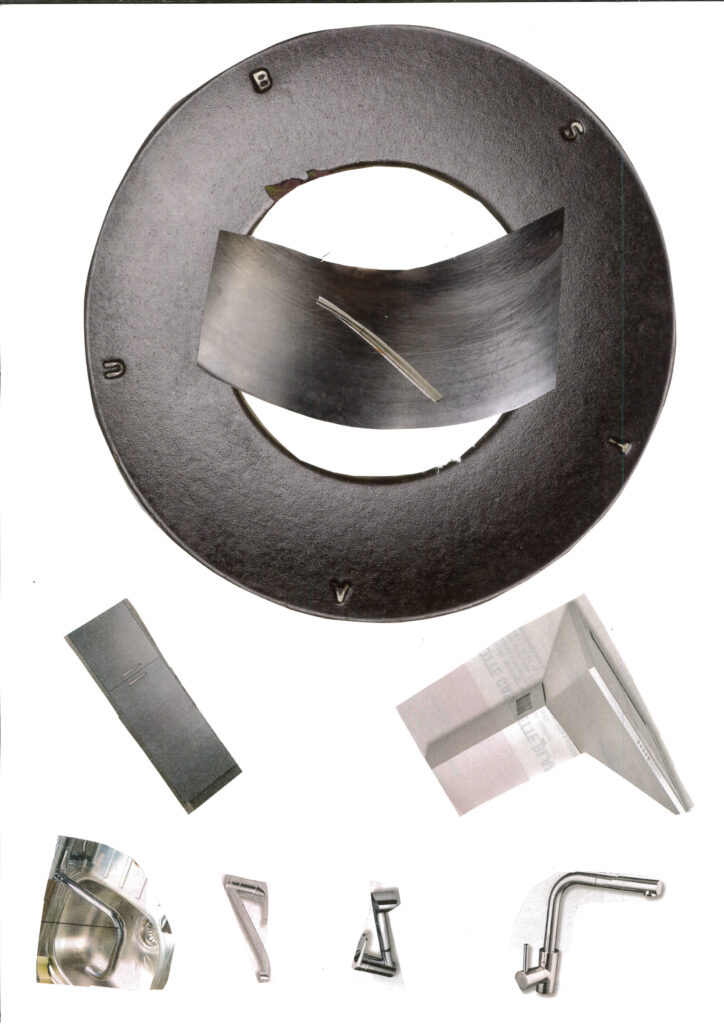
Open Your Eyes!
Period : January 2018 – February 2020
Team : Kadia Dabo, Kévin Cabaret
Location : Saint-Pons-de-Thomières, France
Partners : Jacques Brel Vocational High School, Frescatis Elementary School, Saint-Pons Hospital EHPAD, ASEI Frescatis, Sud Loisirs Association
Since 2013, a partnership between Frescatis Preschool and Jacques Brel Vocational High School has brought the annual Saint-Pons-de-Thomières Carnival to life. This intergenerational project unites the town’s educational institutions around collective creation and sharing. Led by second-year ASSP students (Support, Care, and Personal Services program), it centers on teaching choreography to preschoolers, which is then performed during the Carnival parade.
From 2018 onward, the project expanded with ETWAS association’s participation through Kadia Dabo and Kévin Cabaret, who introduced new artistic dimensions by working with high school students on costume design and the event’s visual identity. Through five to six annual workshops, the project developed through several phases.
The costume designs emerged from students’ musical choices, transforming them into visual extensions of the choreographies through colors, shapes, and symbols.
The high school students experimented with textile pattern production and reproduction, exploring various artistic techniques to create unique costumes. Body diversity workshops addressed self-acceptance and perspectives on others, considering each teenager’s morphology and identity.
Students also designed the event poster and graphic elements for communication. Finally, collaborative sessions with ASSP students were organized to collectively plan, implement, and evaluate visual arts workshops for preschoolers.
Through Open Your Eyes!, art became both a unifying tool and means of expression, enabling students to actively engage in a collective project while developing critical perspectives and creativity.
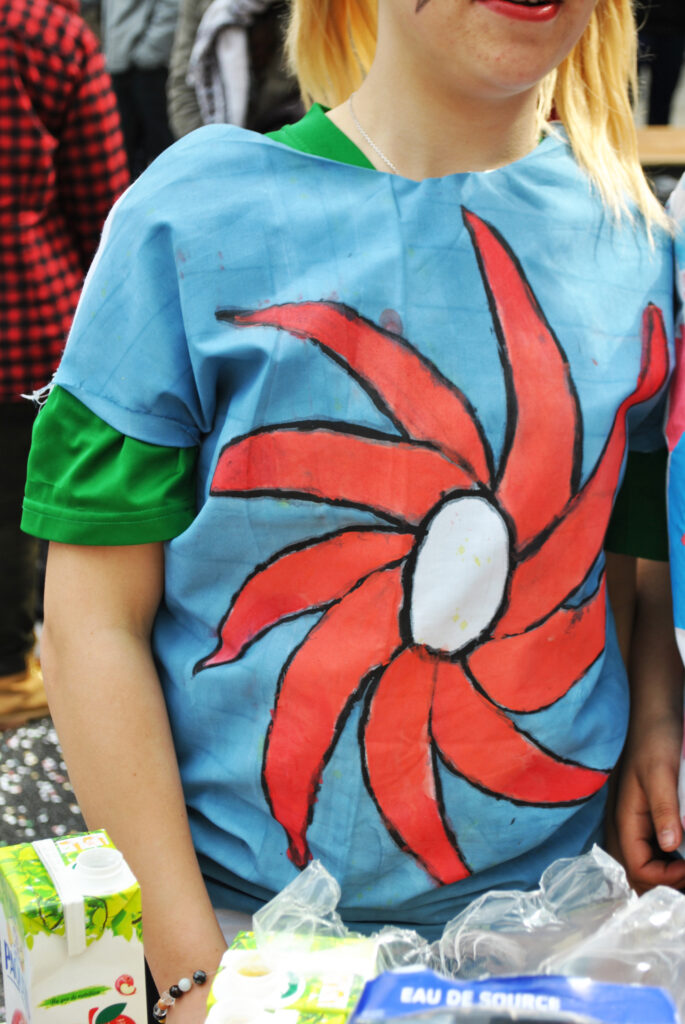
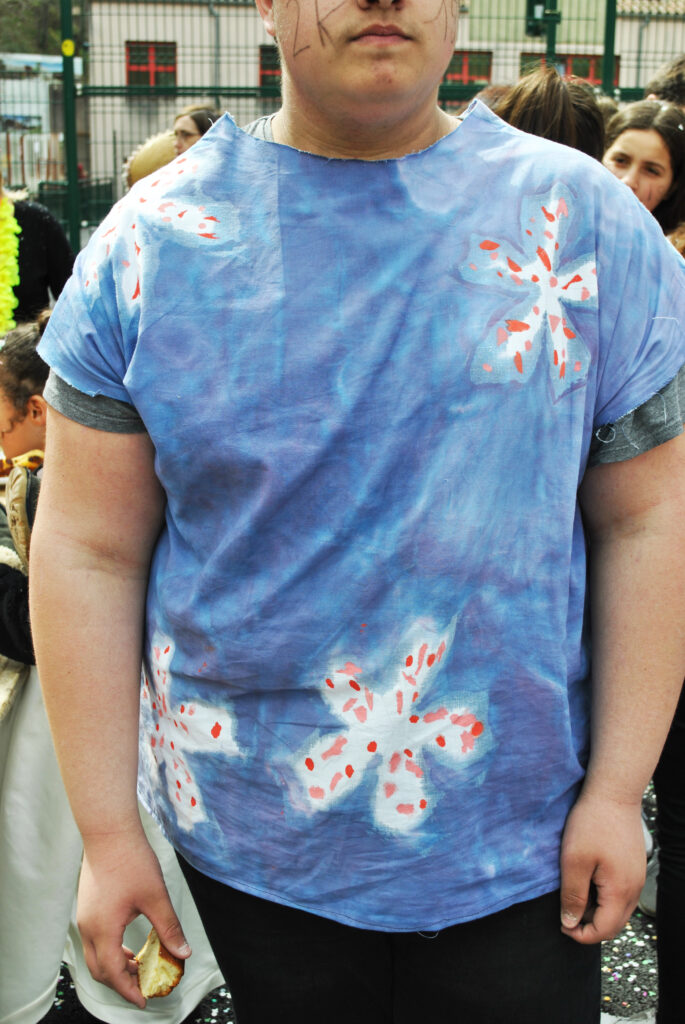
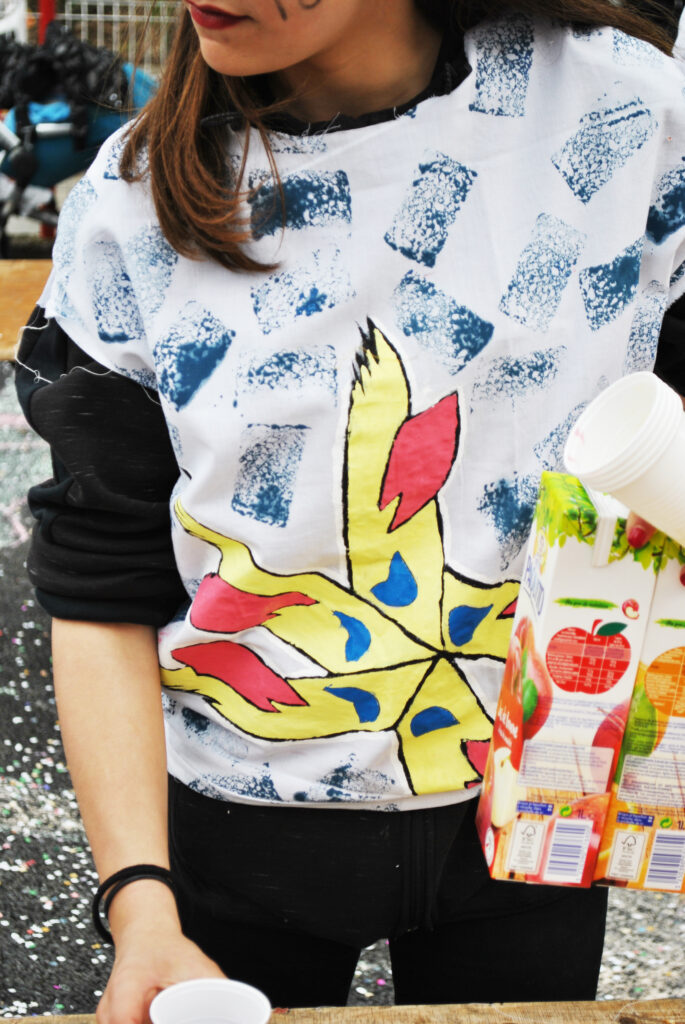
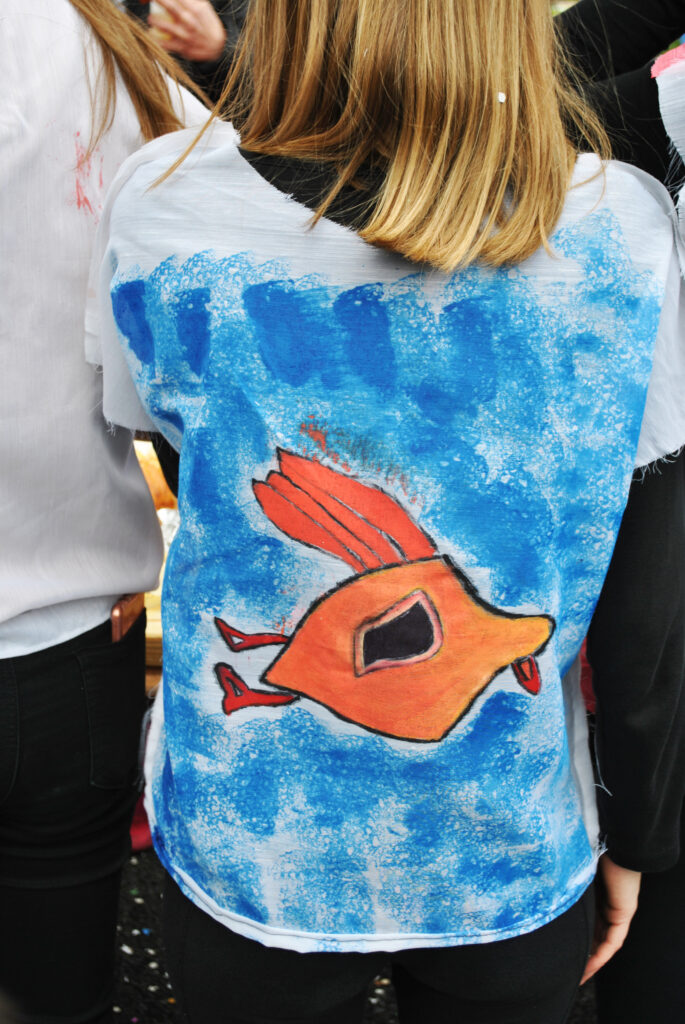
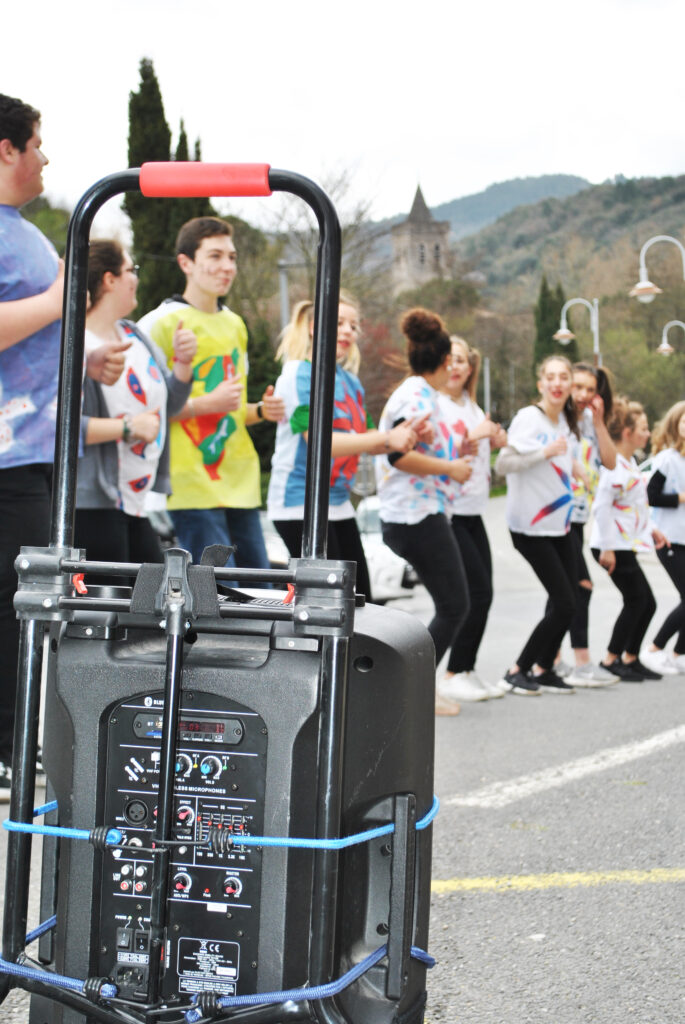
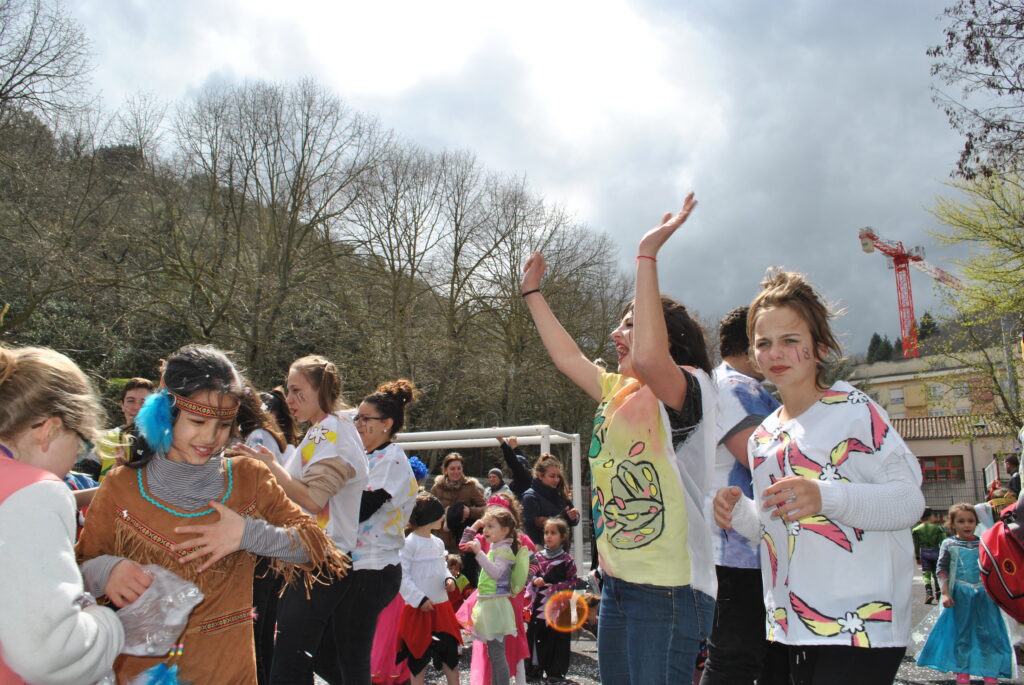
L’identité des lieux
Period: May 2017
Team: Kadia Dabo, Kévin Cabaret
Location: Saint-Maximin-de-la-Sainte-Baume, France
Partners: L’Oasis pediatric psychiatric day hospital
In 2017, the L’Oasis pediatric psychiatric day hospital in Saint-Maximin-de-la-Sainte-Baume commissioned an artistic project aimed at structuring and transforming its work environment. Conceived and led by Kadia Dabo and Kévin Cabaret, this project actively involved both the children receiving care and the medical team in a collective creative process.
This project was based on three fundamental principles: establishing spatial markers within the hospital environment, using memory as a creative catalyst, and enabling users to appropriate their surroundings both physically and mentally. Over two full days, several permanent installations were designed and implemented, contributing to better spatial legibility and a stronger sense of belonging.
With the children, experimental work involving paint and wooden shapes was conducted. By manipulating different sizes and textures, they created an interactive, modular collective artwork installed in their dedicated space. This evolving mural offered endless possibilities for recomposing new visual perspectives.
The medical team was invited to explore their memories and attachments to the space through a series of drawings inspired by both the old and new facilities. By combining different forms and graphic elements, a collective visual composition emerged, reflecting a shared memory of the space. These compositions were projected and transferred onto the walls, contributing to the visual identity of the place.
A final component of the project involved structuring and clarifying the day hospital’s spatial organization by designing and installing a wayfinding system. Created by Kadia Dabo and Kévin Cabaret, modular plaques handmade from local ash wood by a carpenter were installed to clearly identify different areas and allow for potential reallocation of spaces. This customizable system facilitated users’ appropriation of the space while improving orientation.
Thus, L’identité des lieux provided a sensitive and tailored response to the needs expressed by the day hospital. By combining visual arts and design, this project transformed the space in lasting ways, promoting users’ well-being and autonomy.
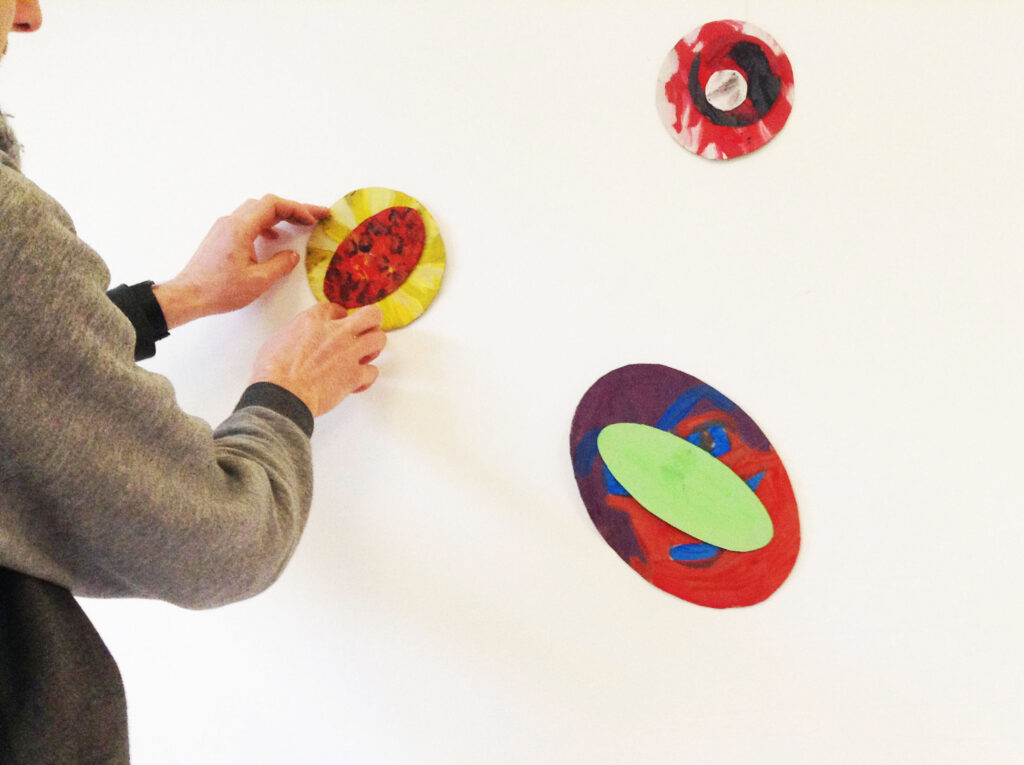
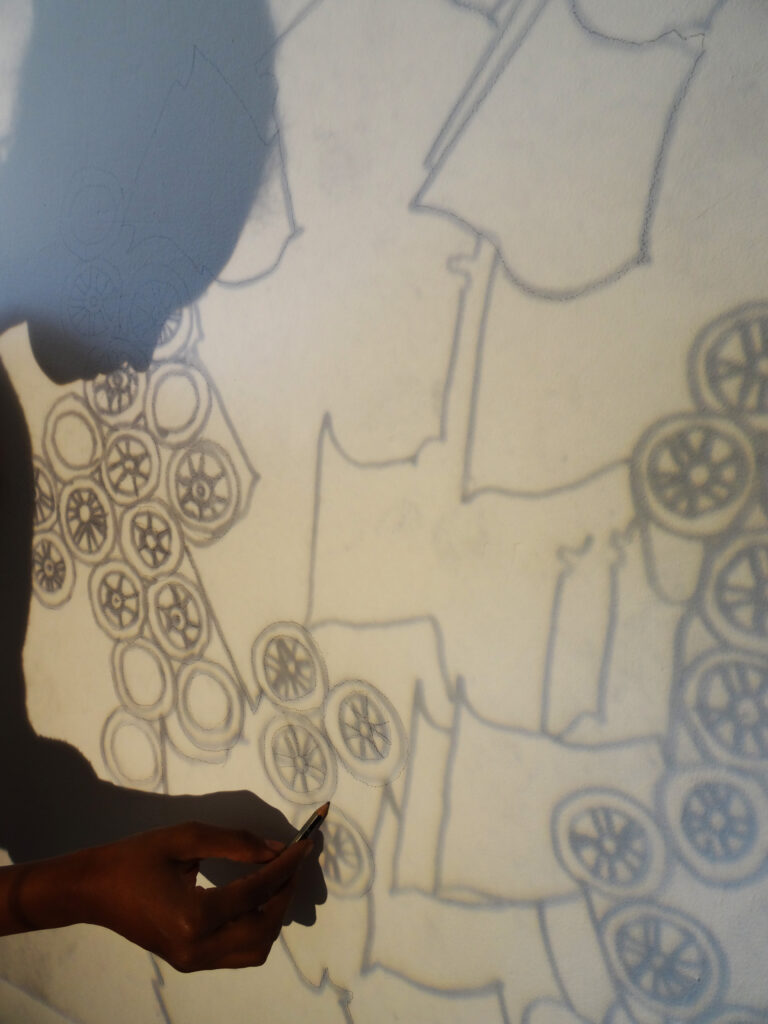
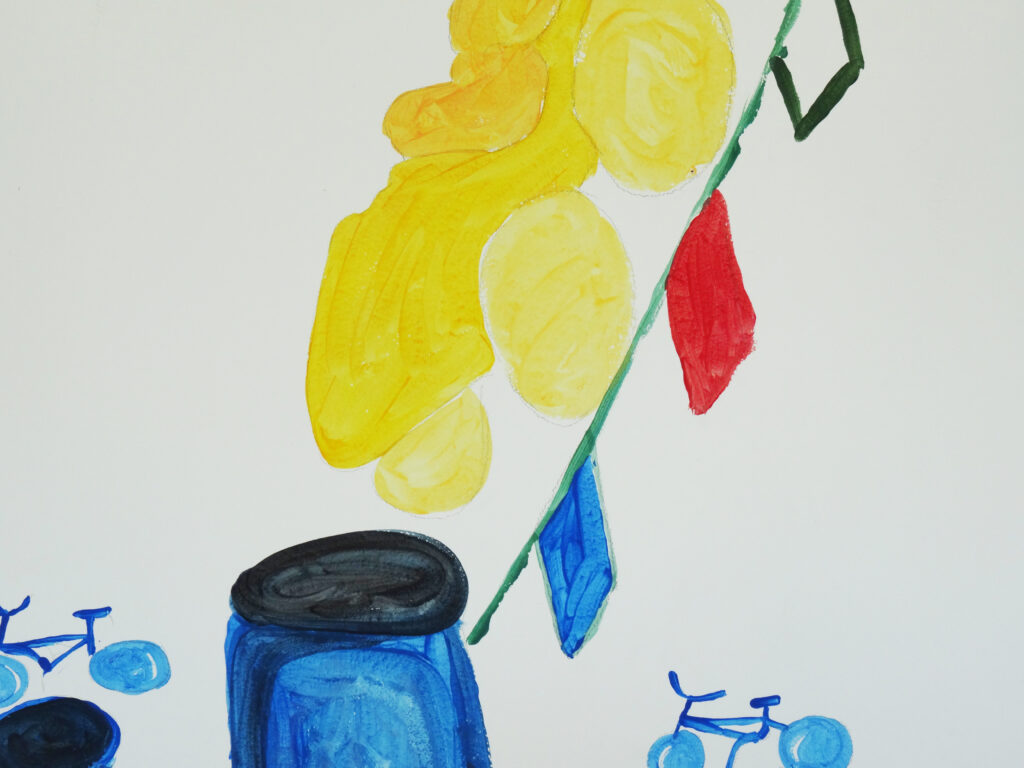
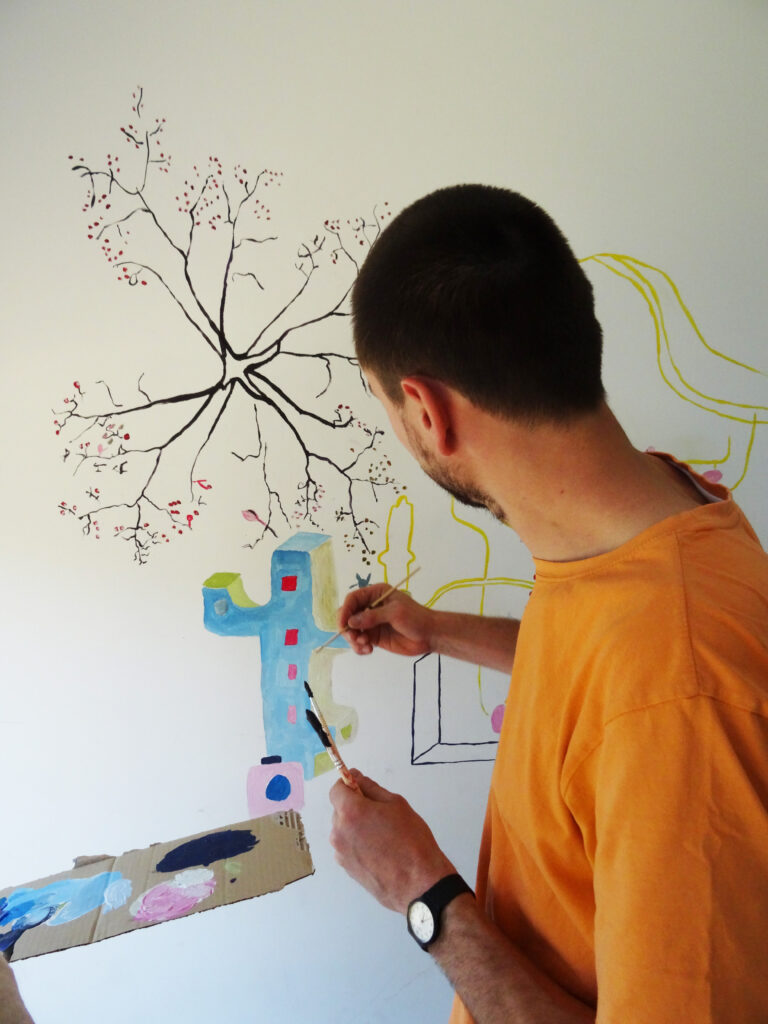
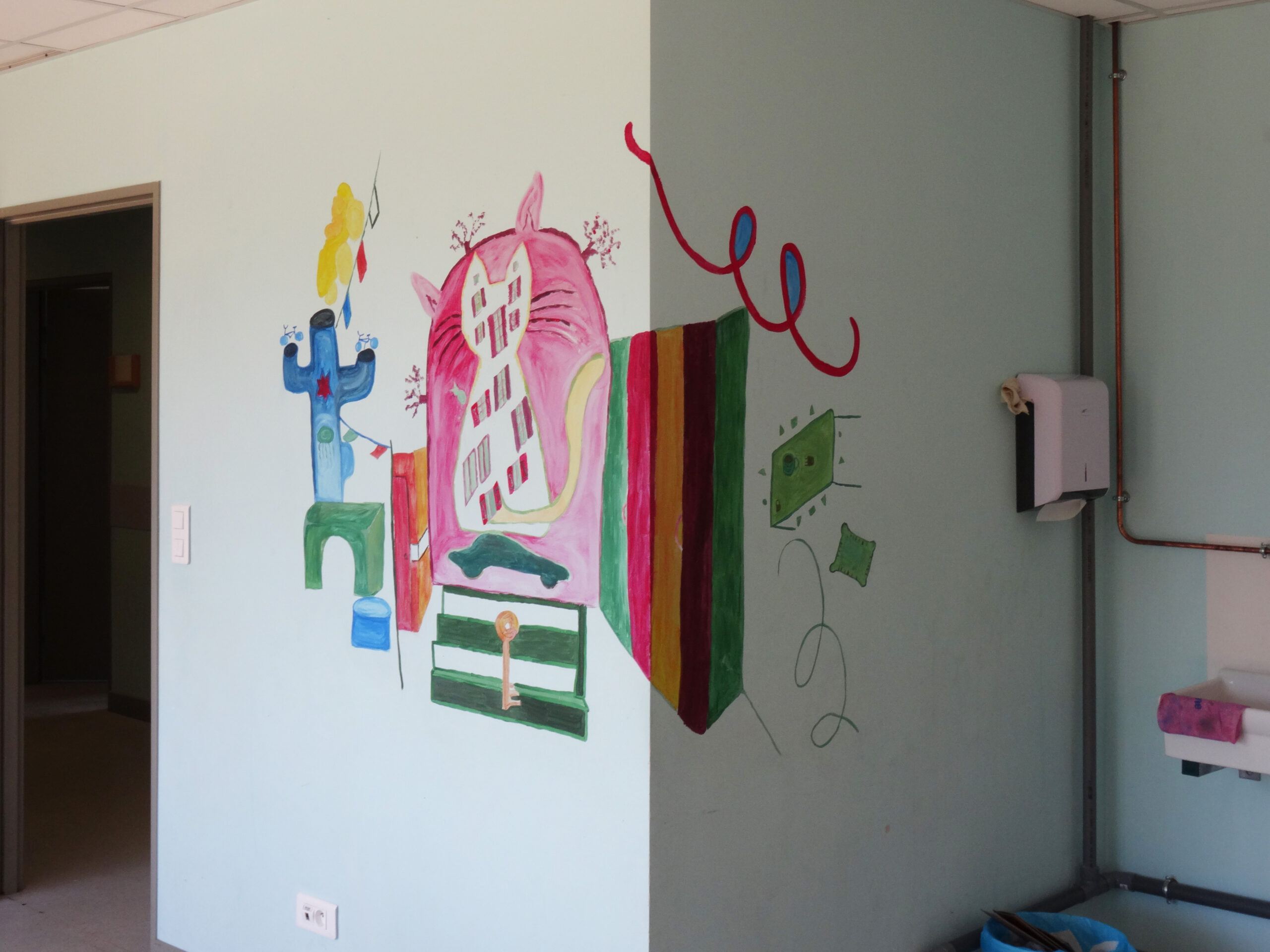
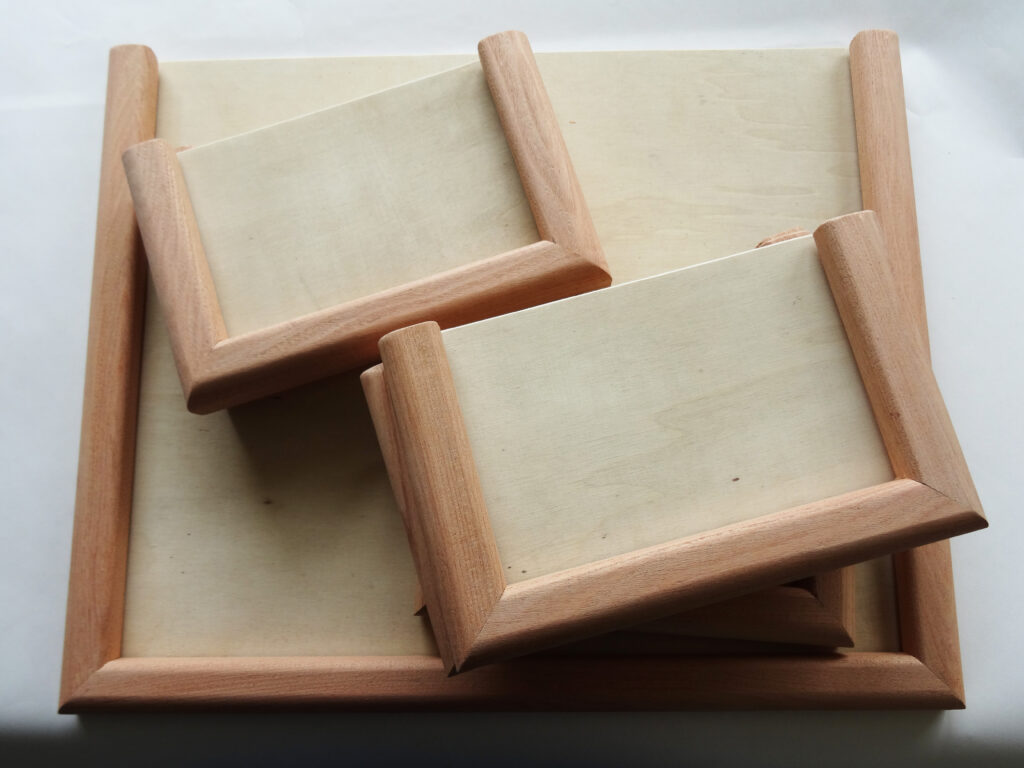

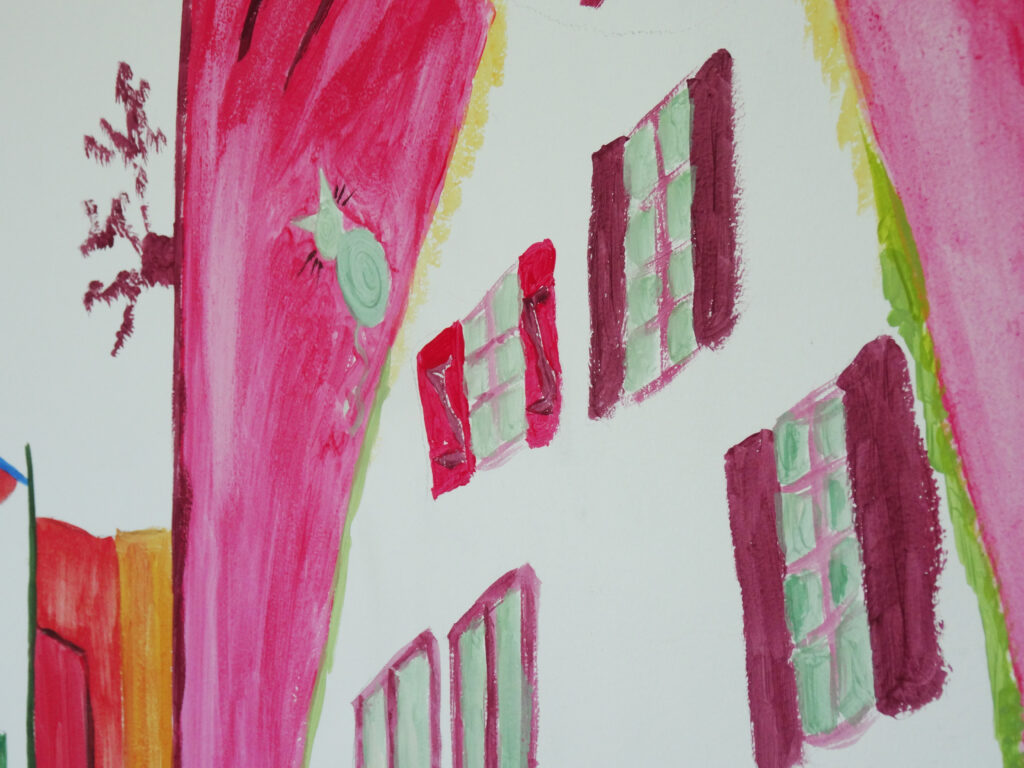
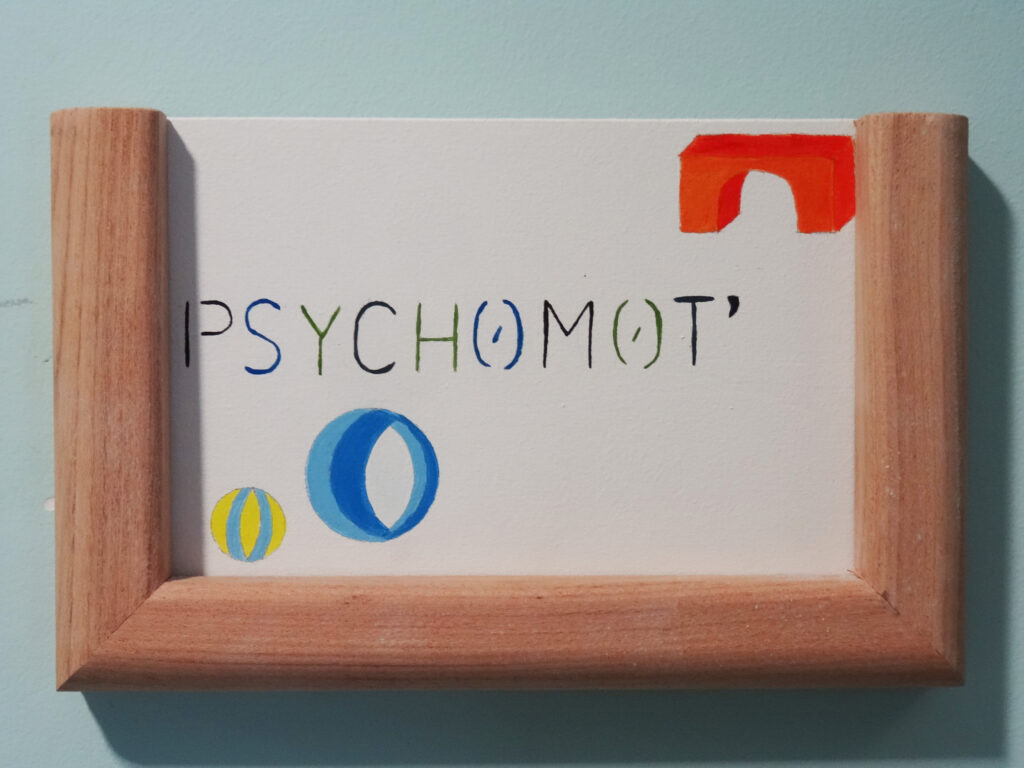
ETWAS Chantier
Period: July 2016 – March 2020
Team: Kadia Dabo and Kevin Cabaret (development and artistic, cultural, and pedagogical direction), Guilhem Causse, Jörg Neitzert, Paul Lappin, Thomas Arthur Spallek (guest artists and designers)
Location: Primary schools in Saint-Chinian, Roquebrun, Cazedarnes, Saint-Chinian middle school, France
Partners: DRAC Occitanie (French Ministry of Culture), Ministry of National Education, City of Saint-Chinian, City of Cazedarnes, City of Roquebrun, Parent-teacher associations
Launched in 2016 by Kadia Dabo and Kévin Cabaret, ETWAS Chantier was conceived as an action-research project exploring the interaction between art, design, and pedagogy in school settings. Developed in collaboration with teachers, students, and local cultural actors, it aimed to examine the role of art in education and experiment with its potential as a driver for pedagogical innovation.
Rooted in a participatory approach, the project unfolded over four years of experimentation, evolving according to contexts and identified needs. Each year, a new traveling exhibition, created with artists invited by Kadia Dabo and Kévin Cabaret, was installed in schools and served as a starting point for interventions. New methodologies were implemented with educational teams, giving rise to various forms of collaboration: project development with teachers and students, exhibition curation and scenography with classes, cultural mediation for diverse audiences, co-creation workshops, design and production of exhibition furniture, graphic design, publishing and documentation of processes, as well as the implementation of presentation and knowledge-sharing systems.
From 2016 to 2021, ETWAS Chantier expanded across several educational institutions in the Saint-Chinian area, particularly at Saint-Chinian elementary and middle schools. This work was enriched by the direct involvement of students, teachers, and families who actively participated in various project stages. Each initiative strengthened the connection between youth and contemporary culture, positioning art as a tool for dialogue, empowerment, and transformation.
Beyond artistic learning, this action-research opened a space for collective reflection about how school environments can be reclaimed as places for experimentation and exchange. By engaging students not just as participants but as project co-authors, and involving families in public presentations, ETWAS Chantier helped strengthen social bonds and promote an inclusive, shared approach to culture.
